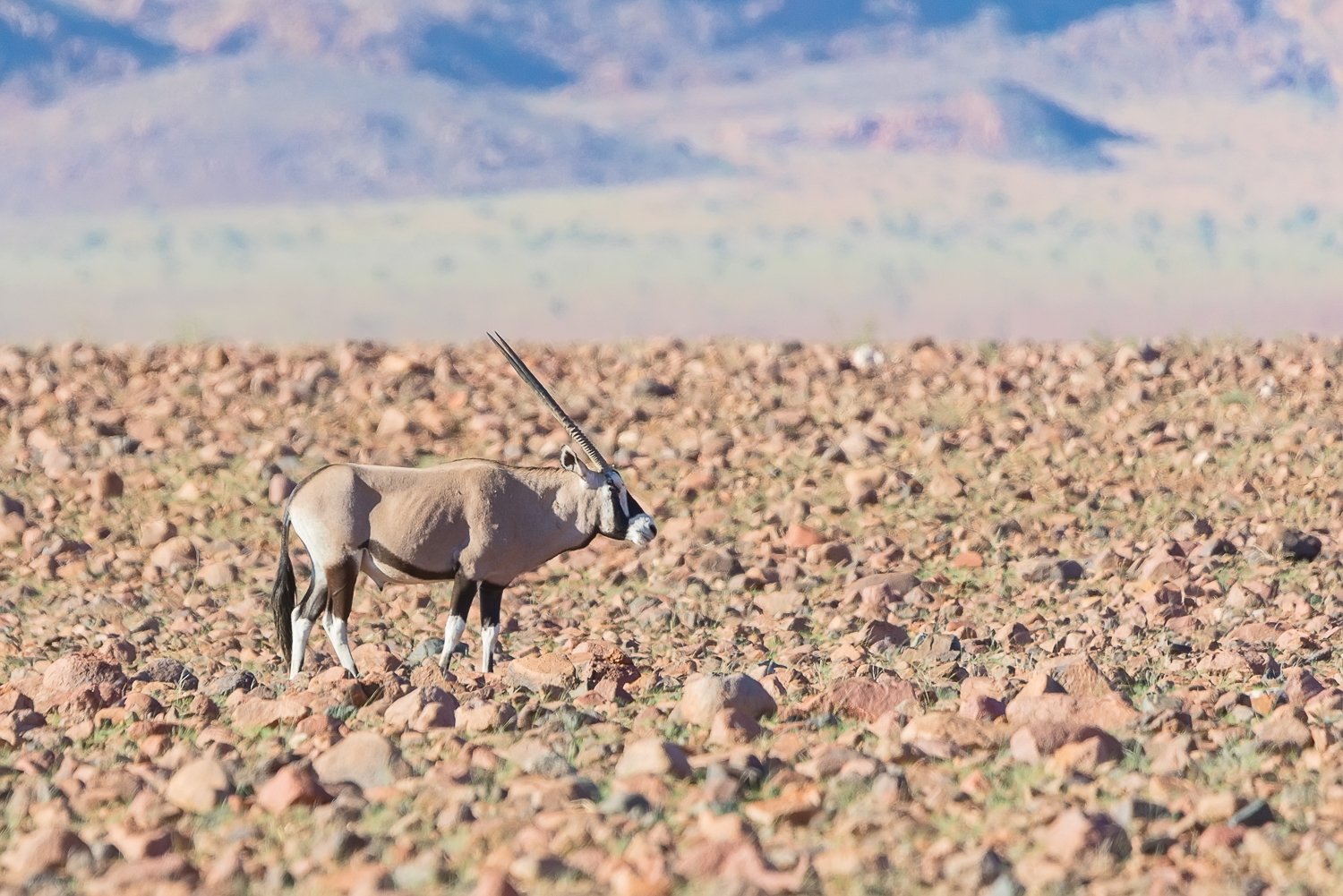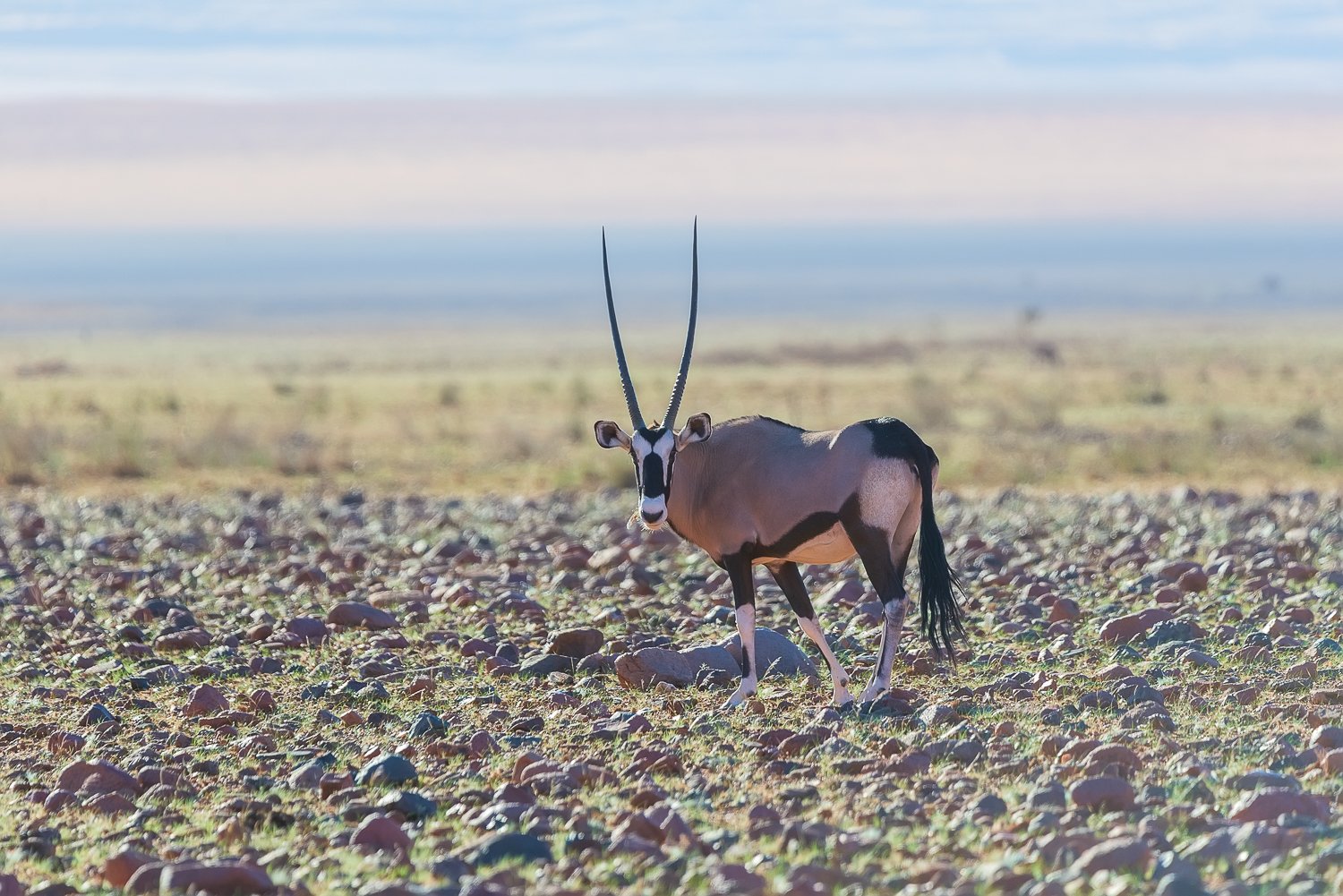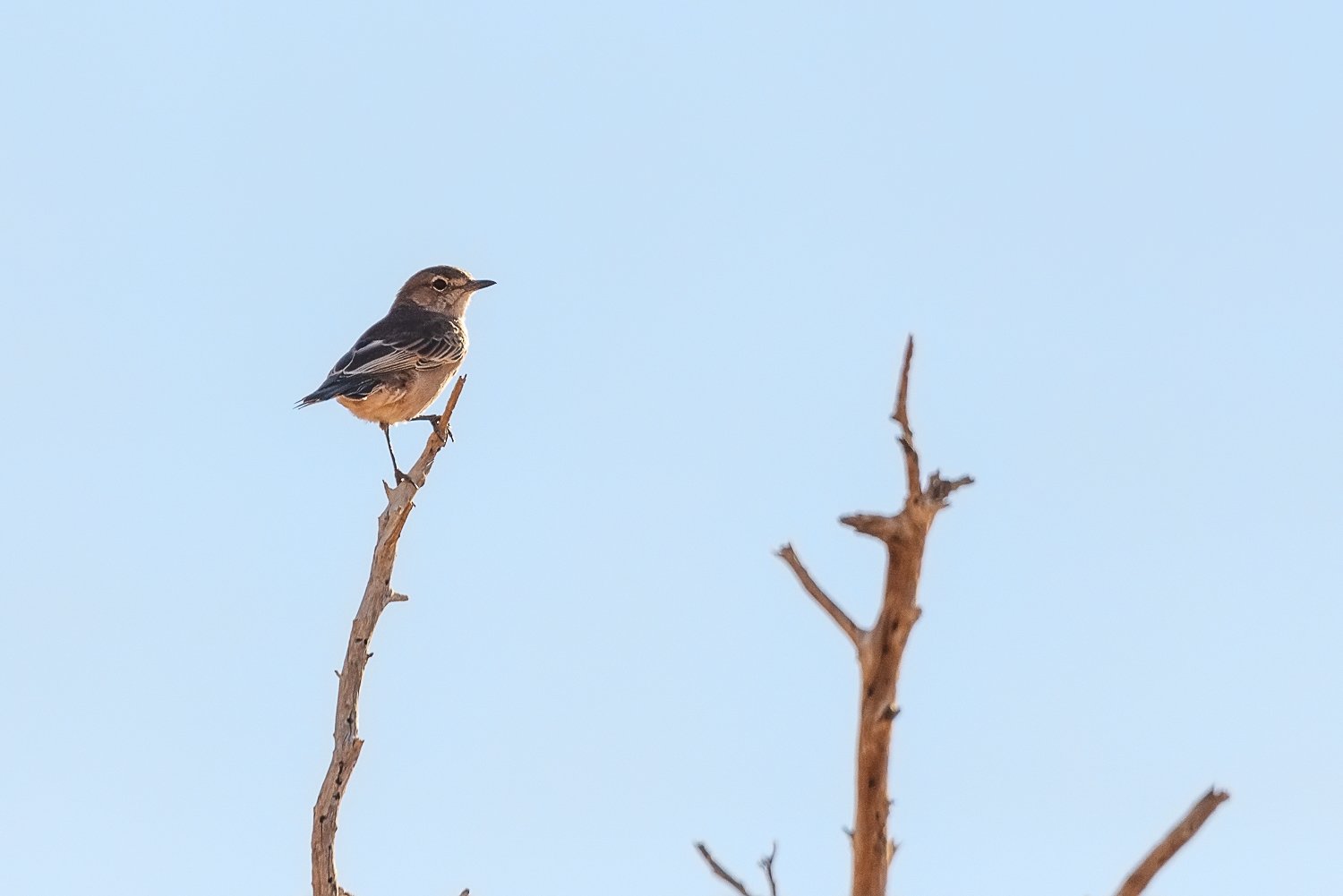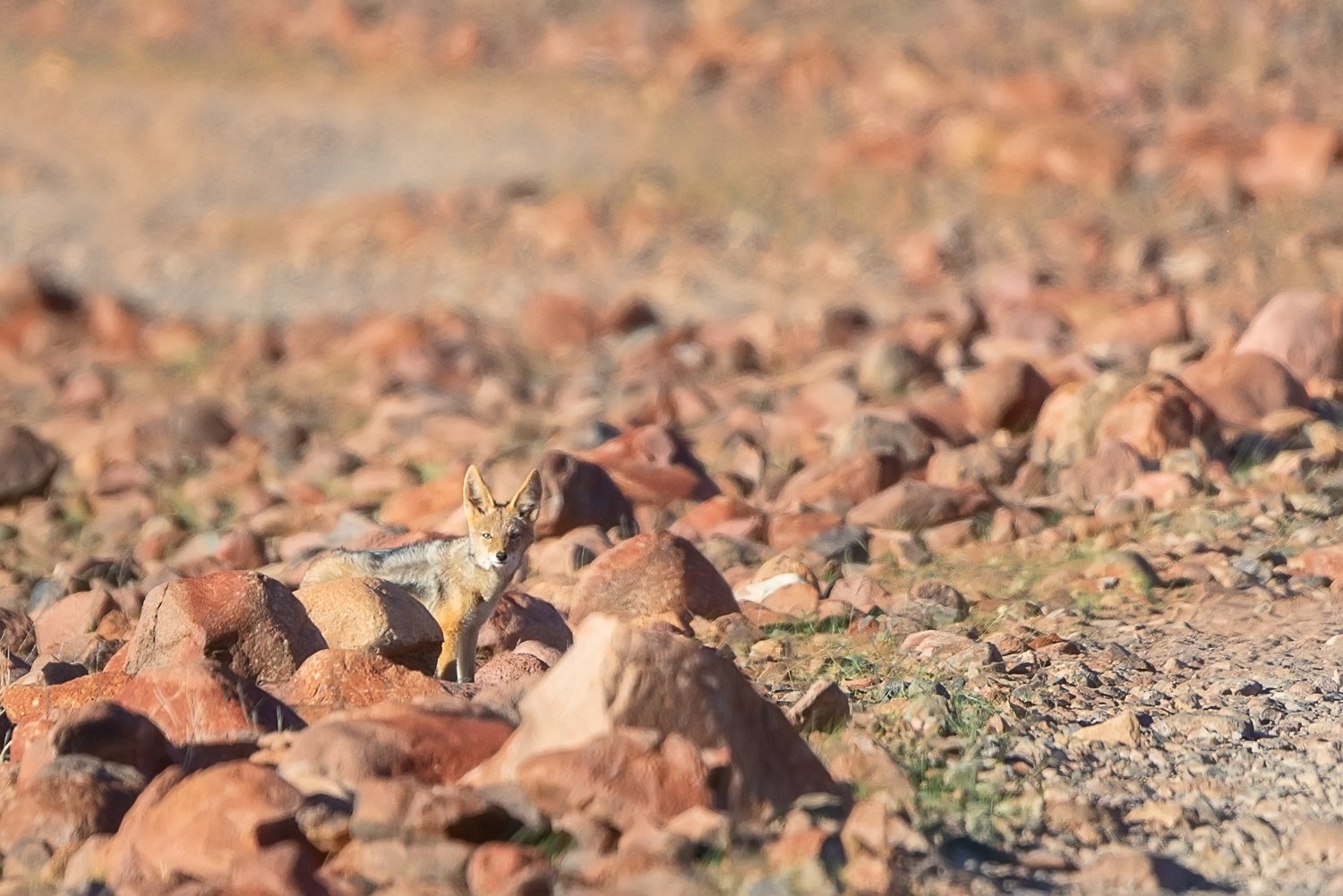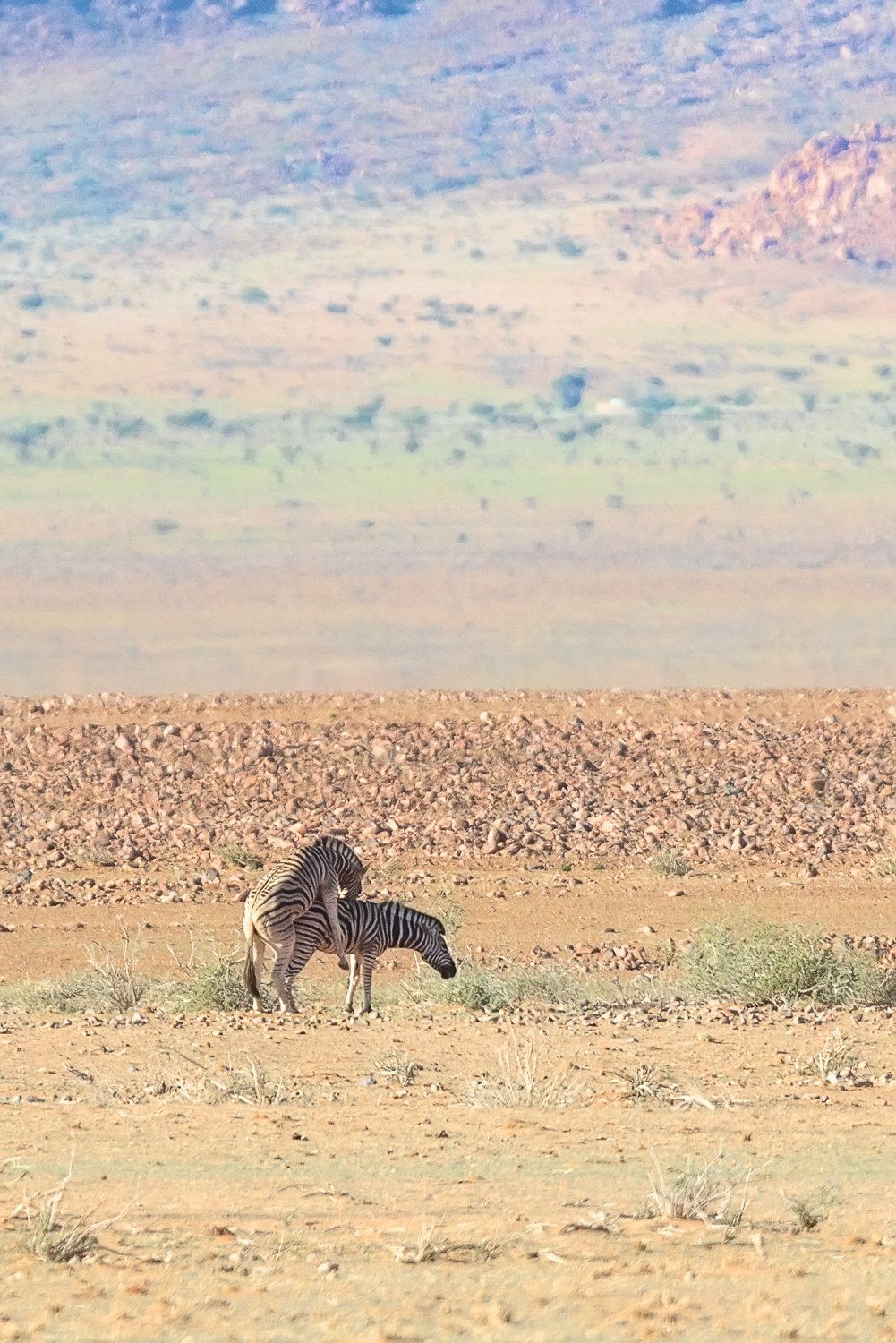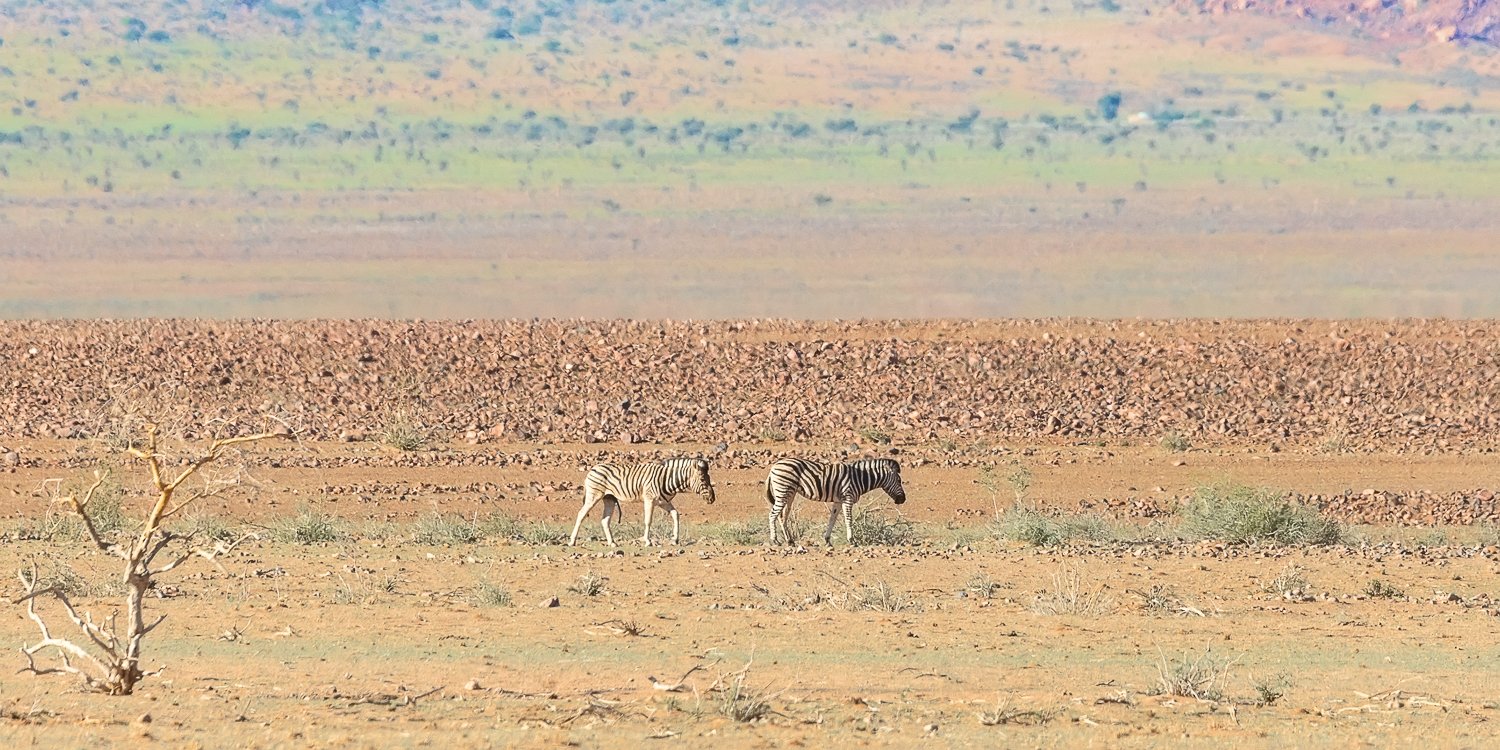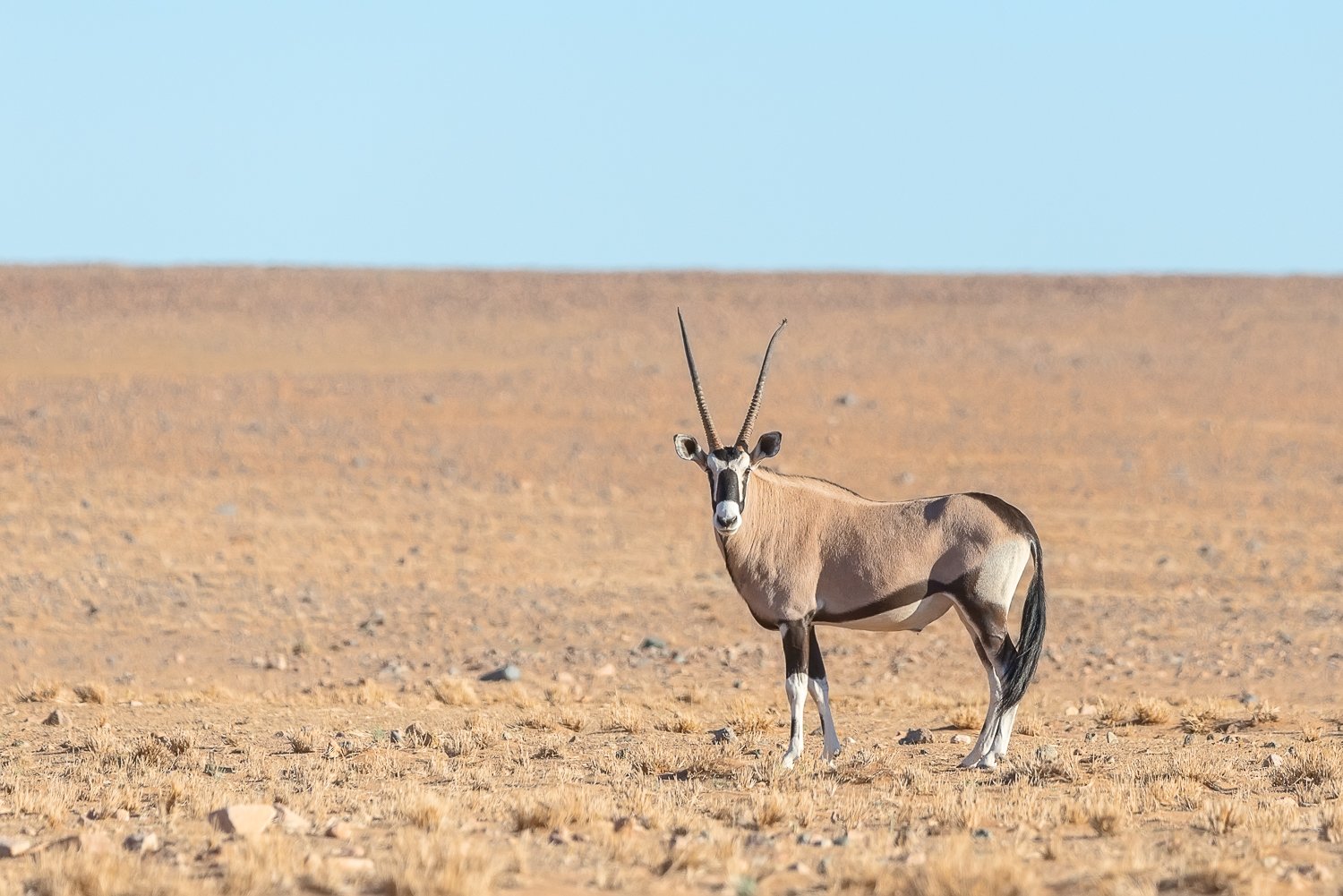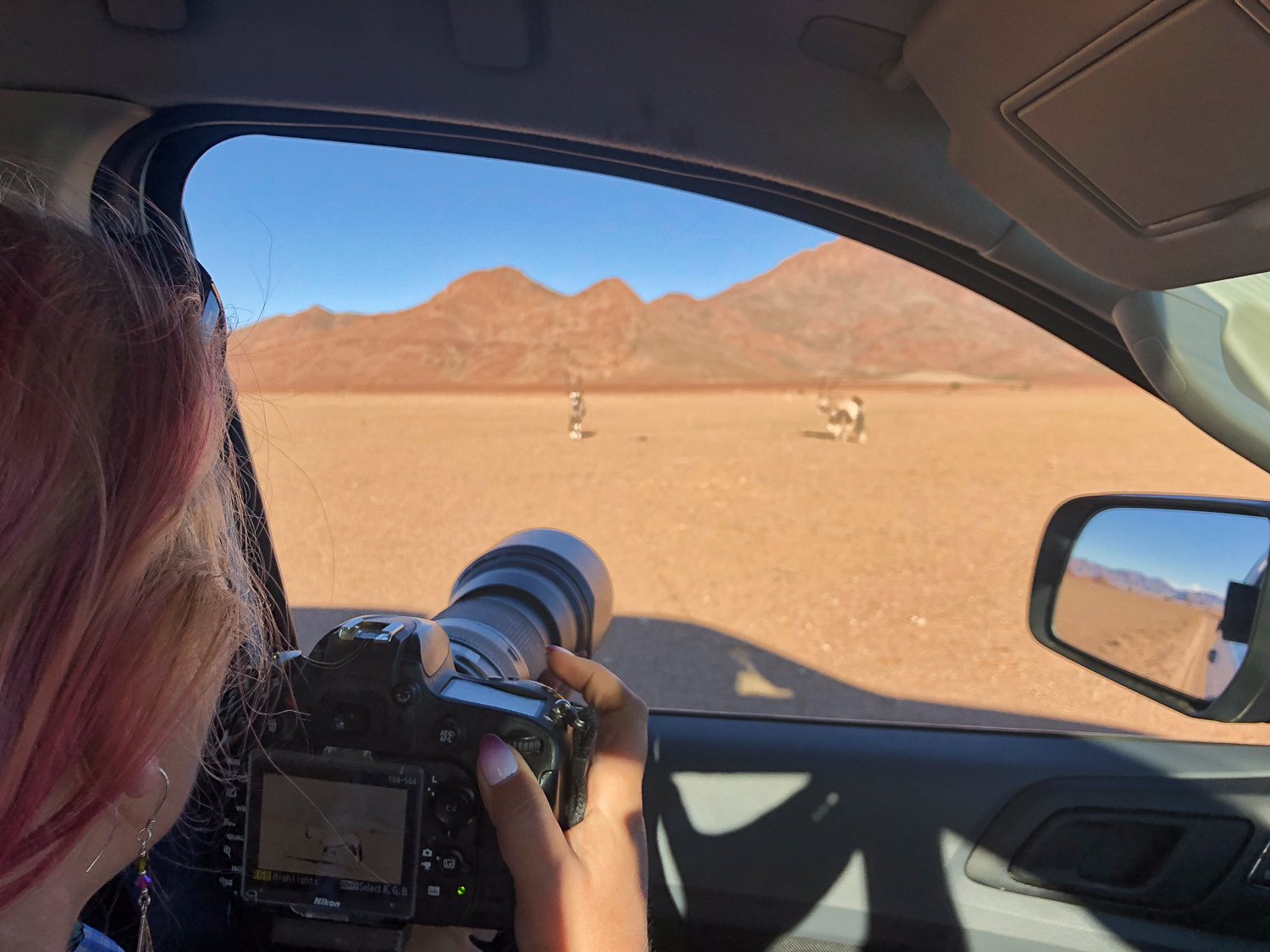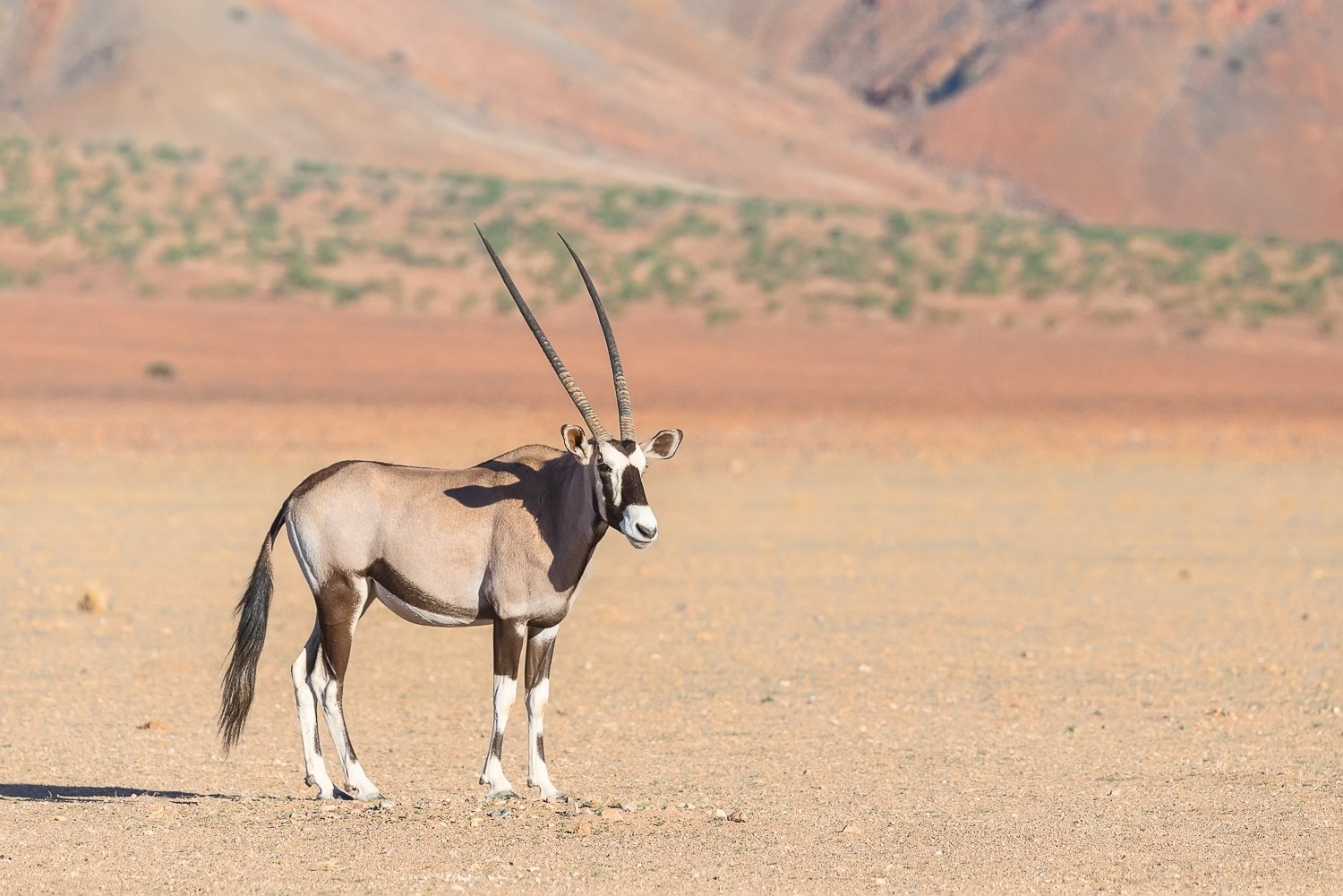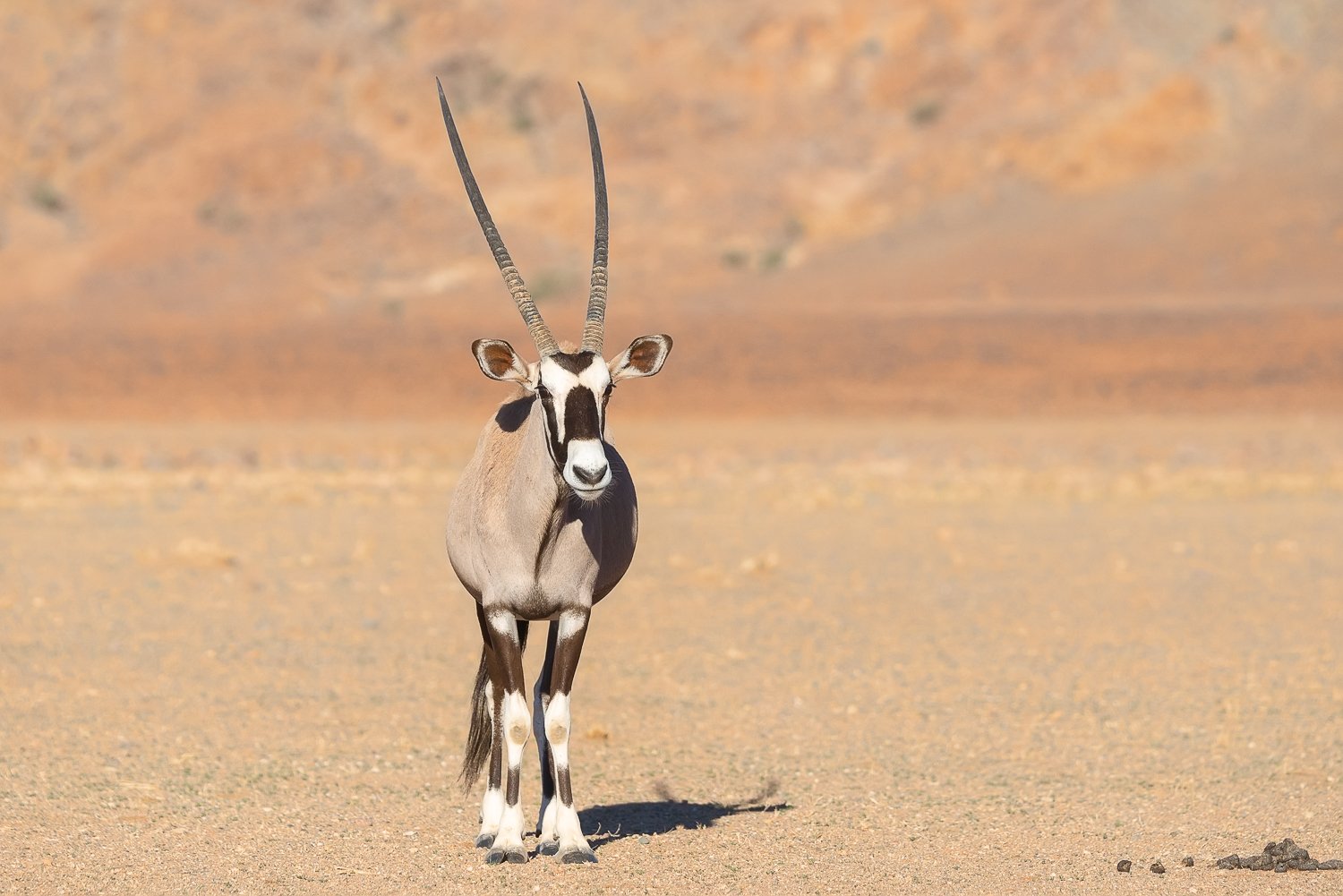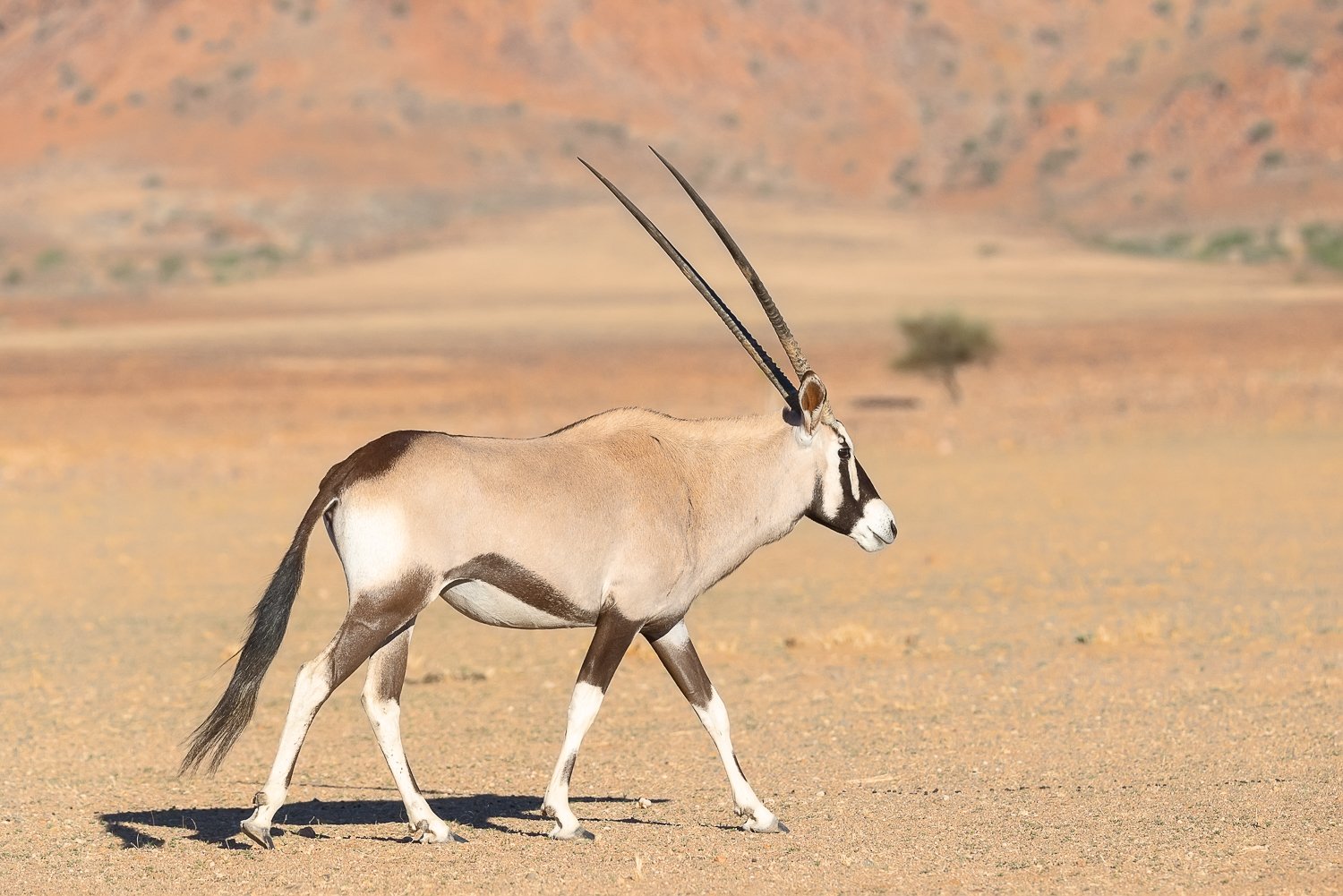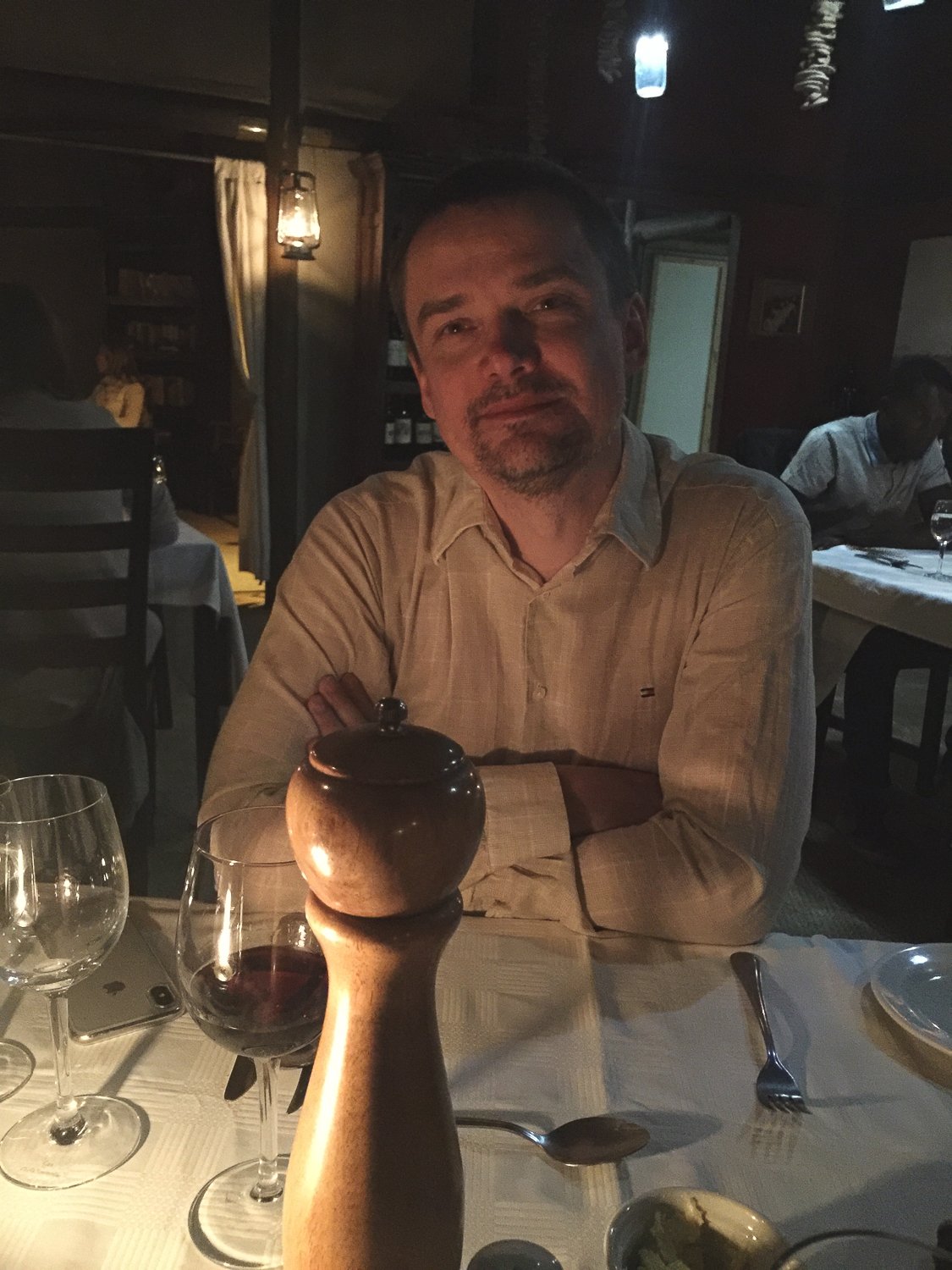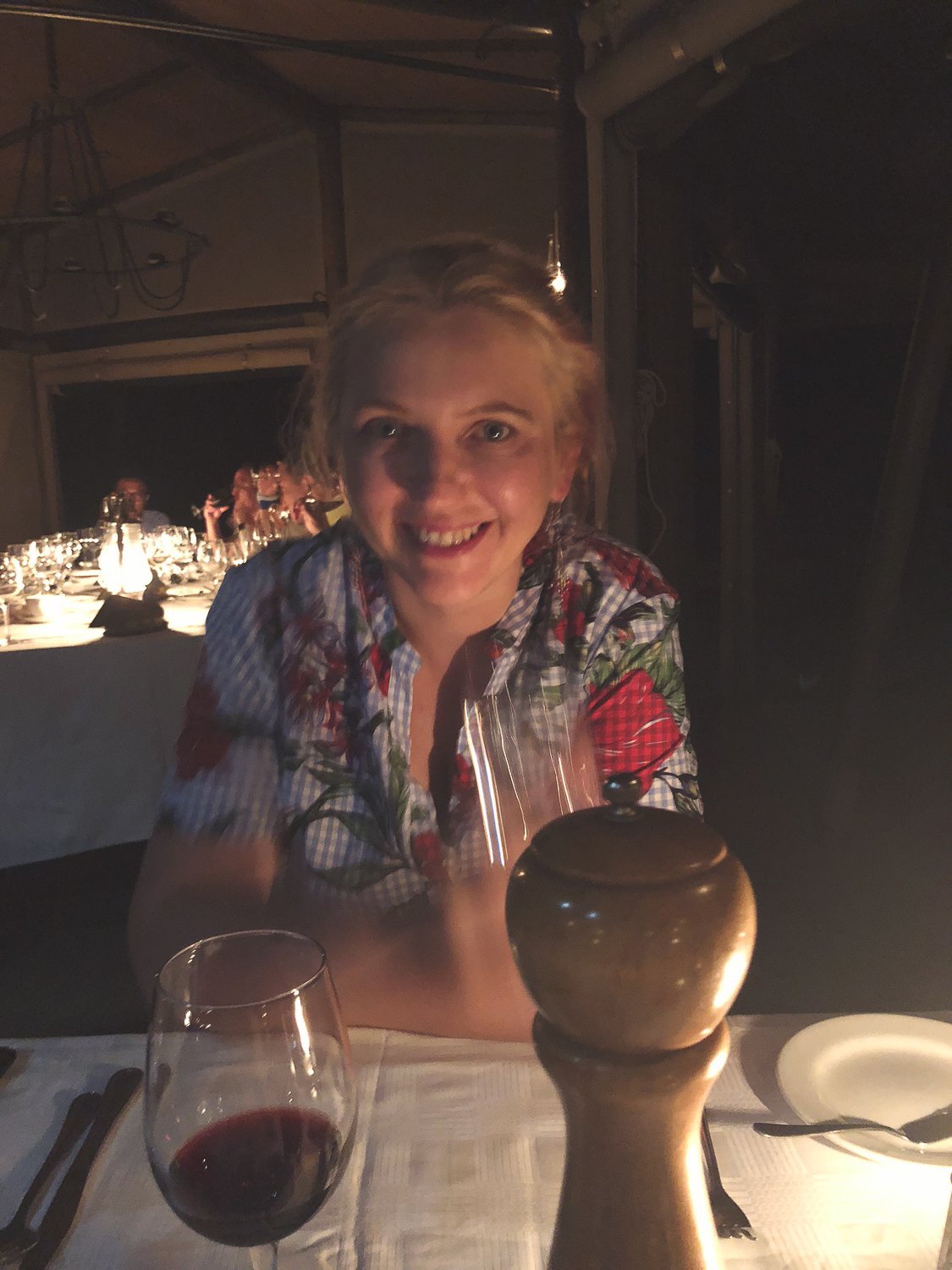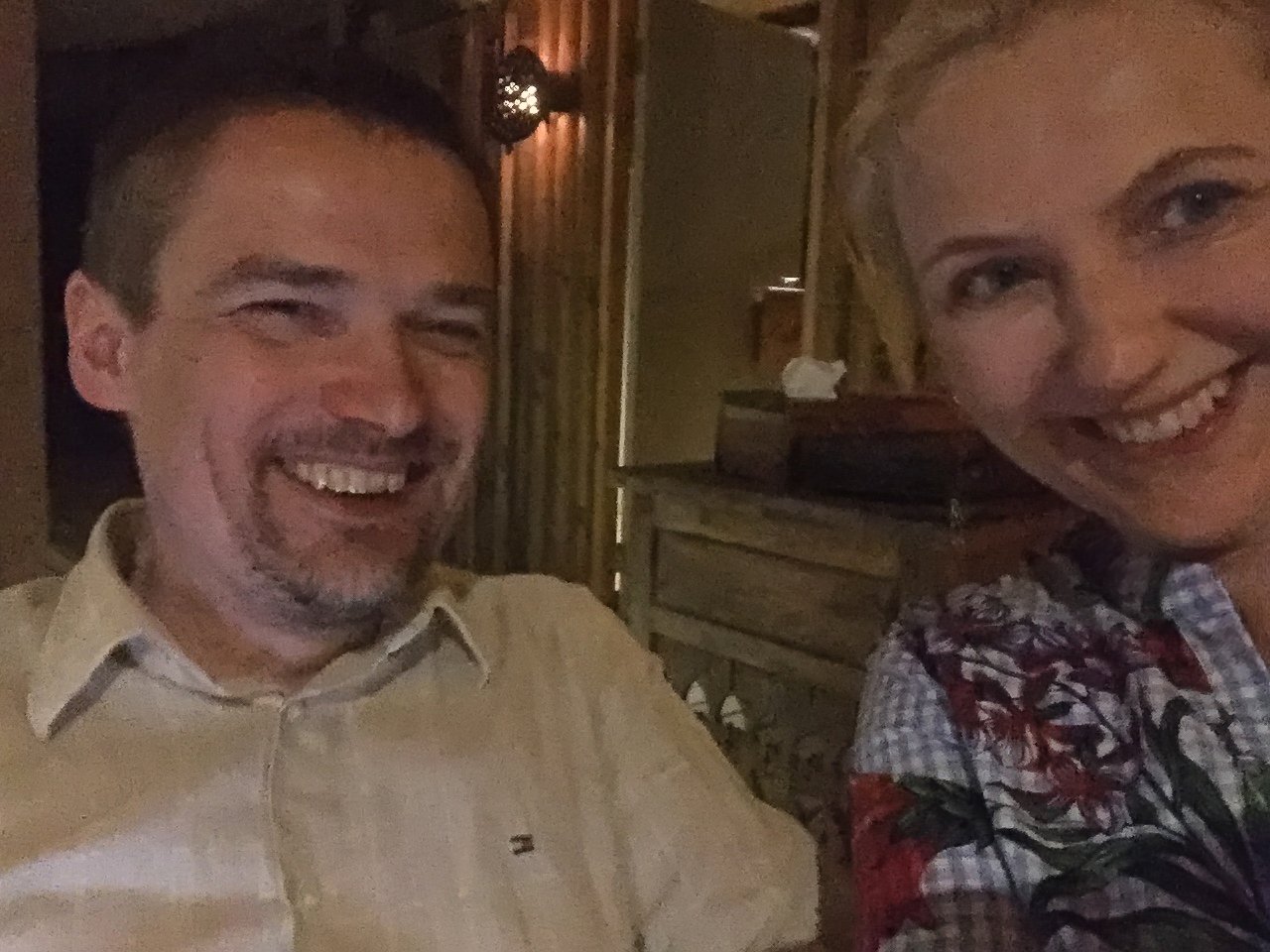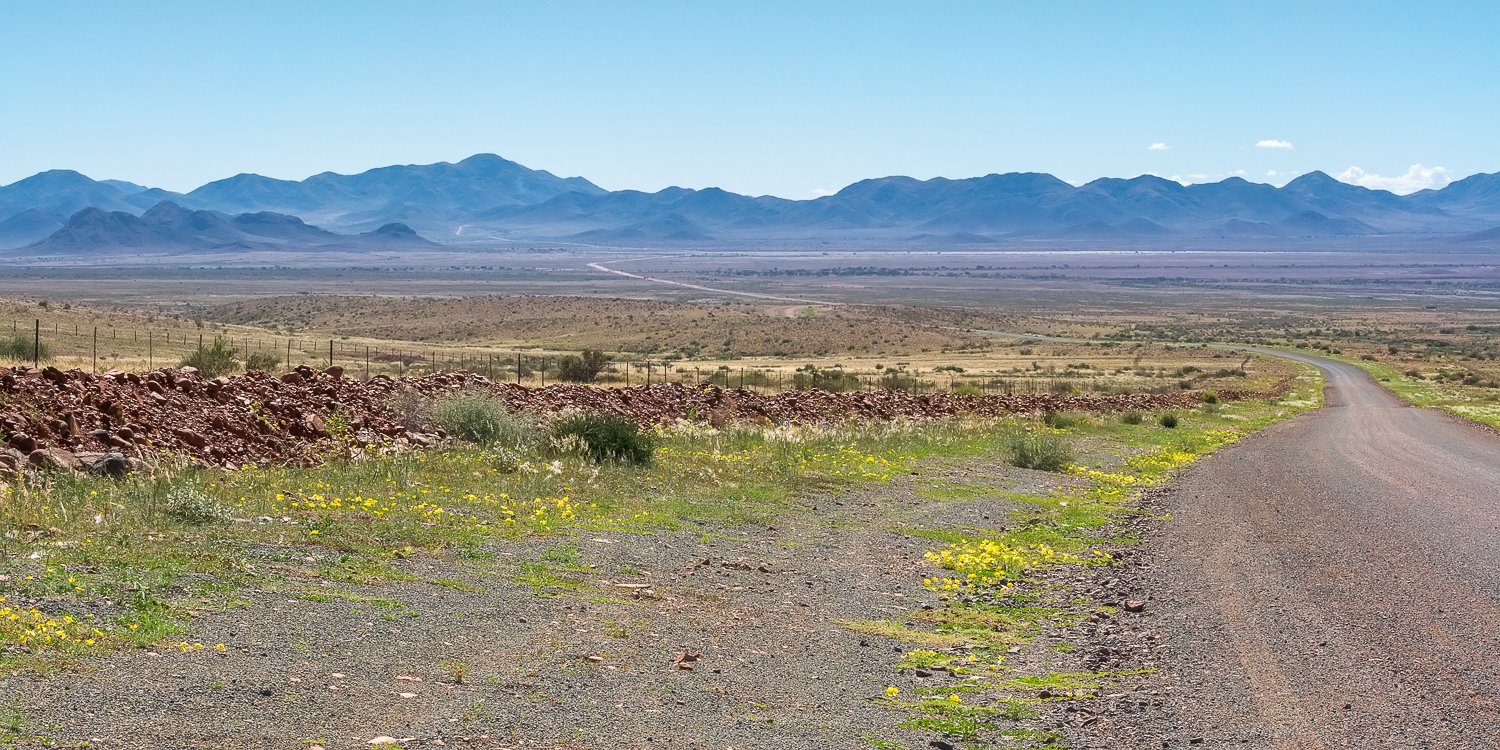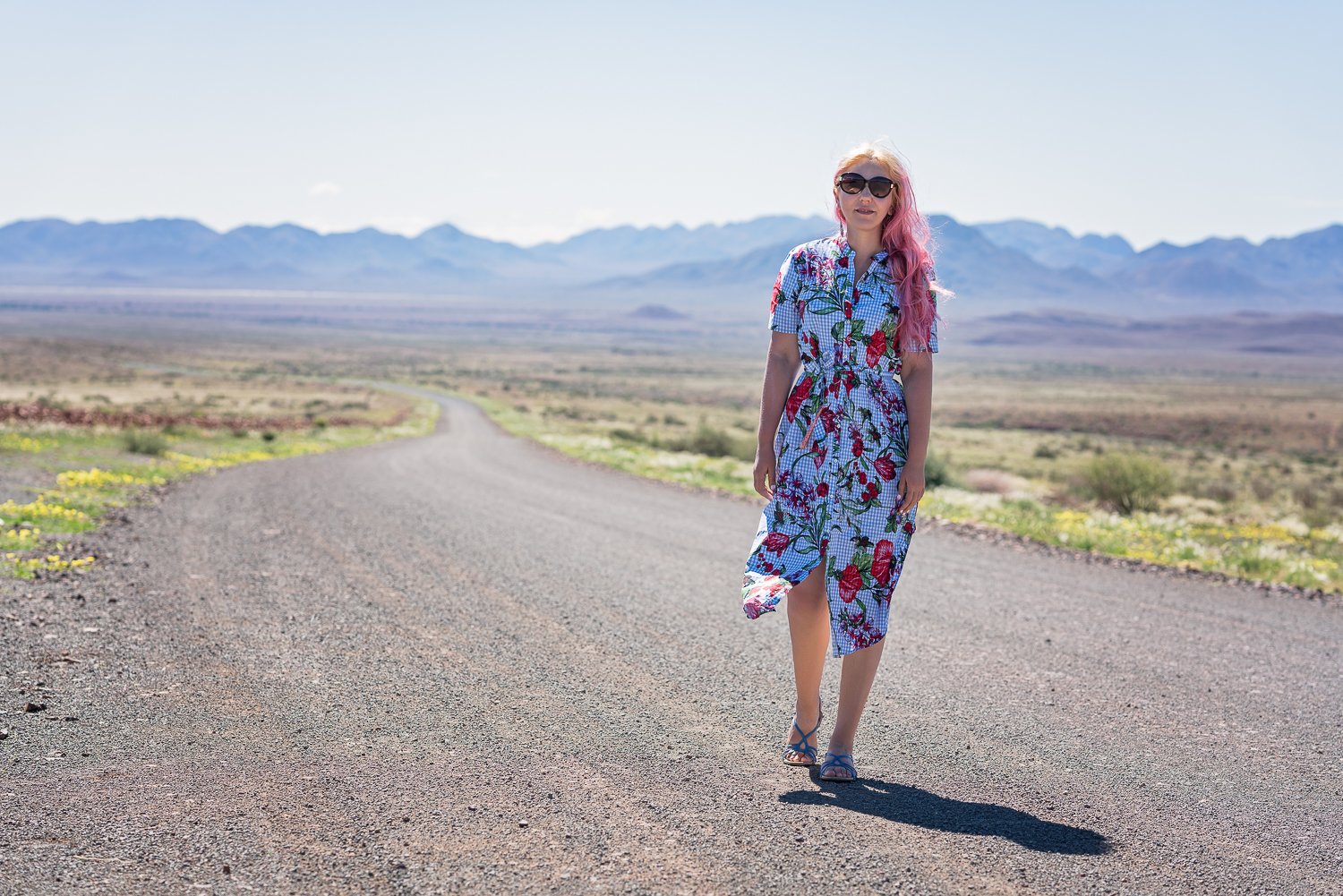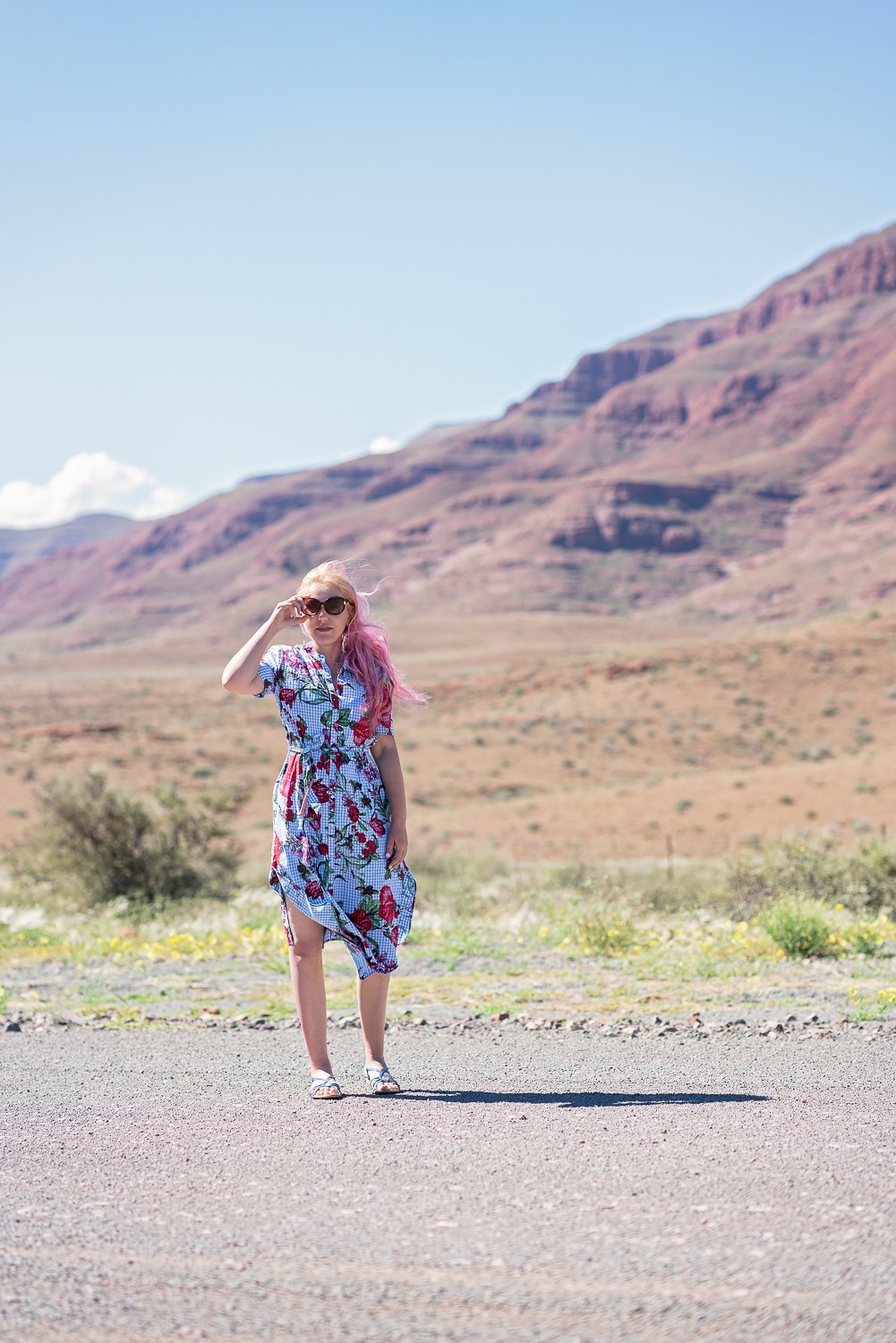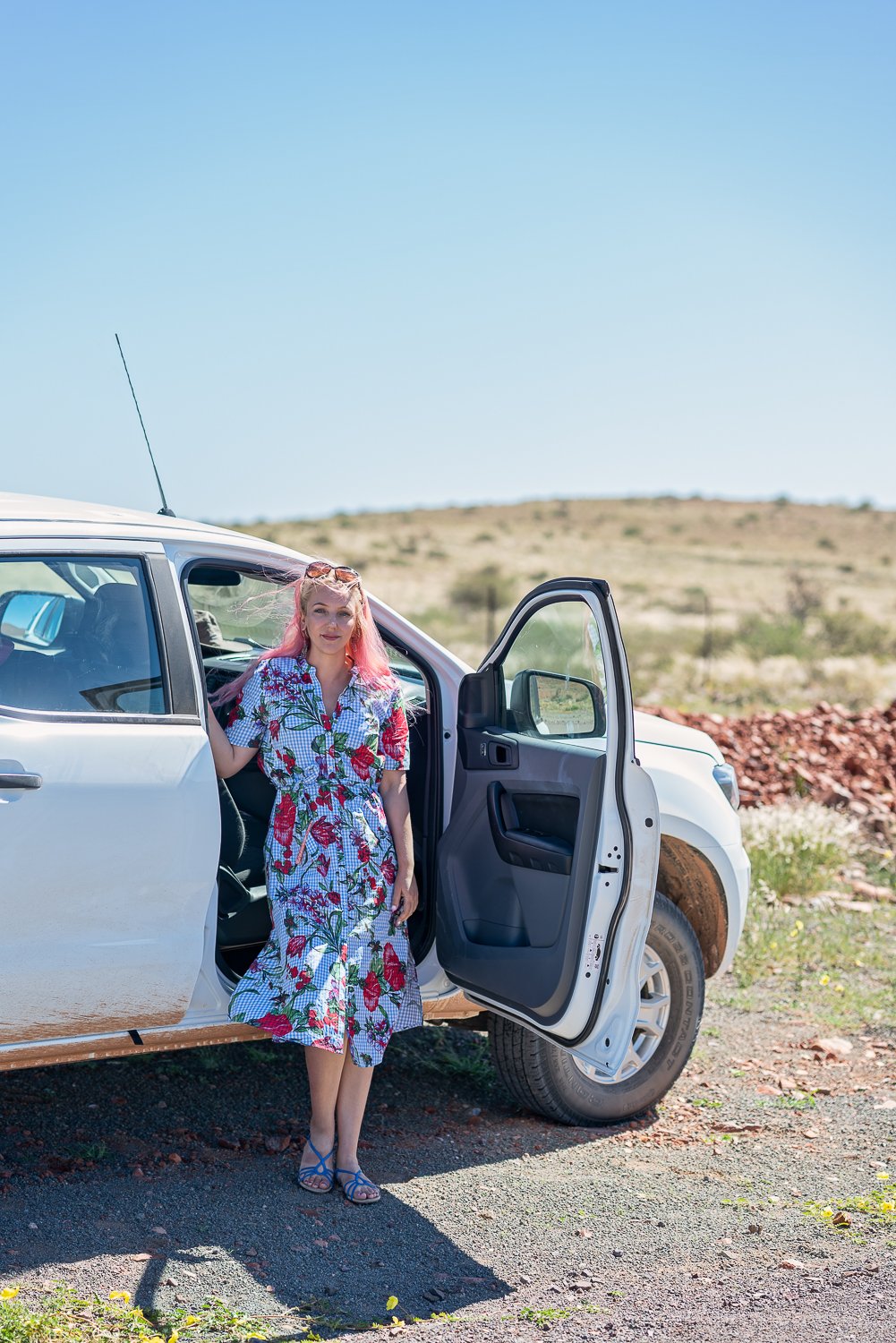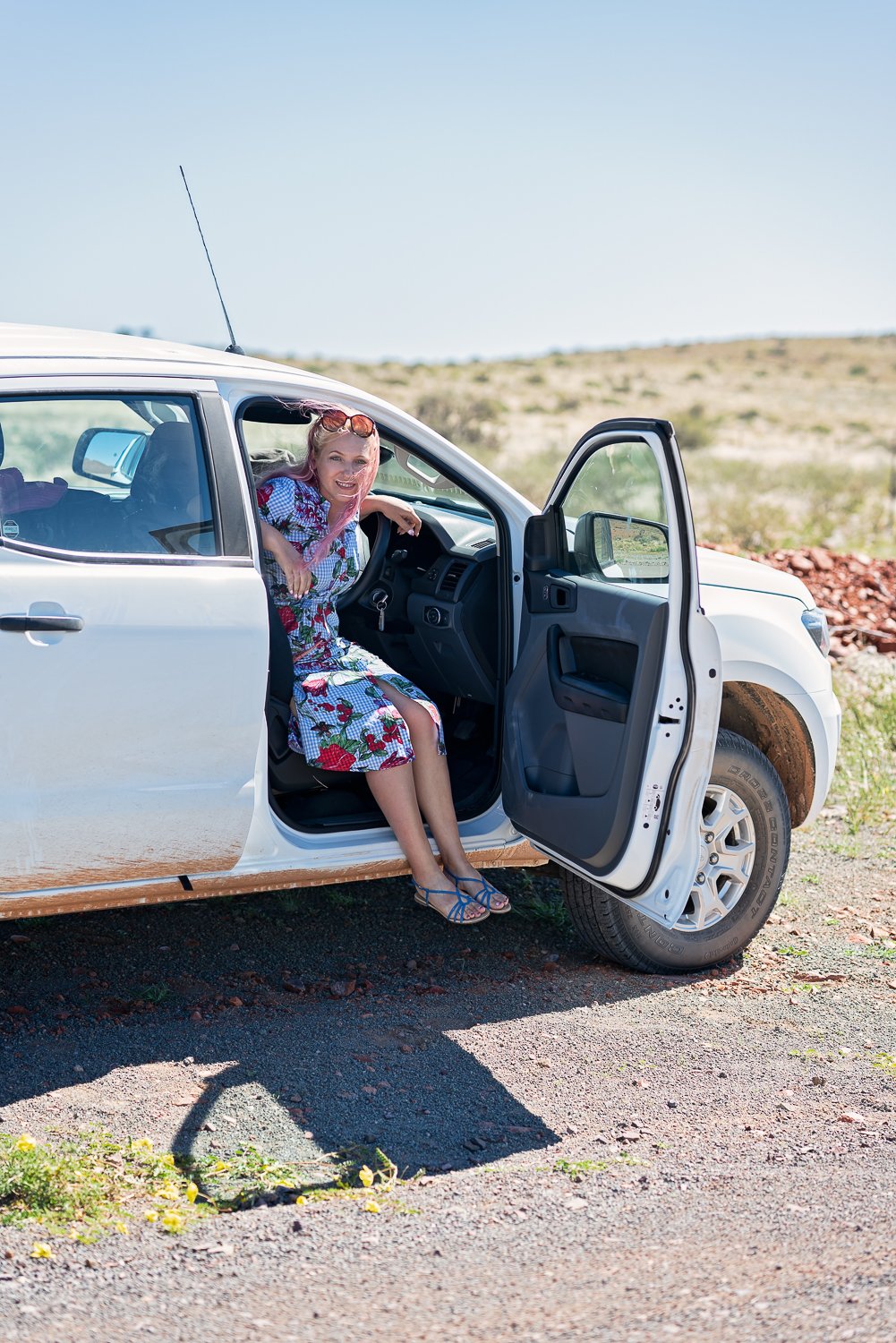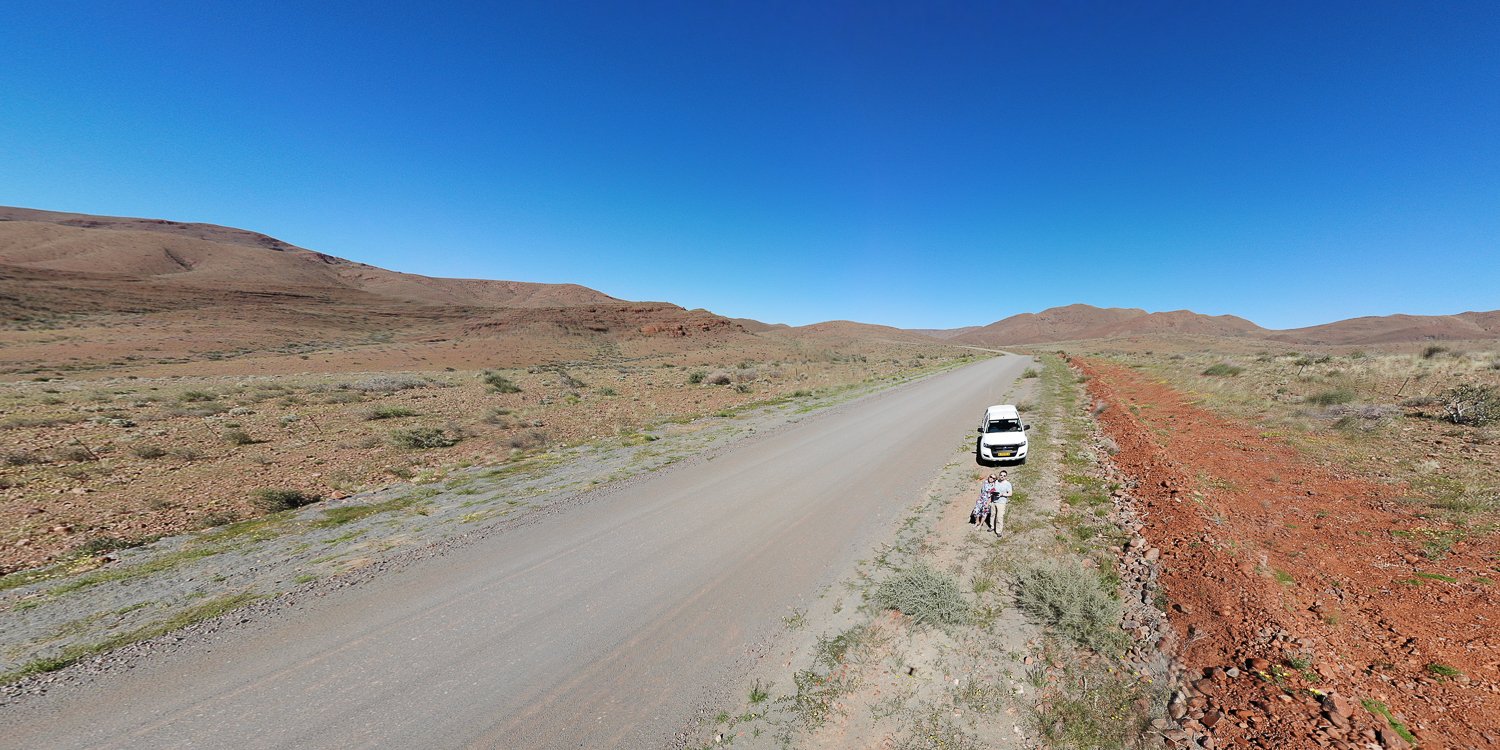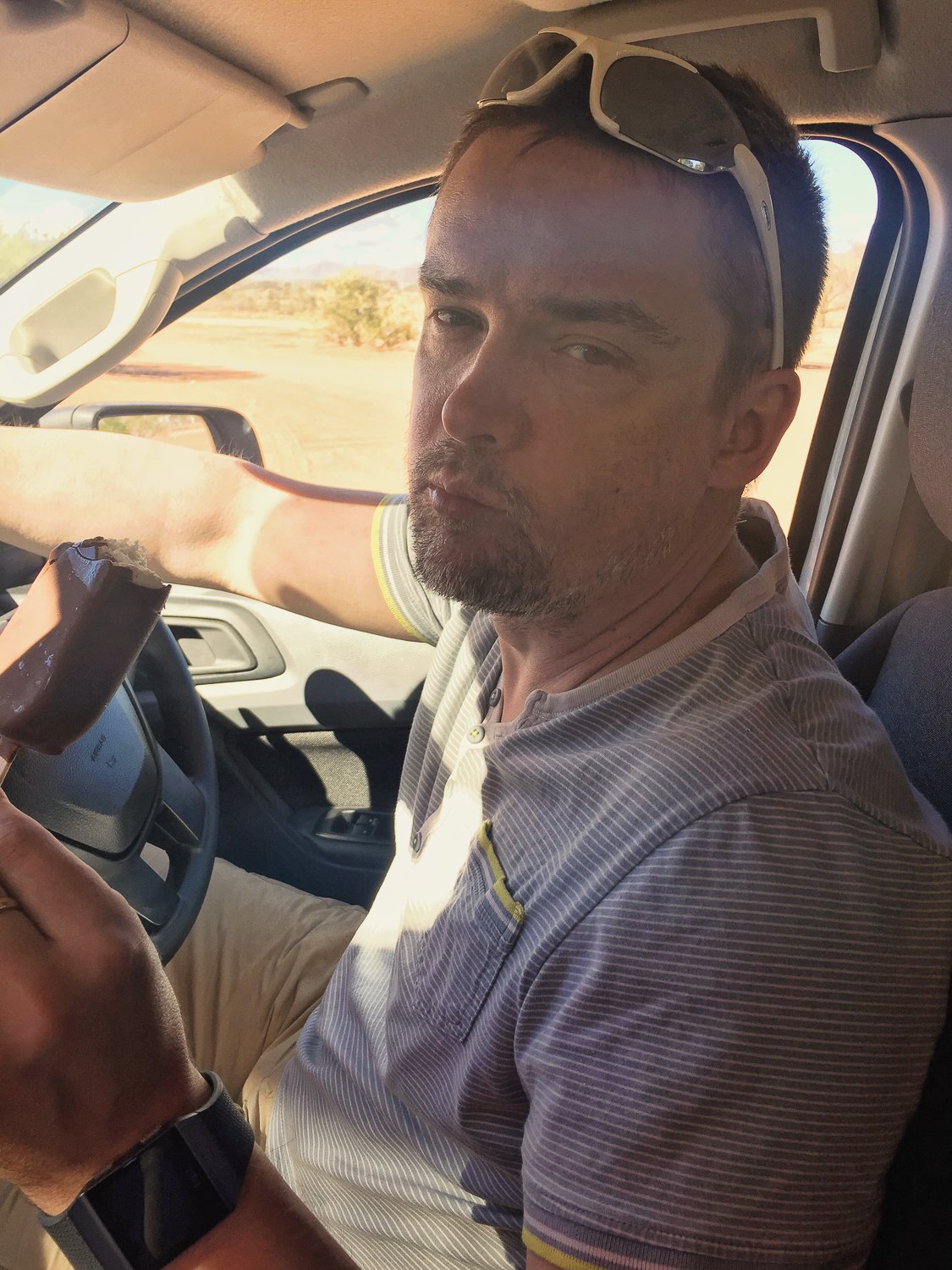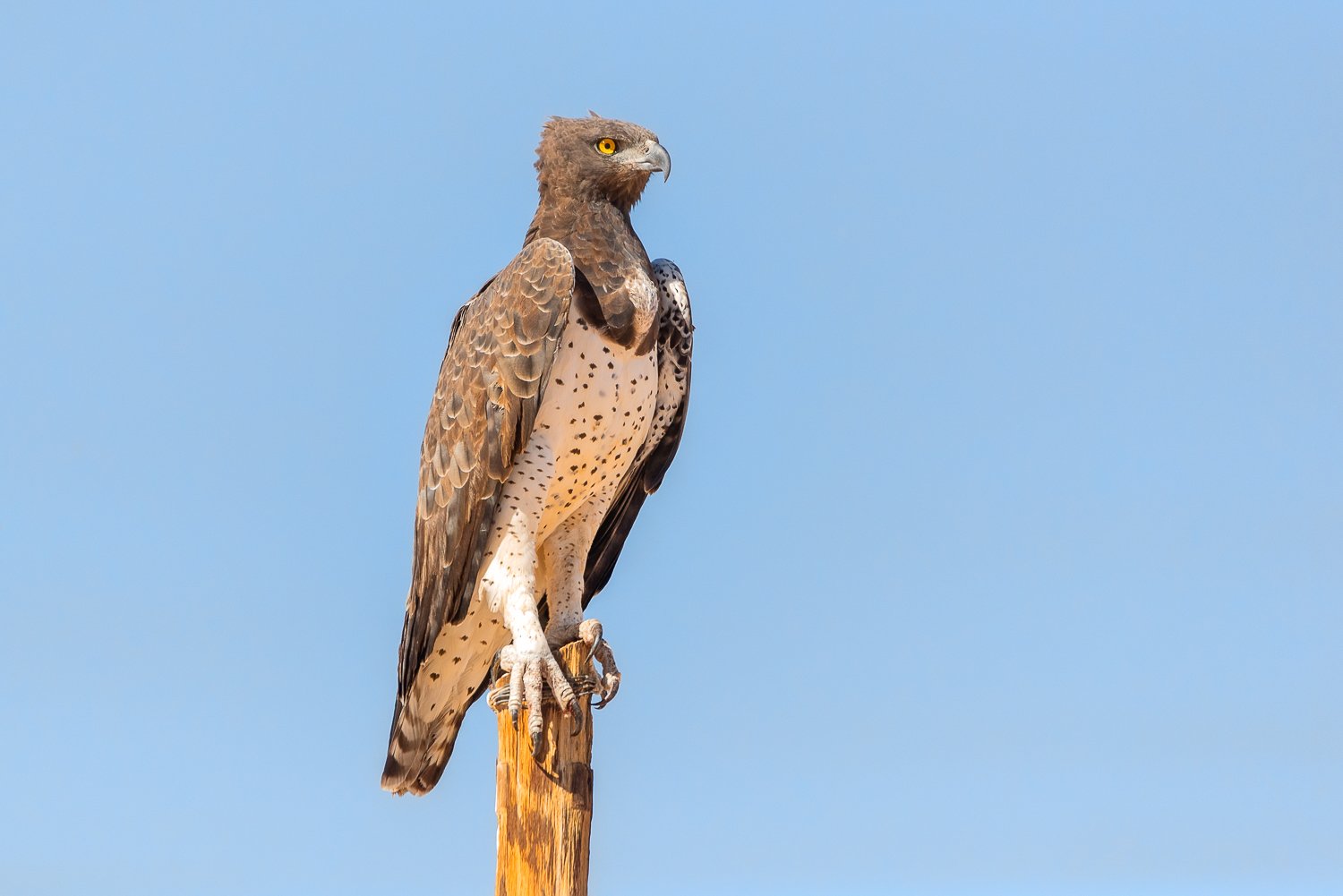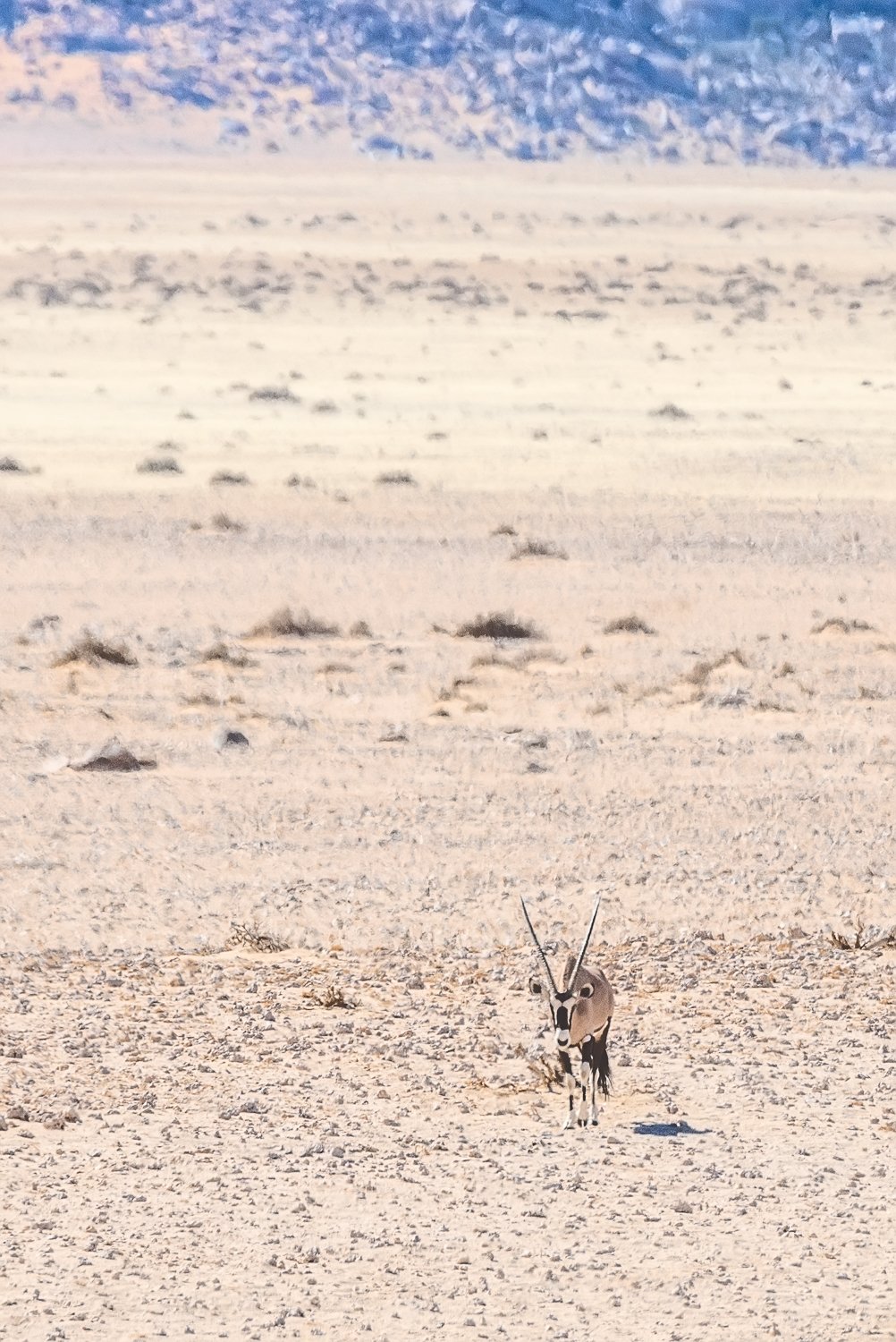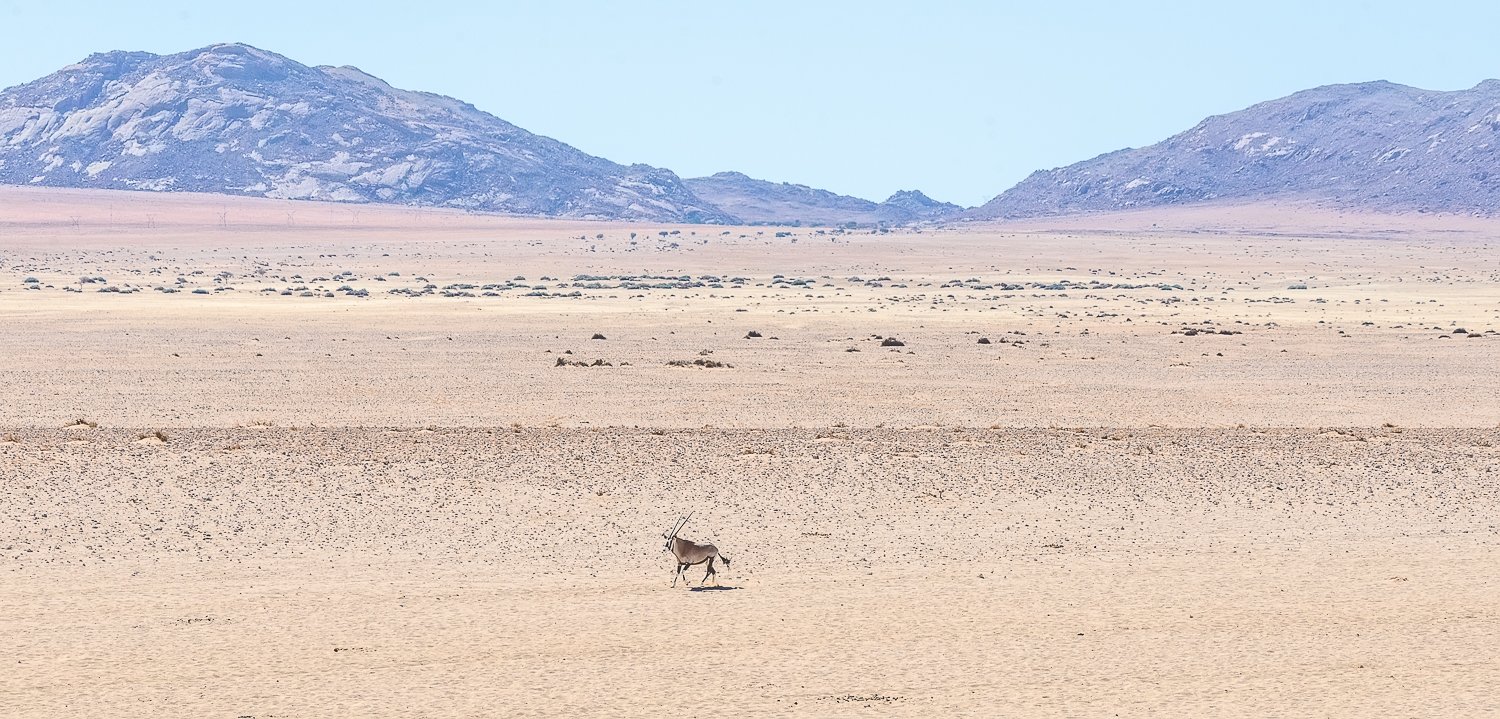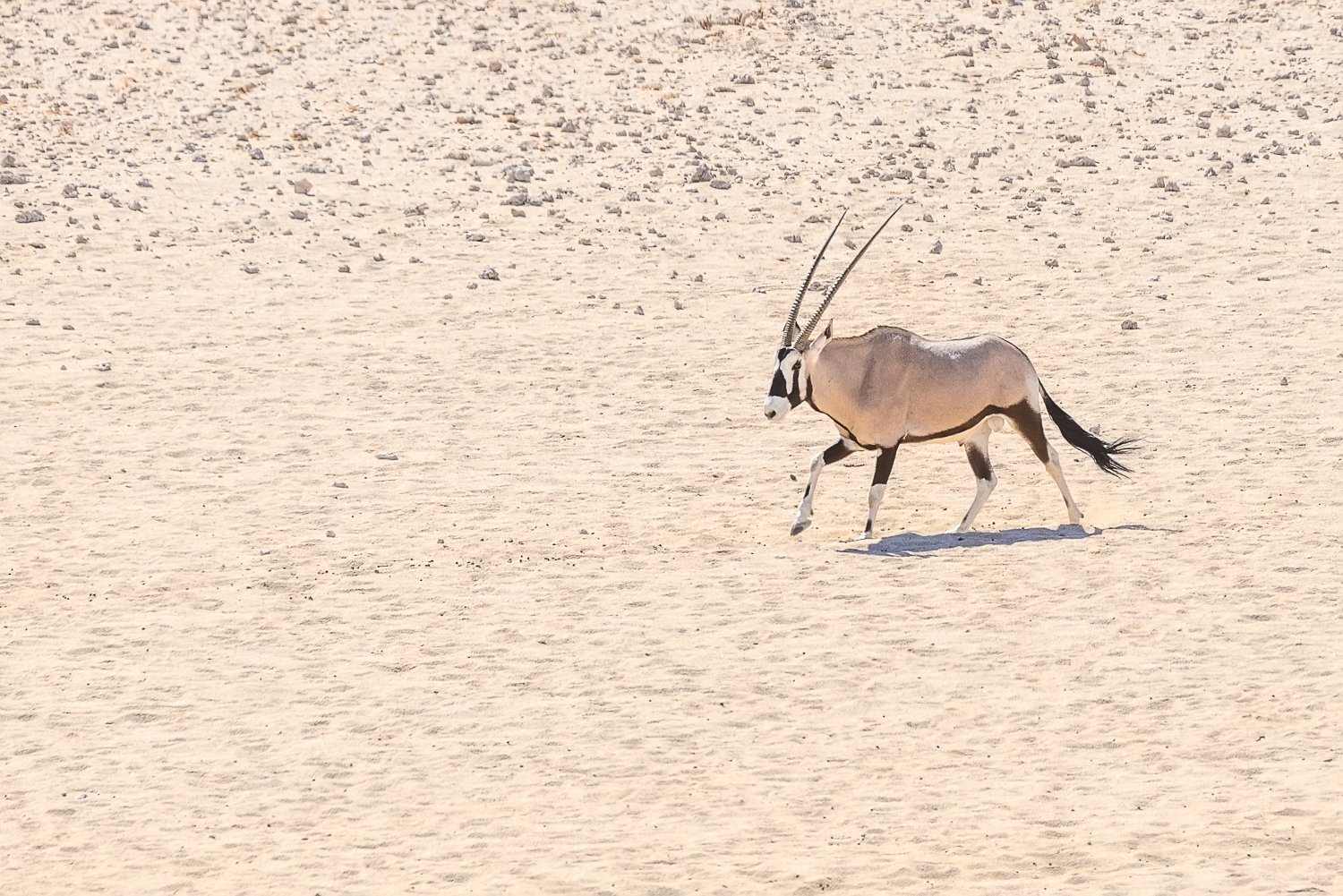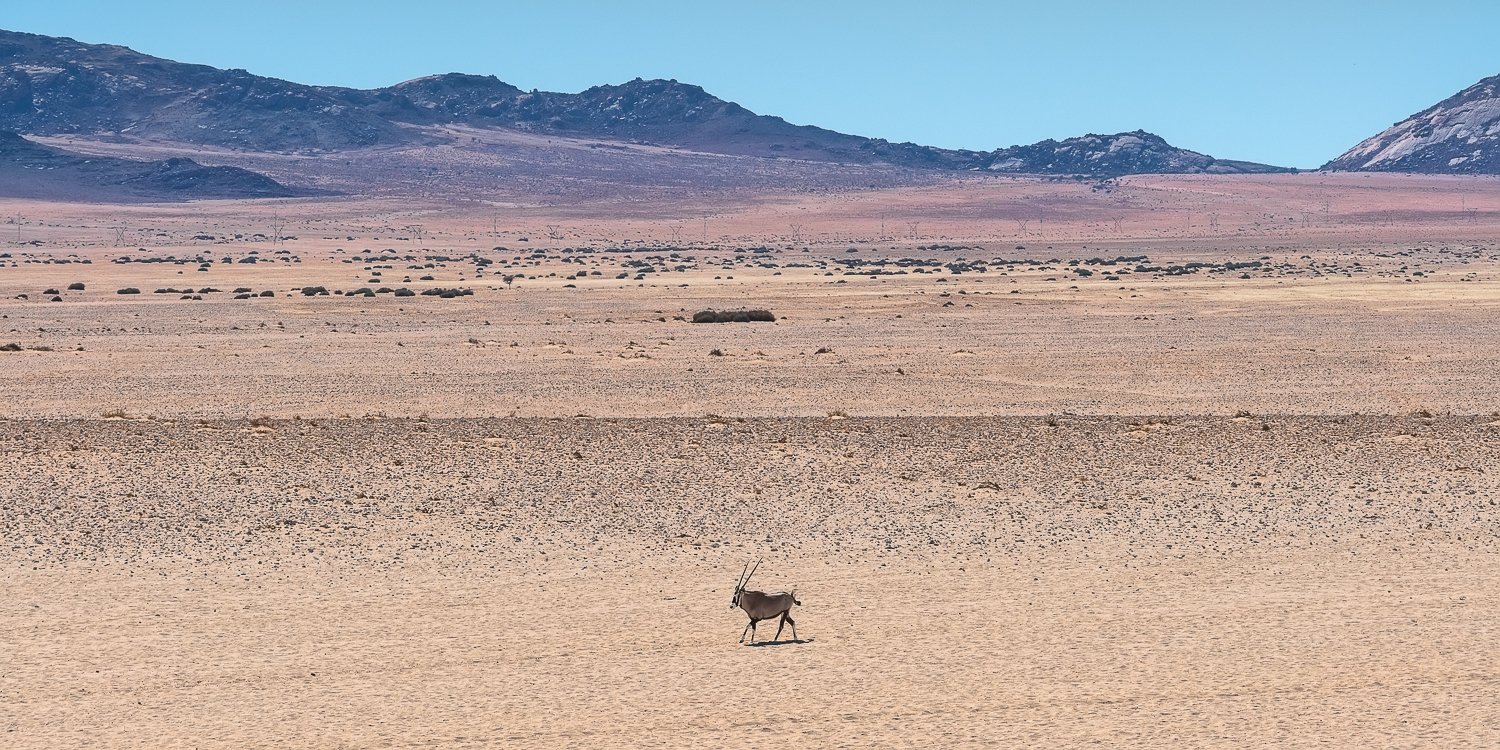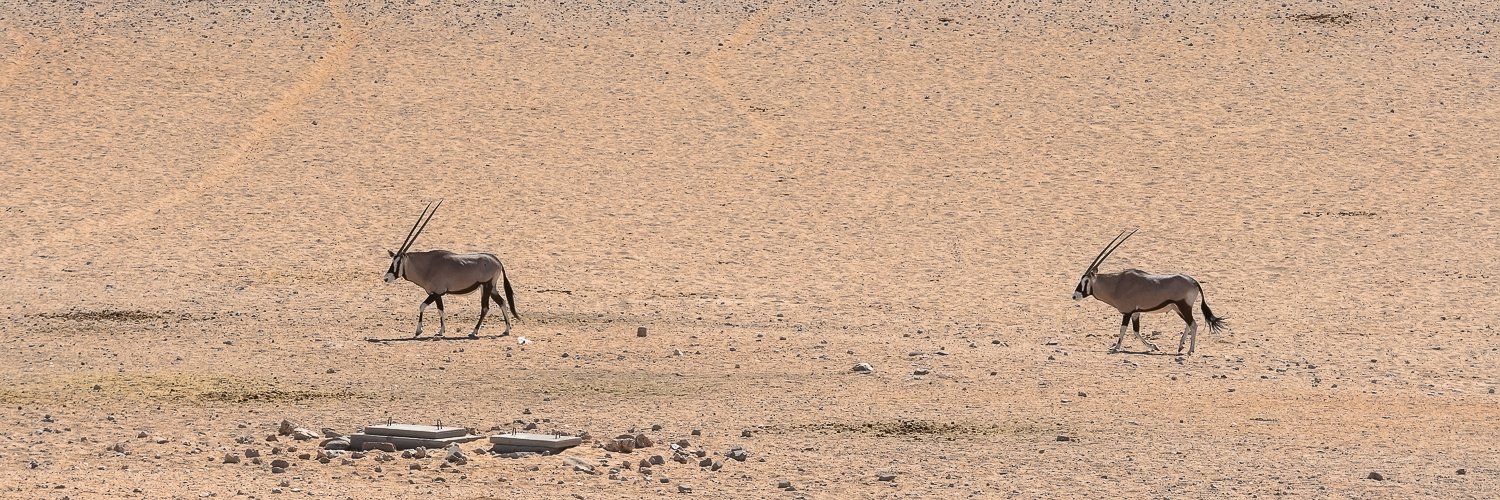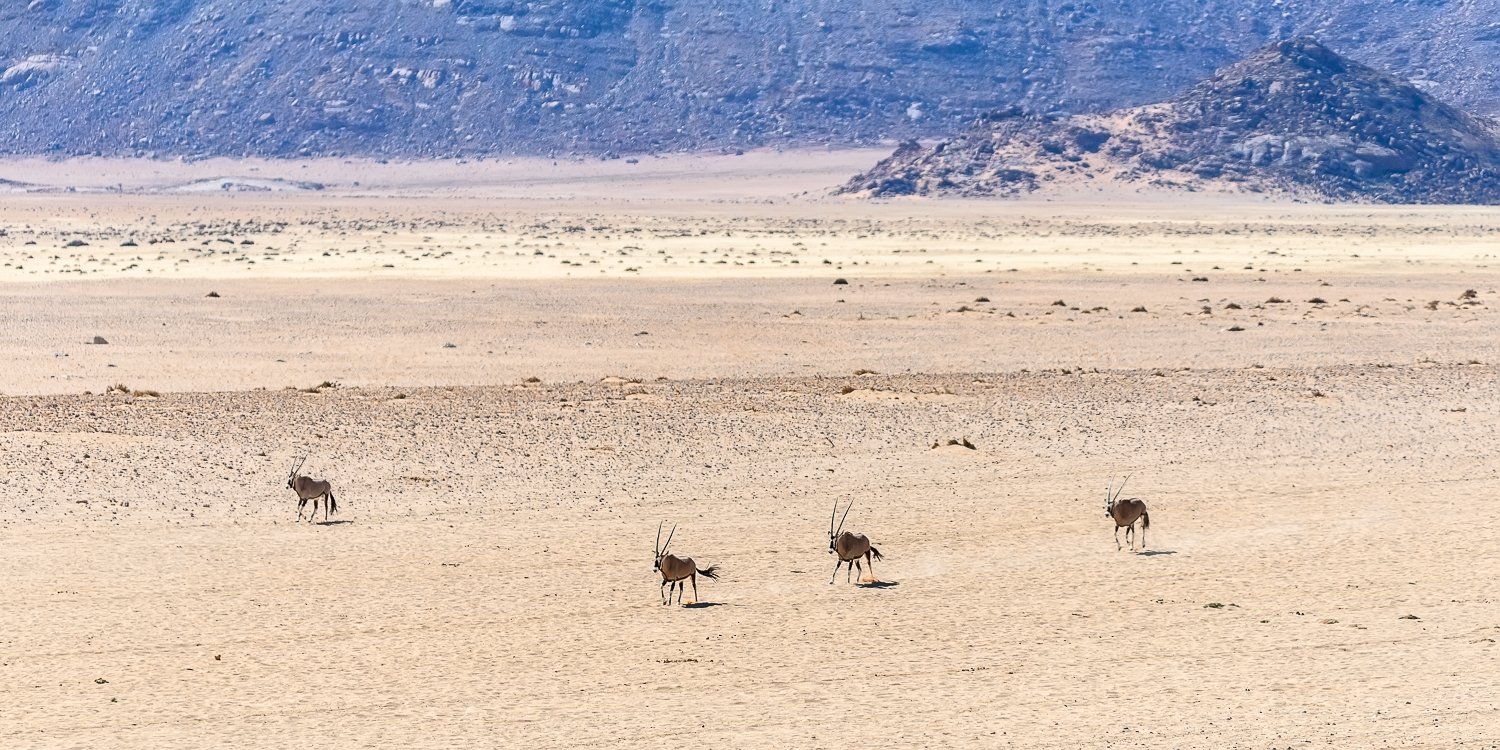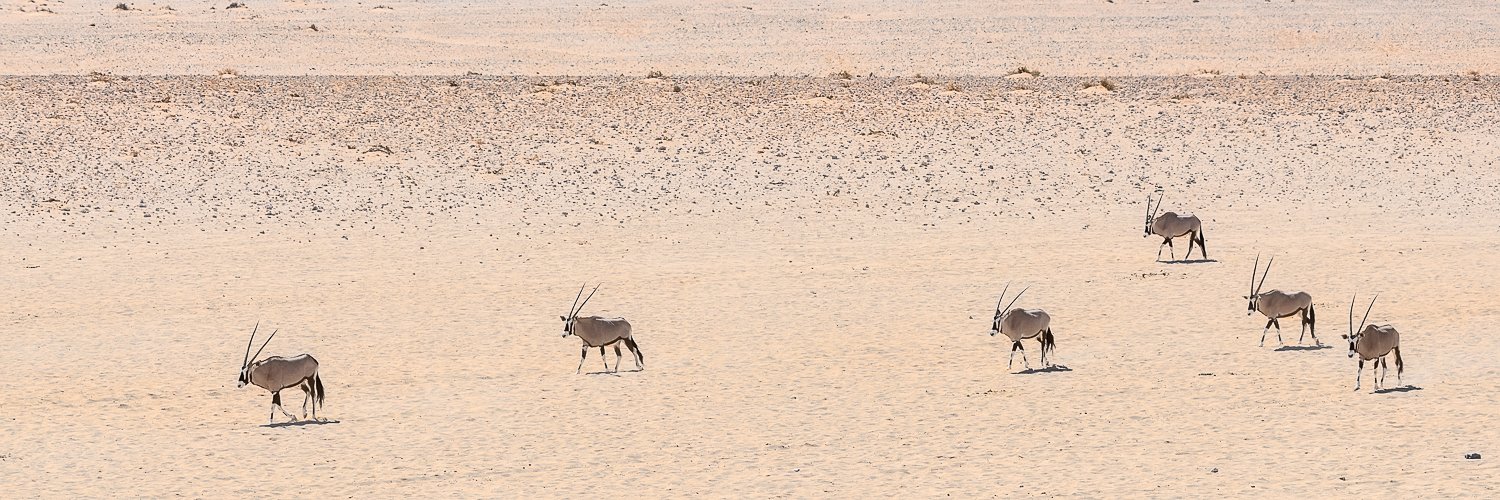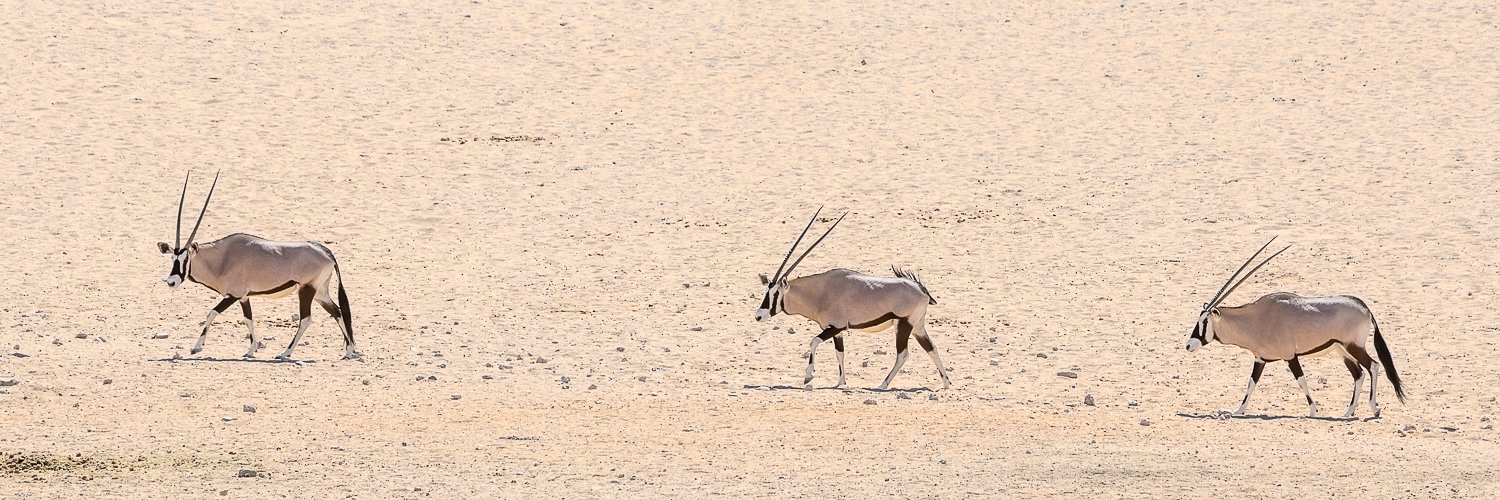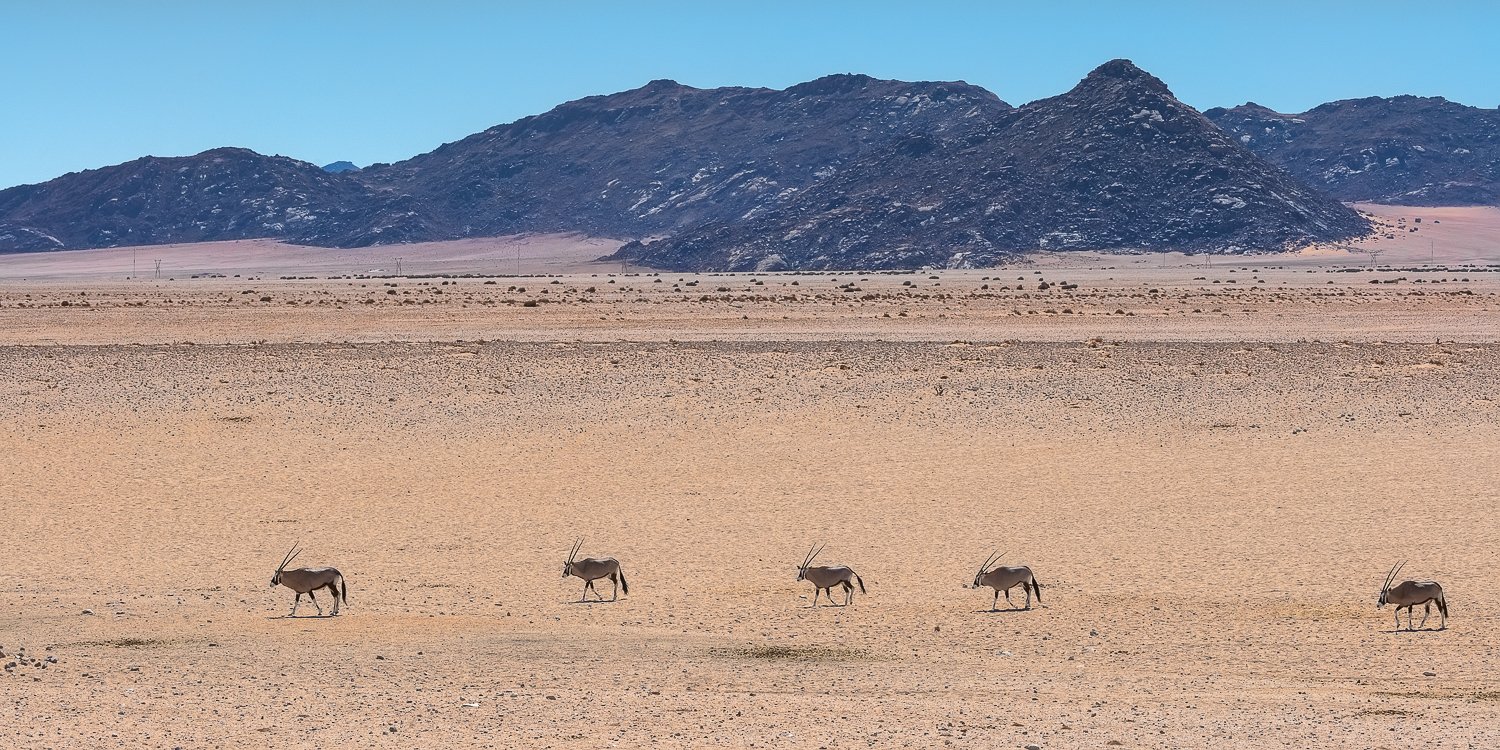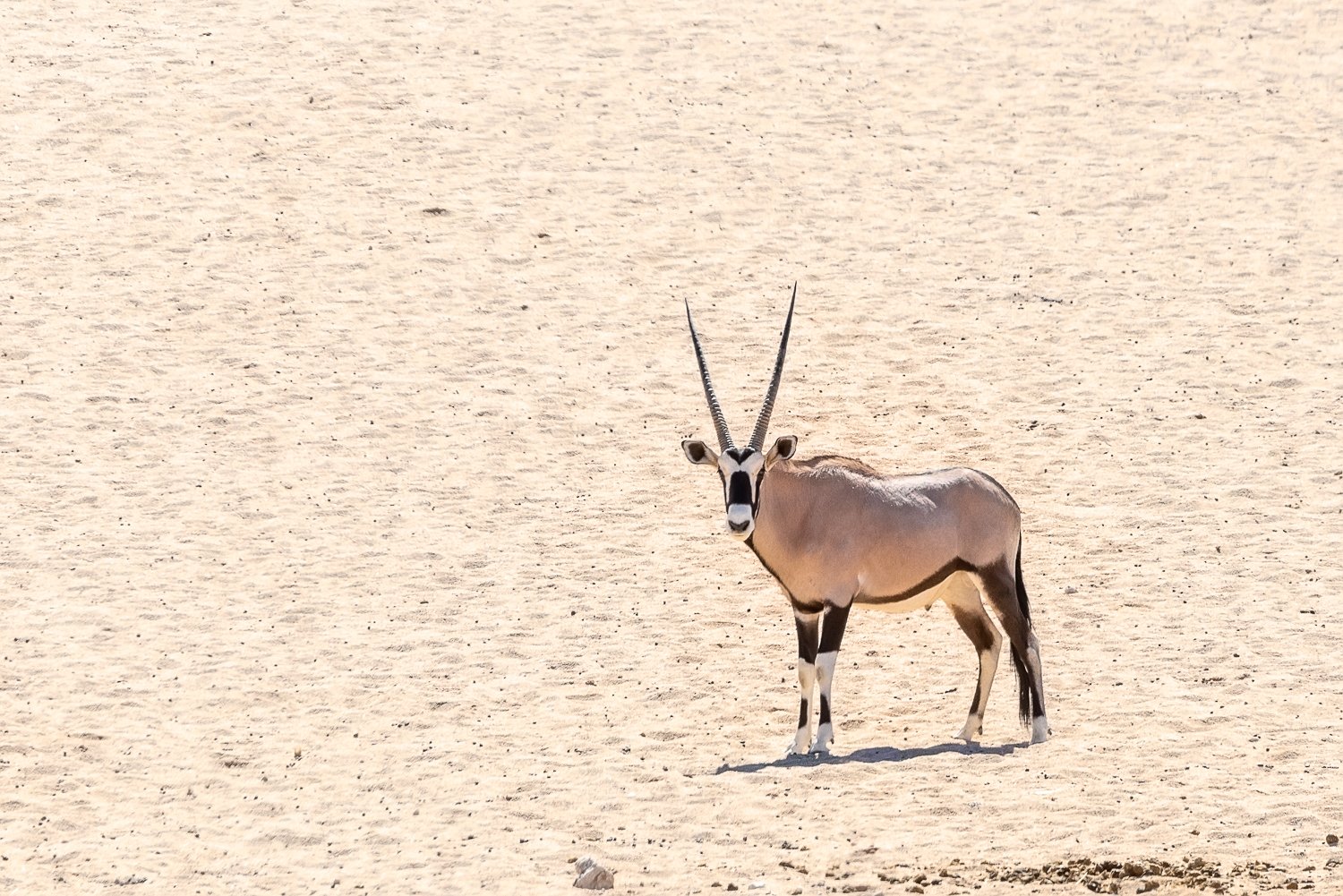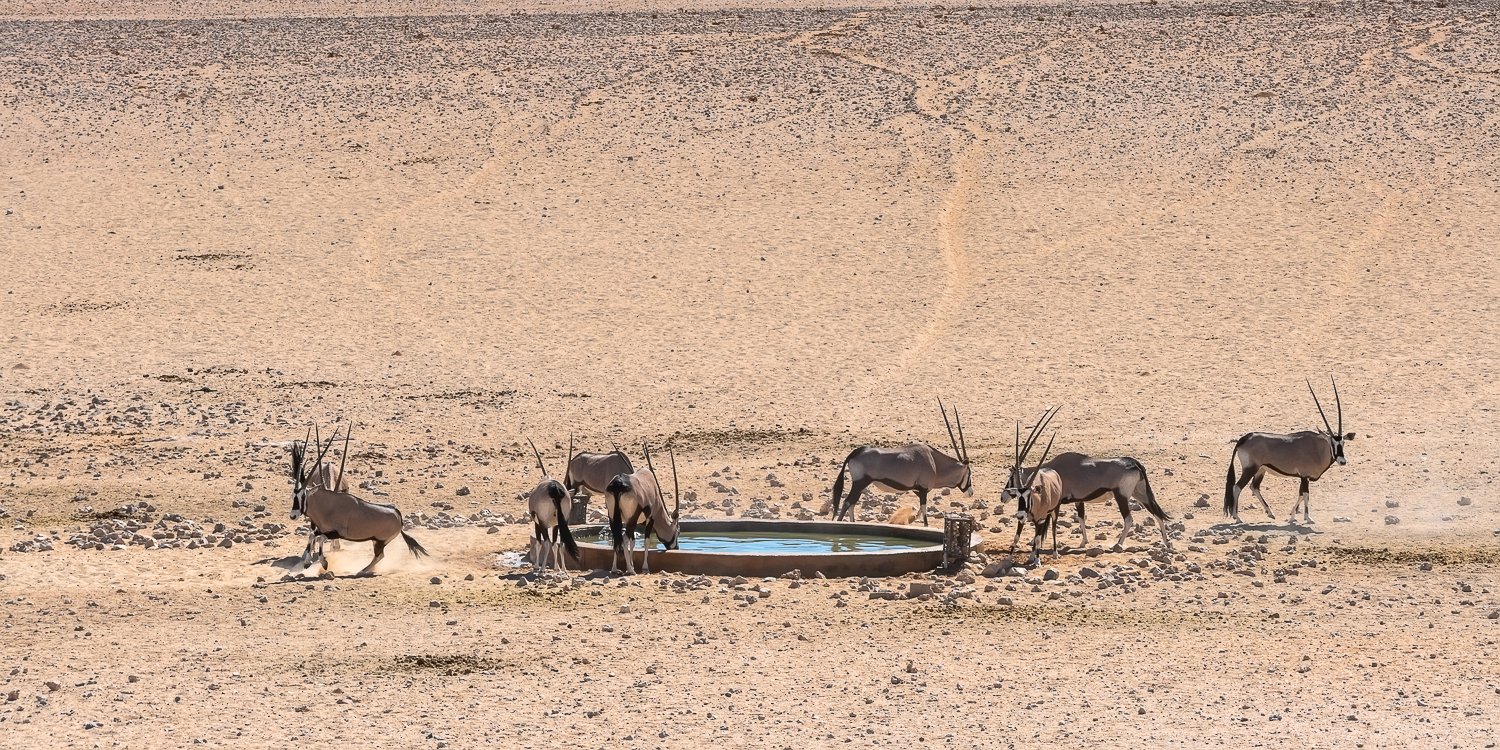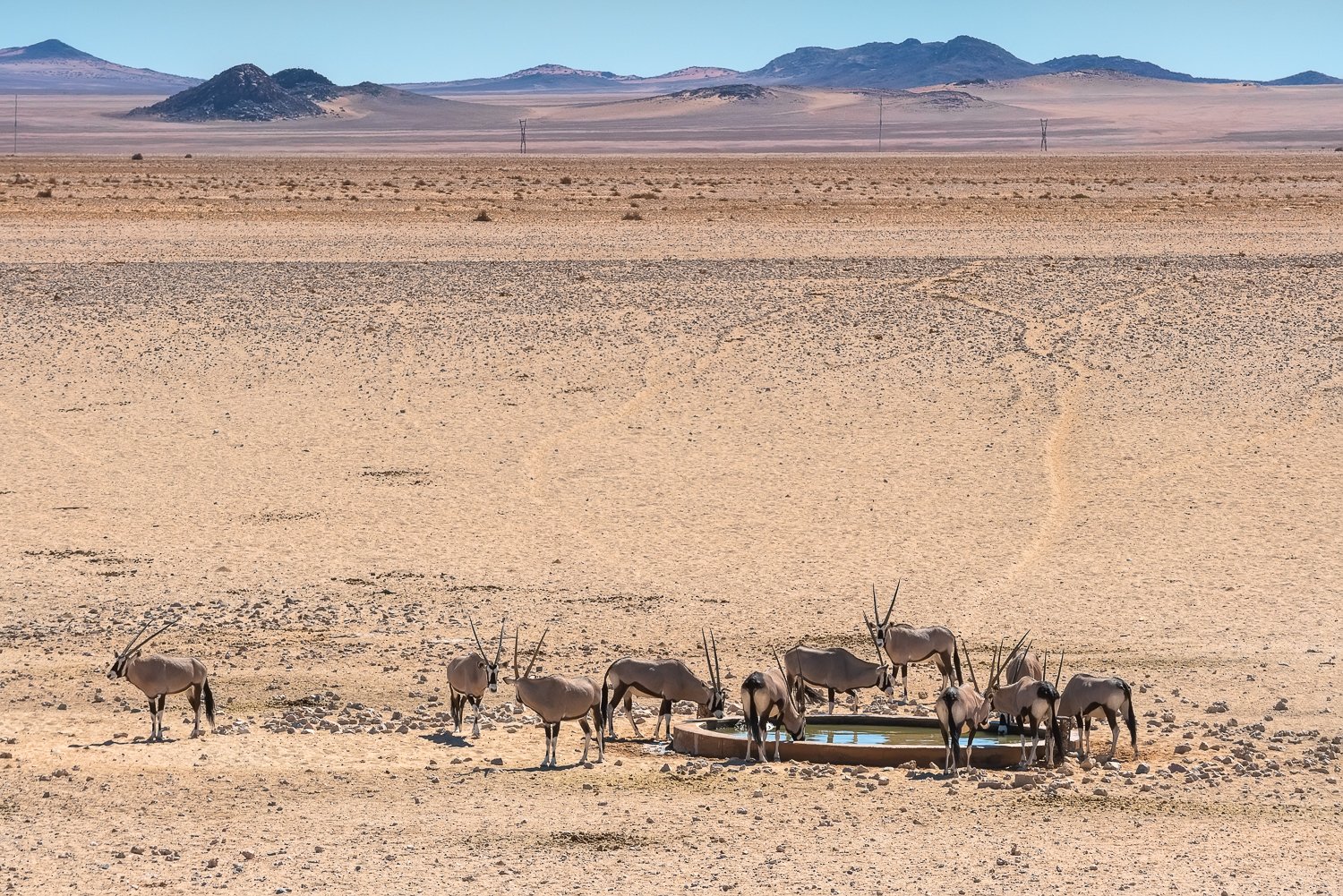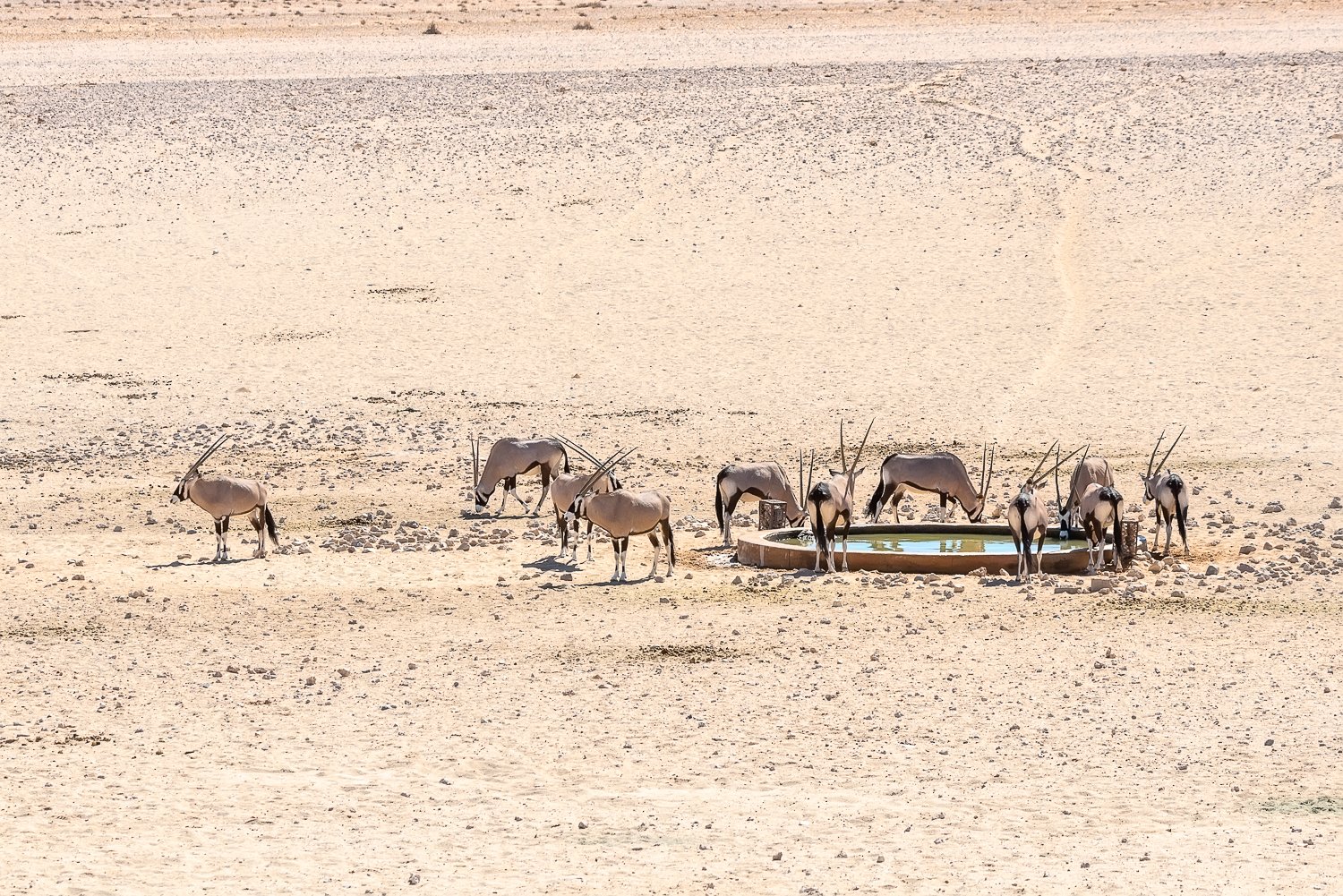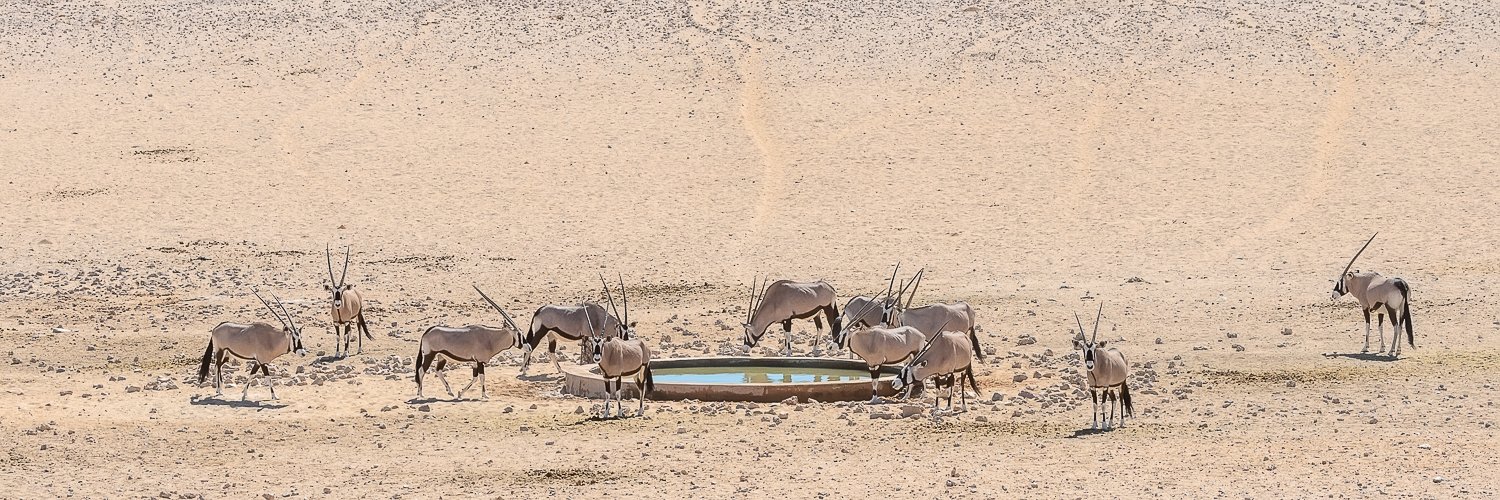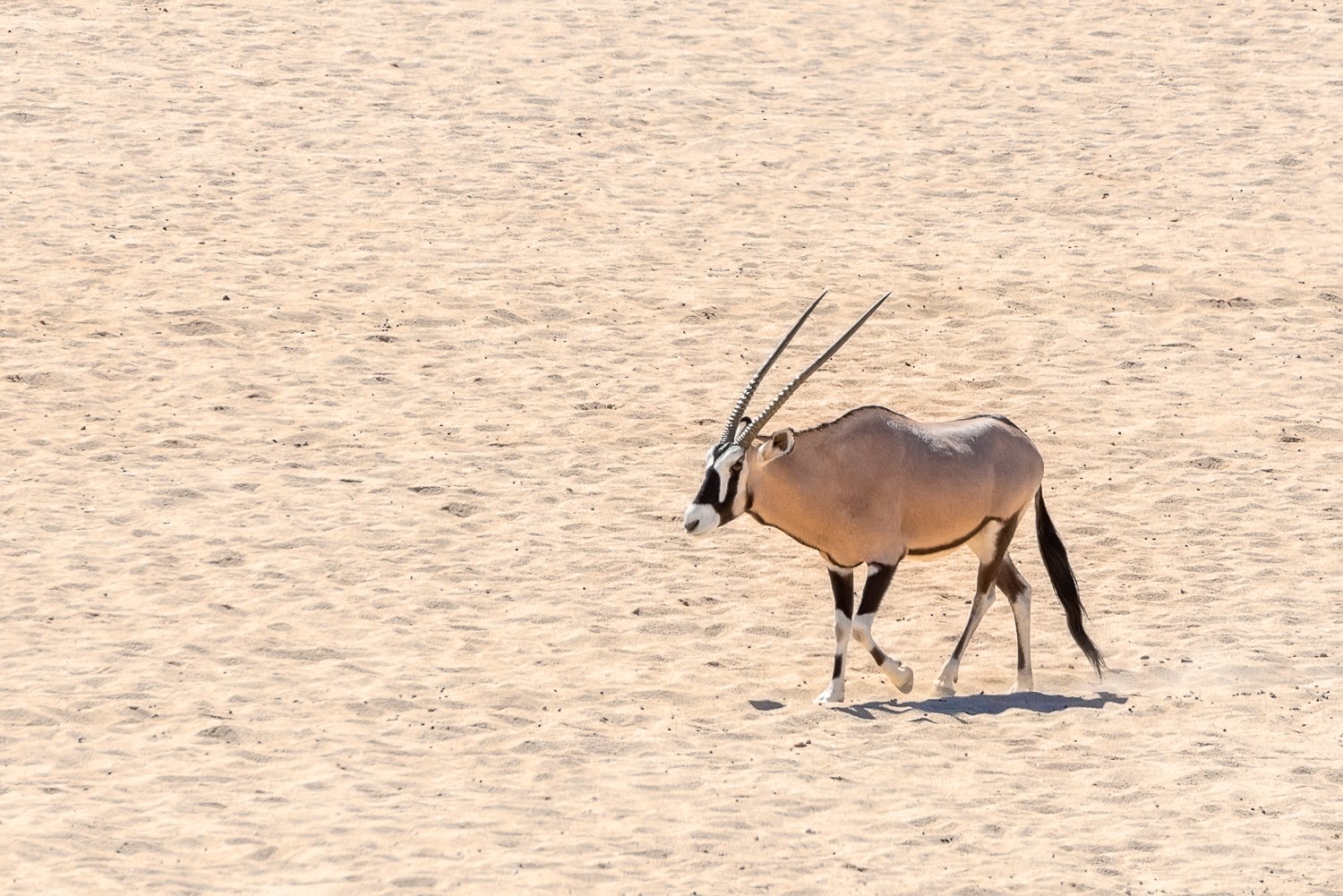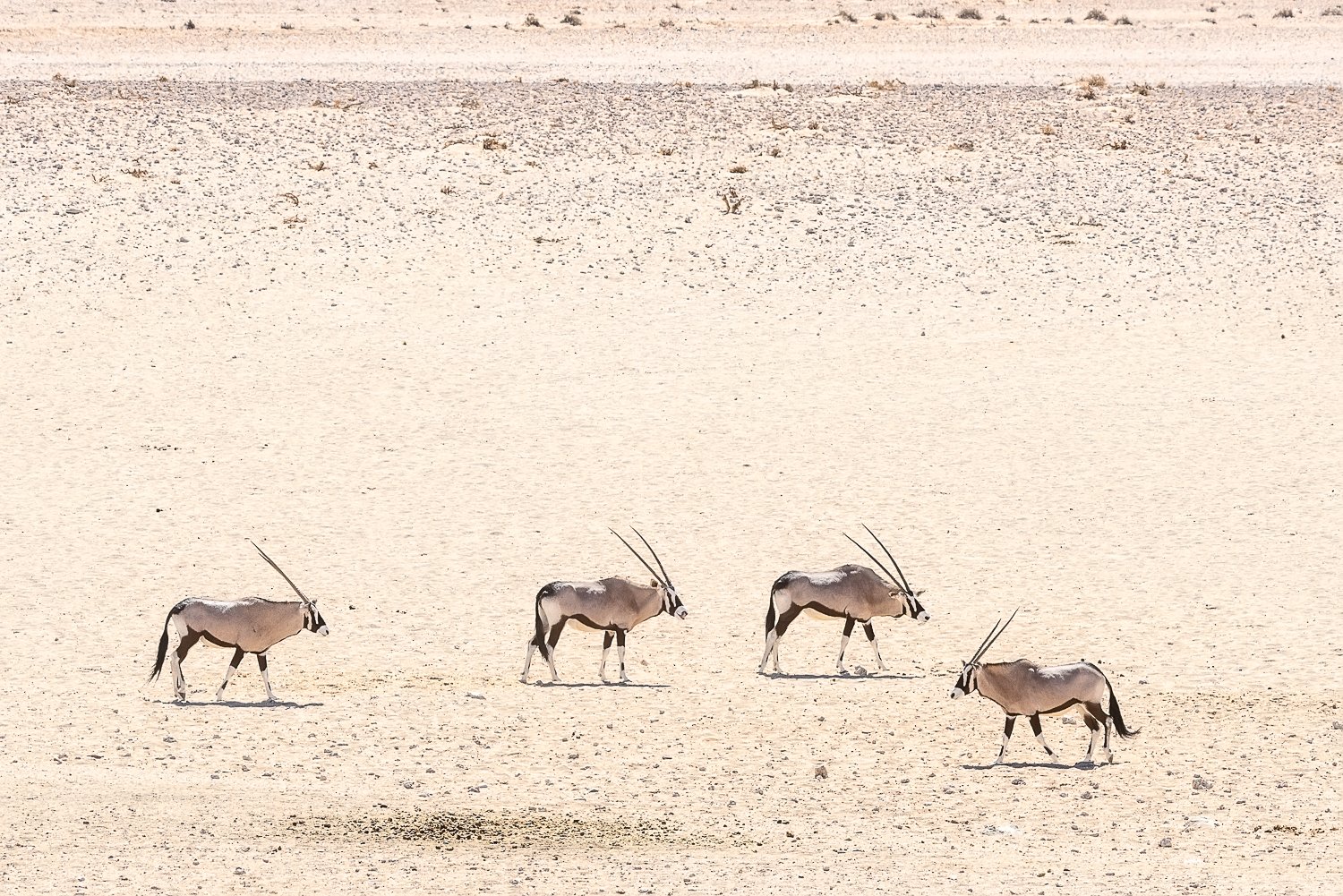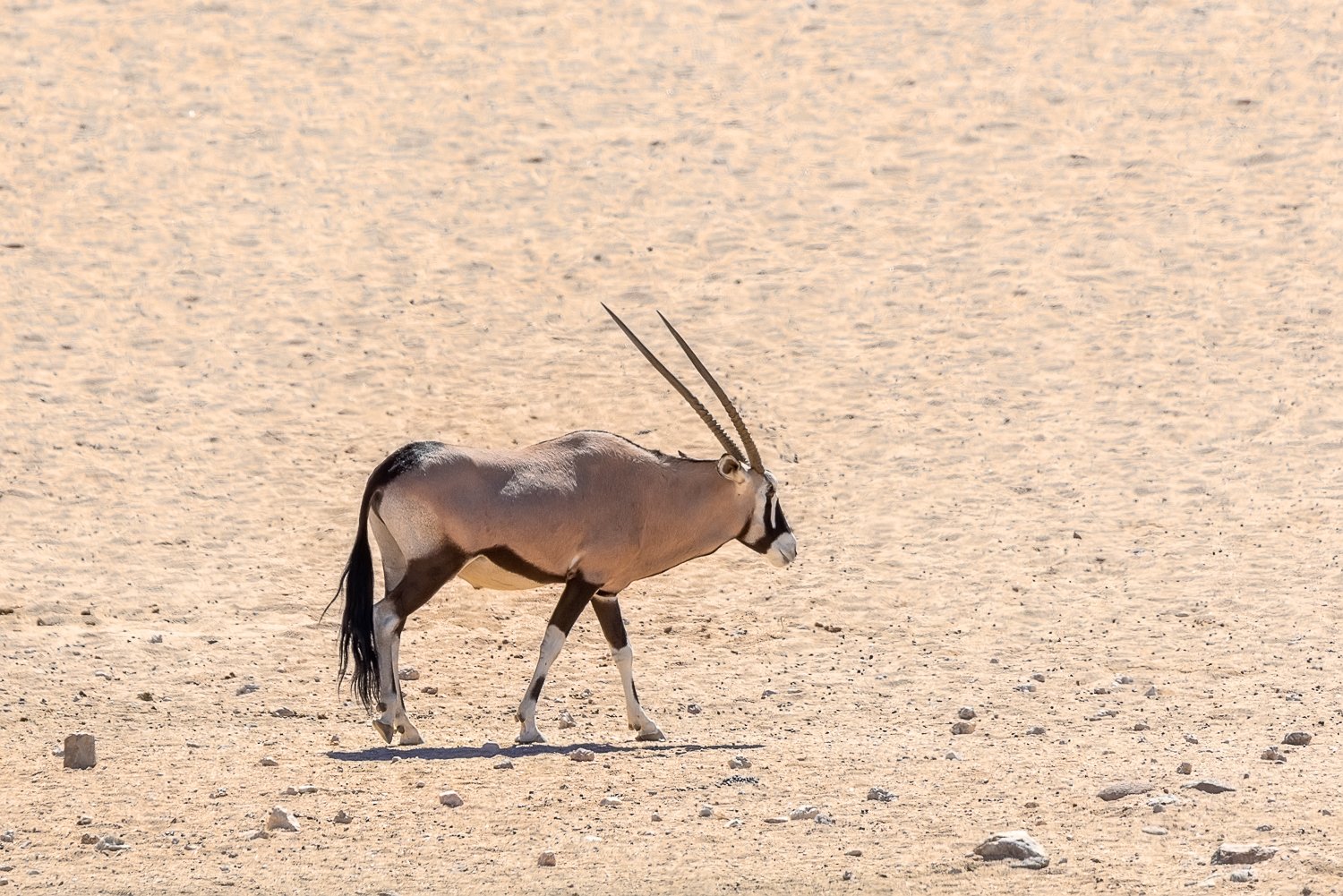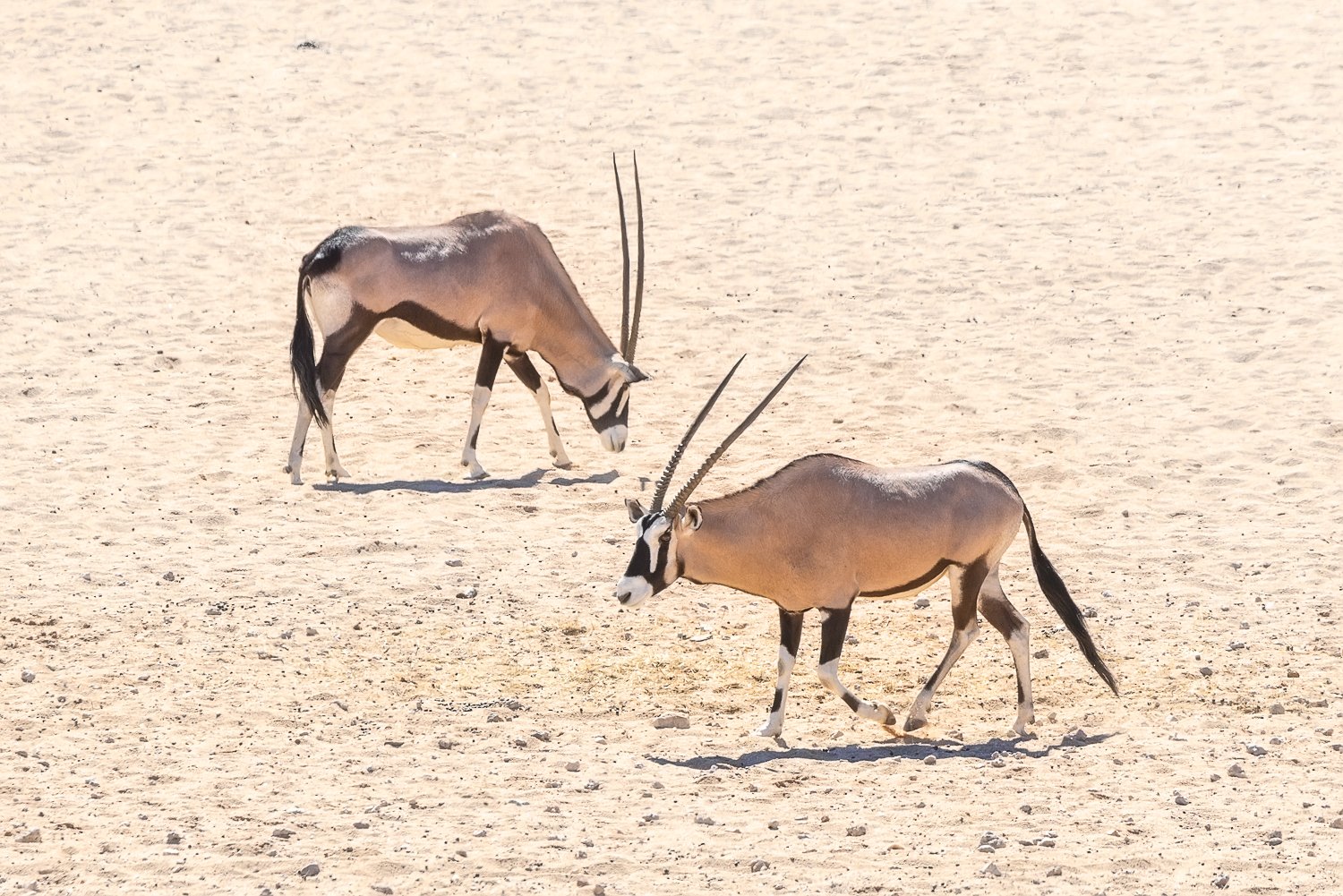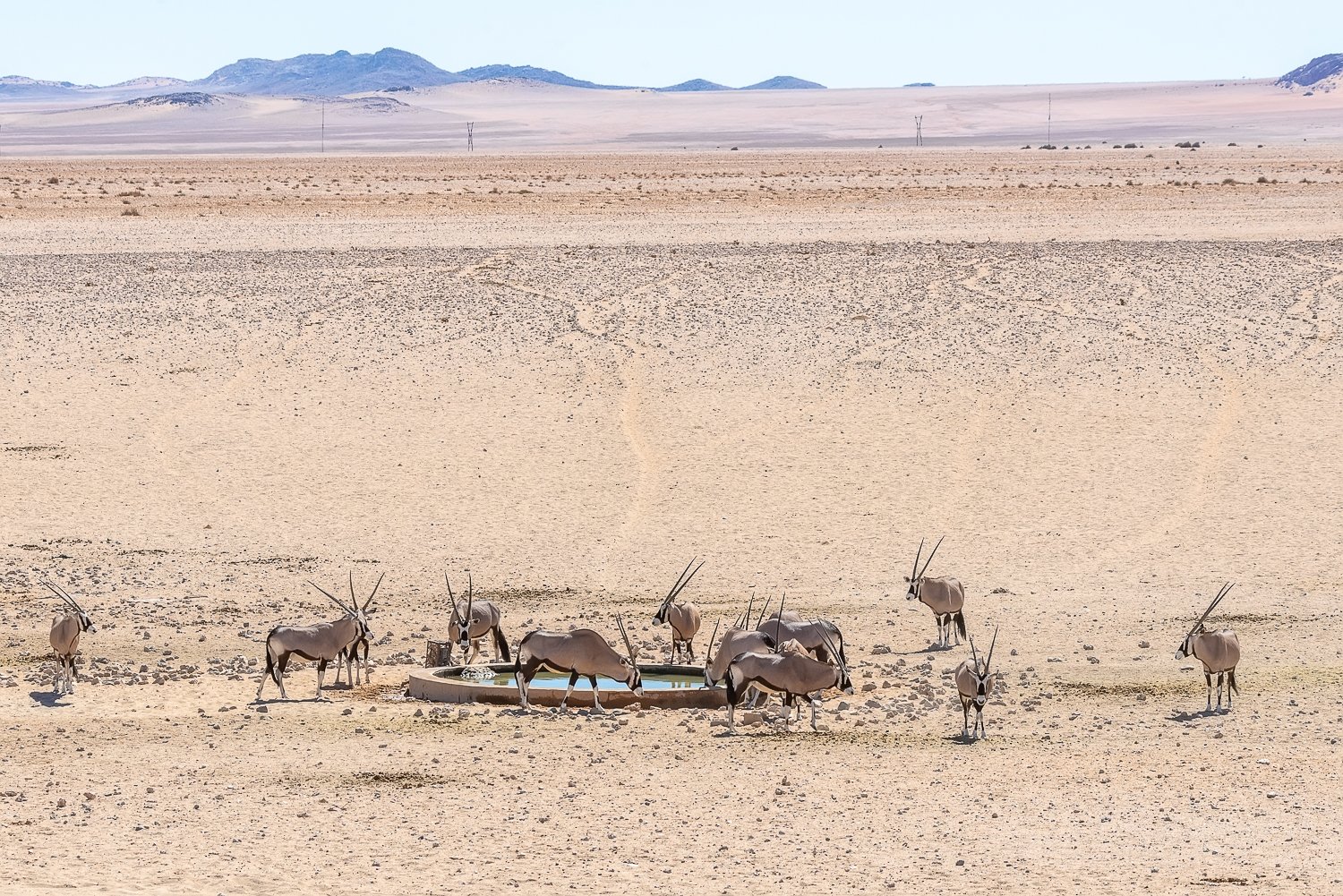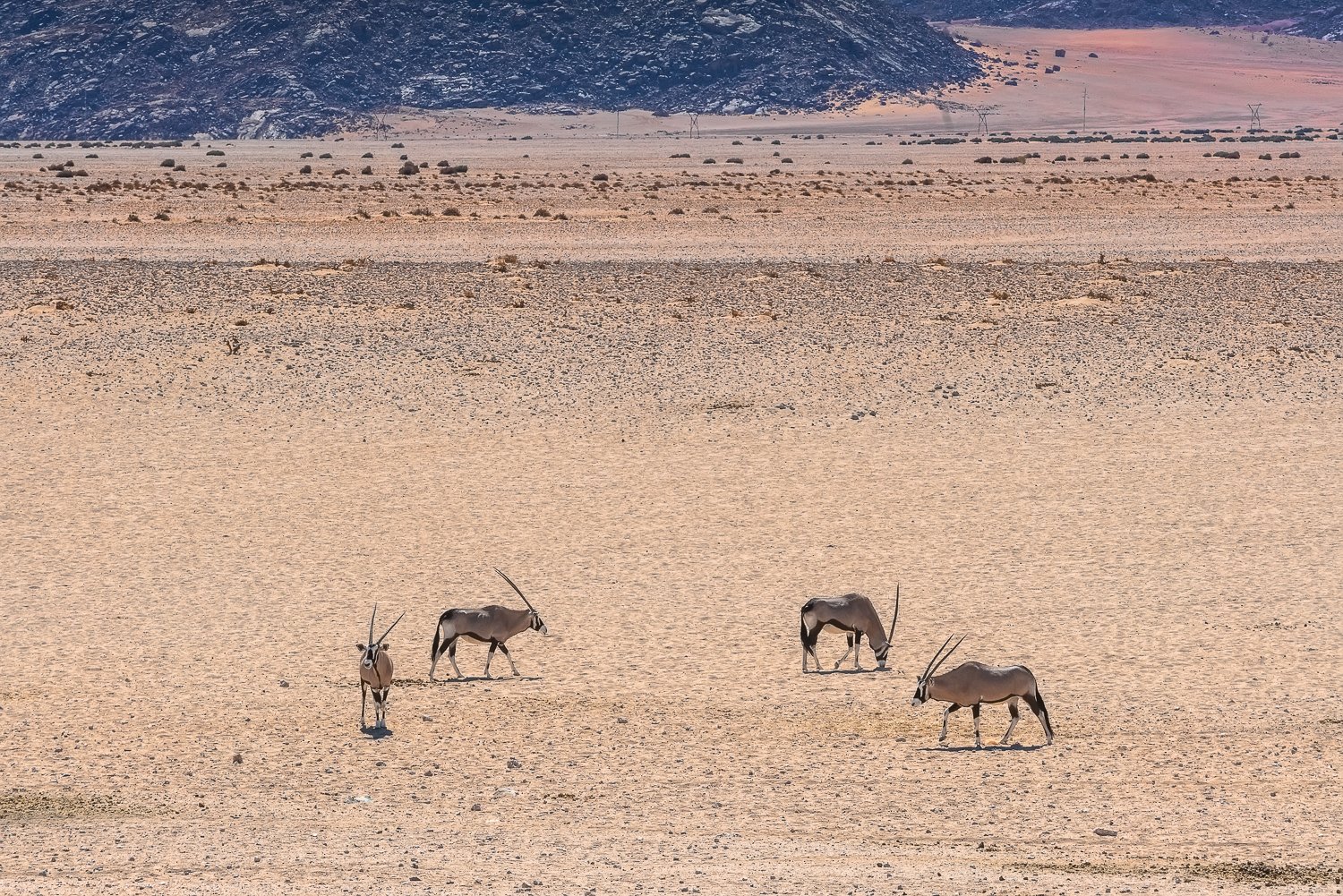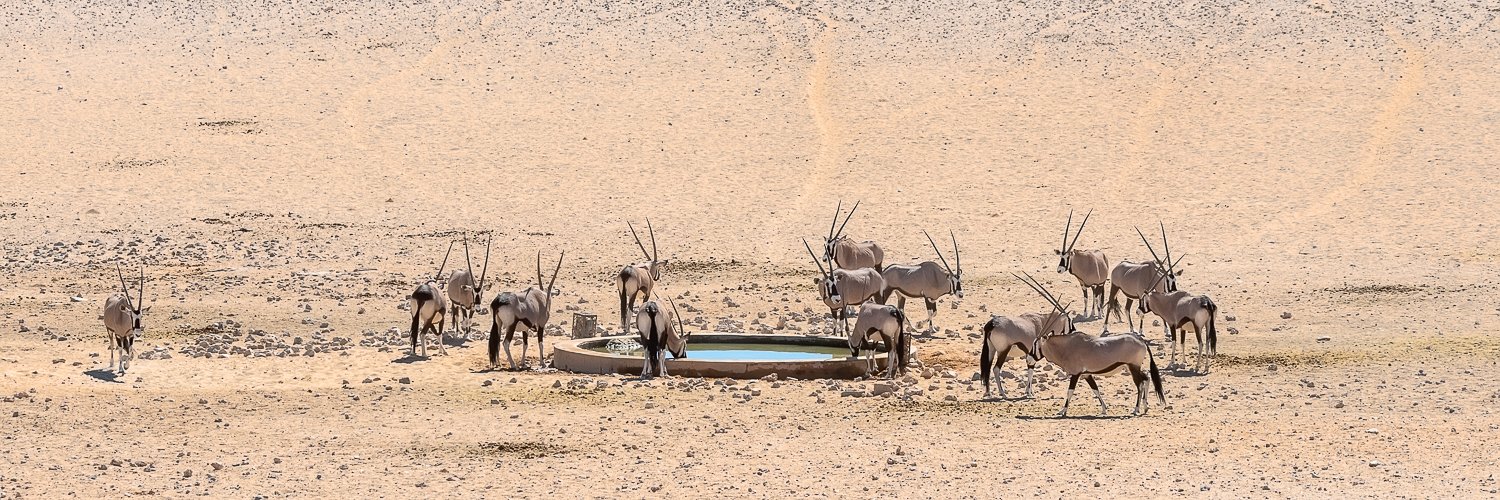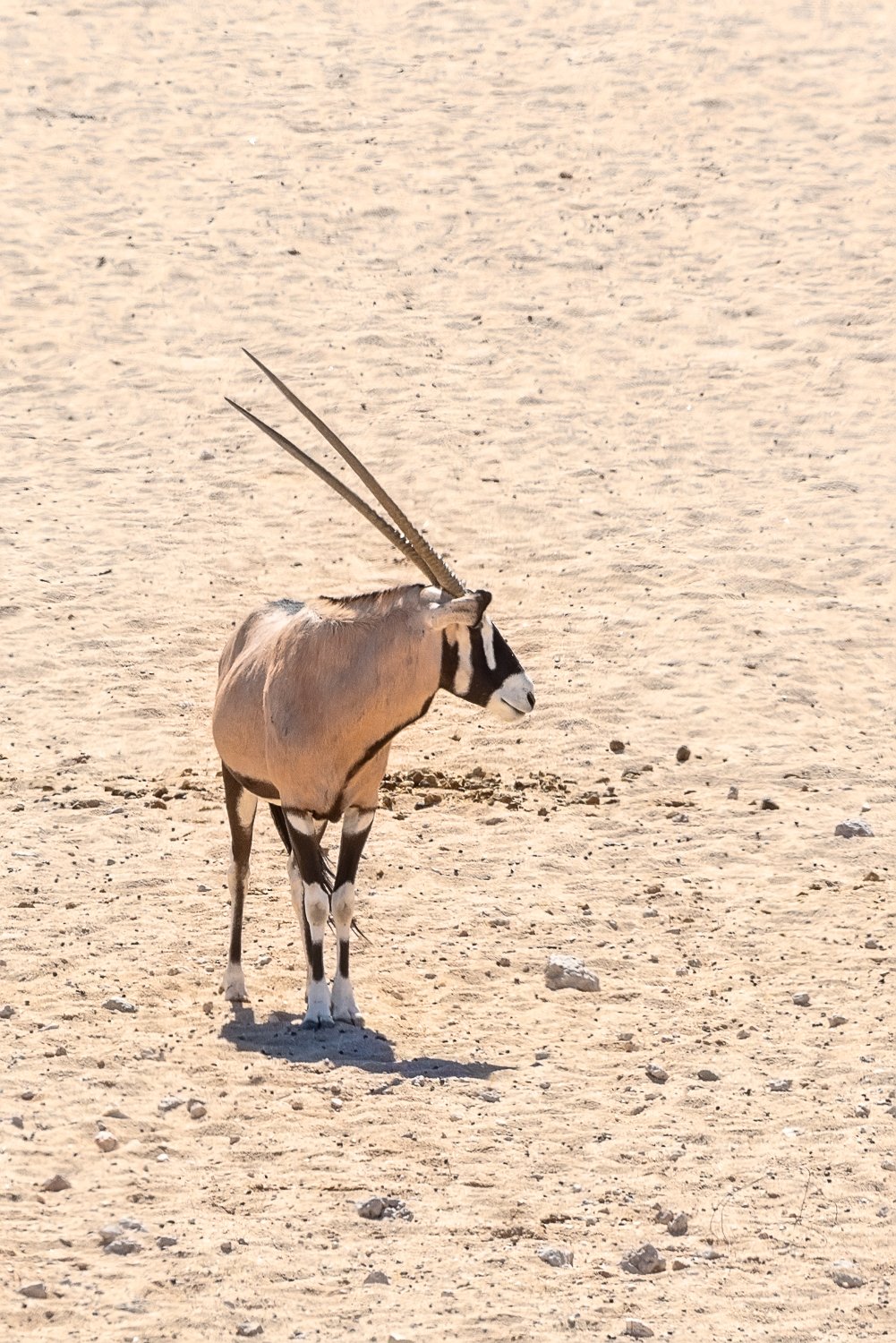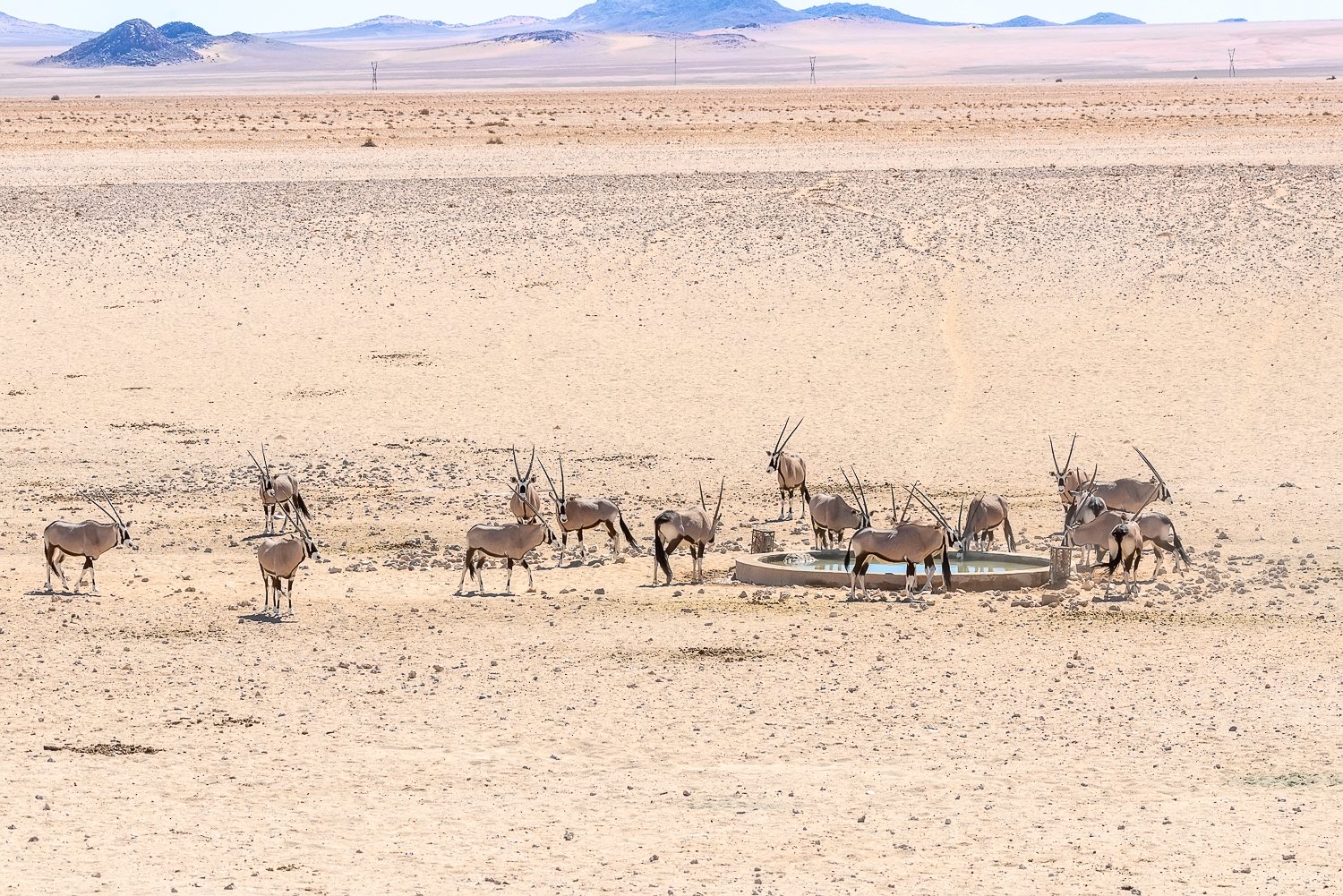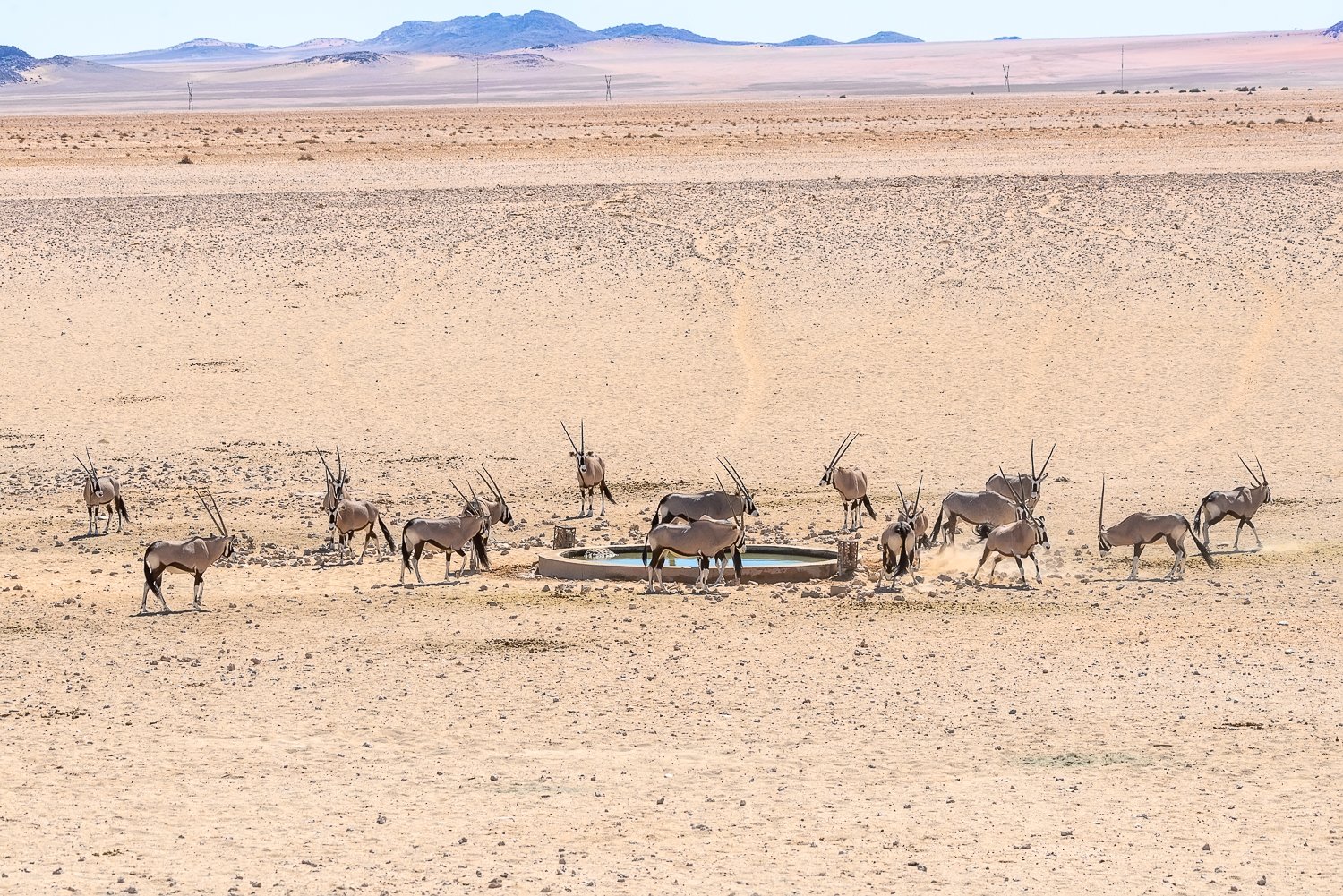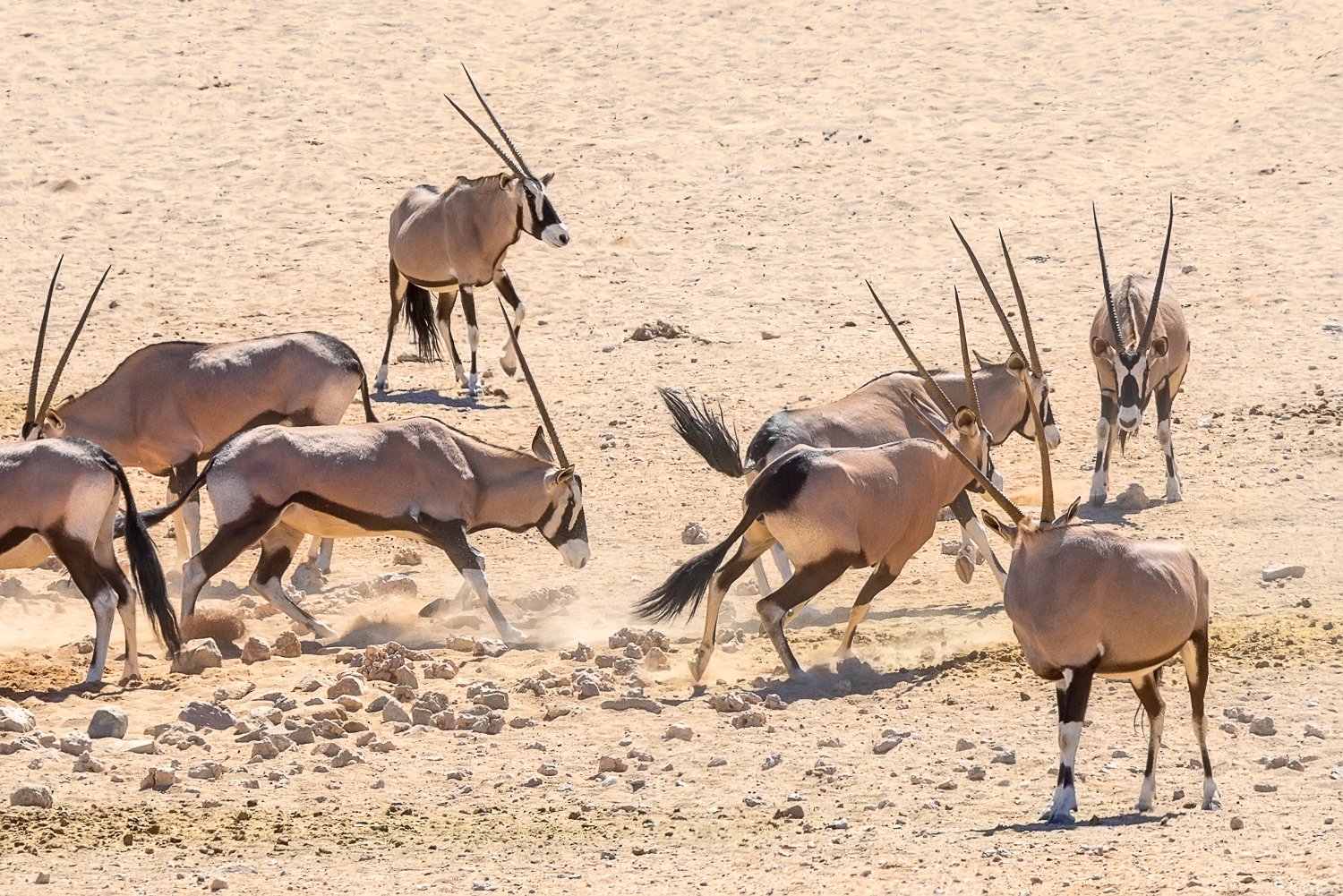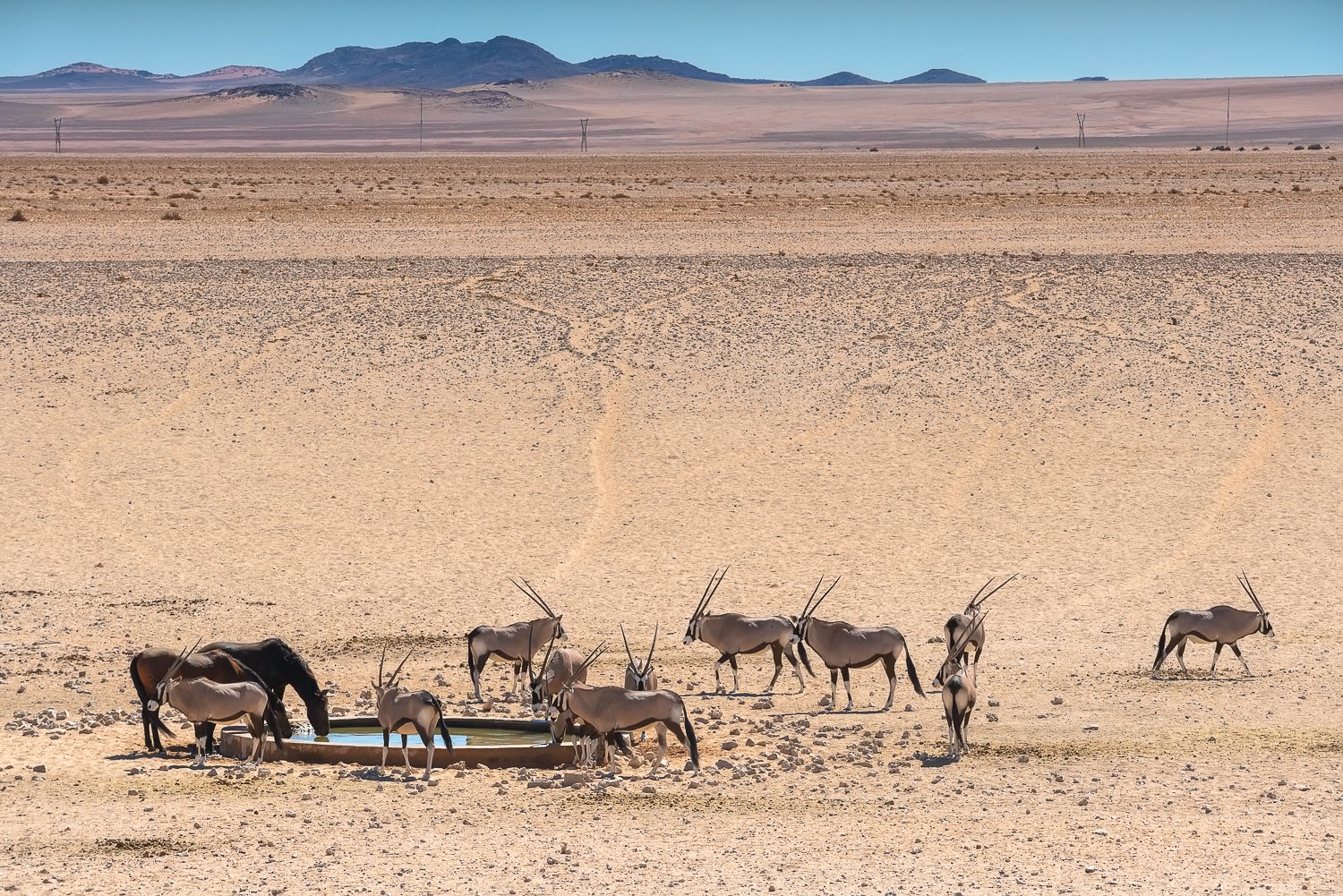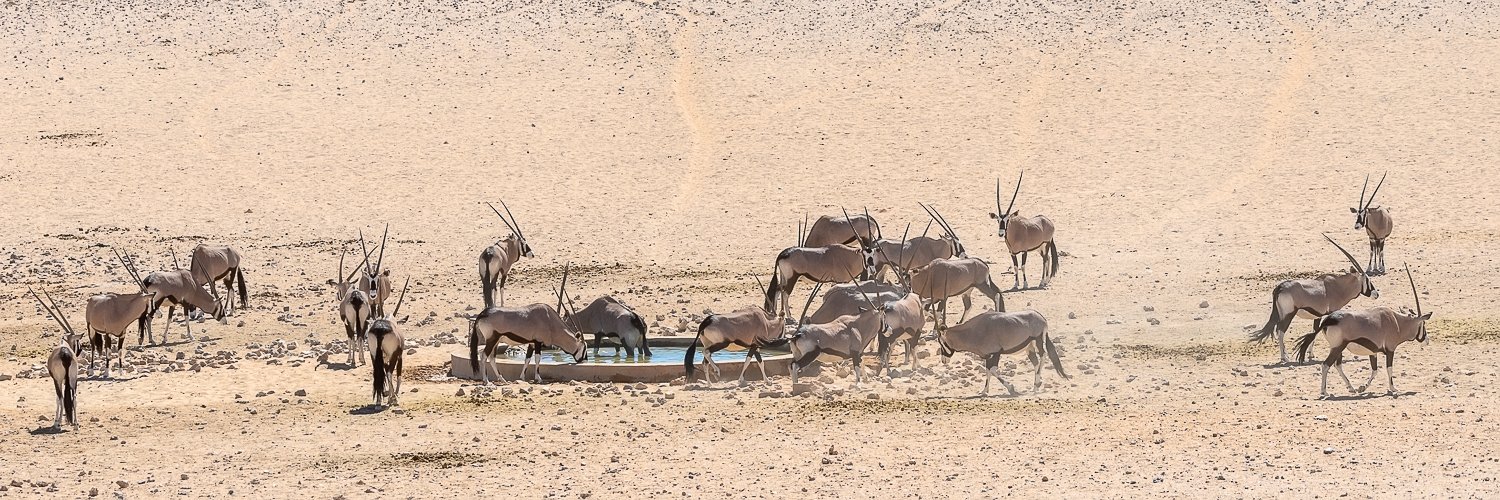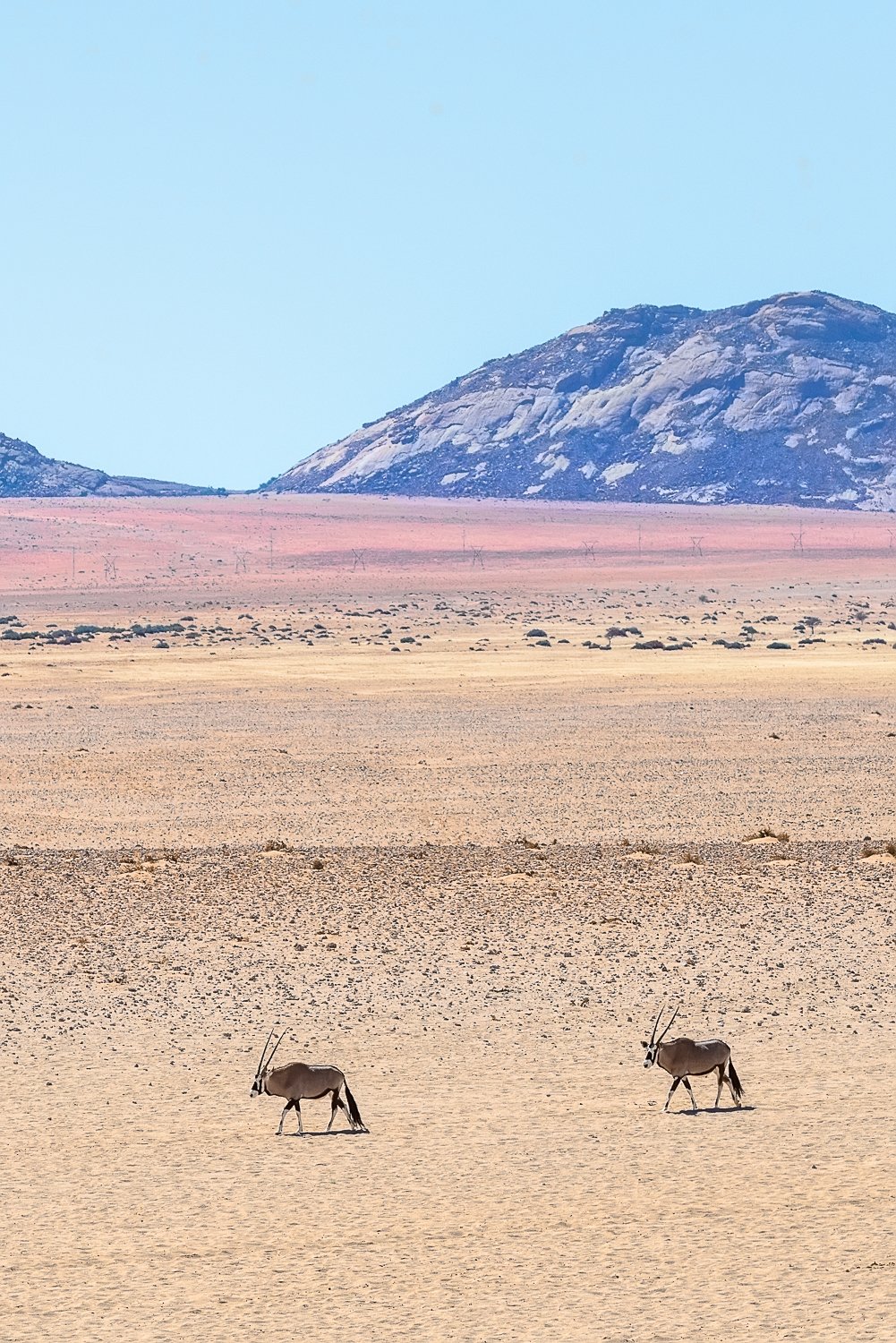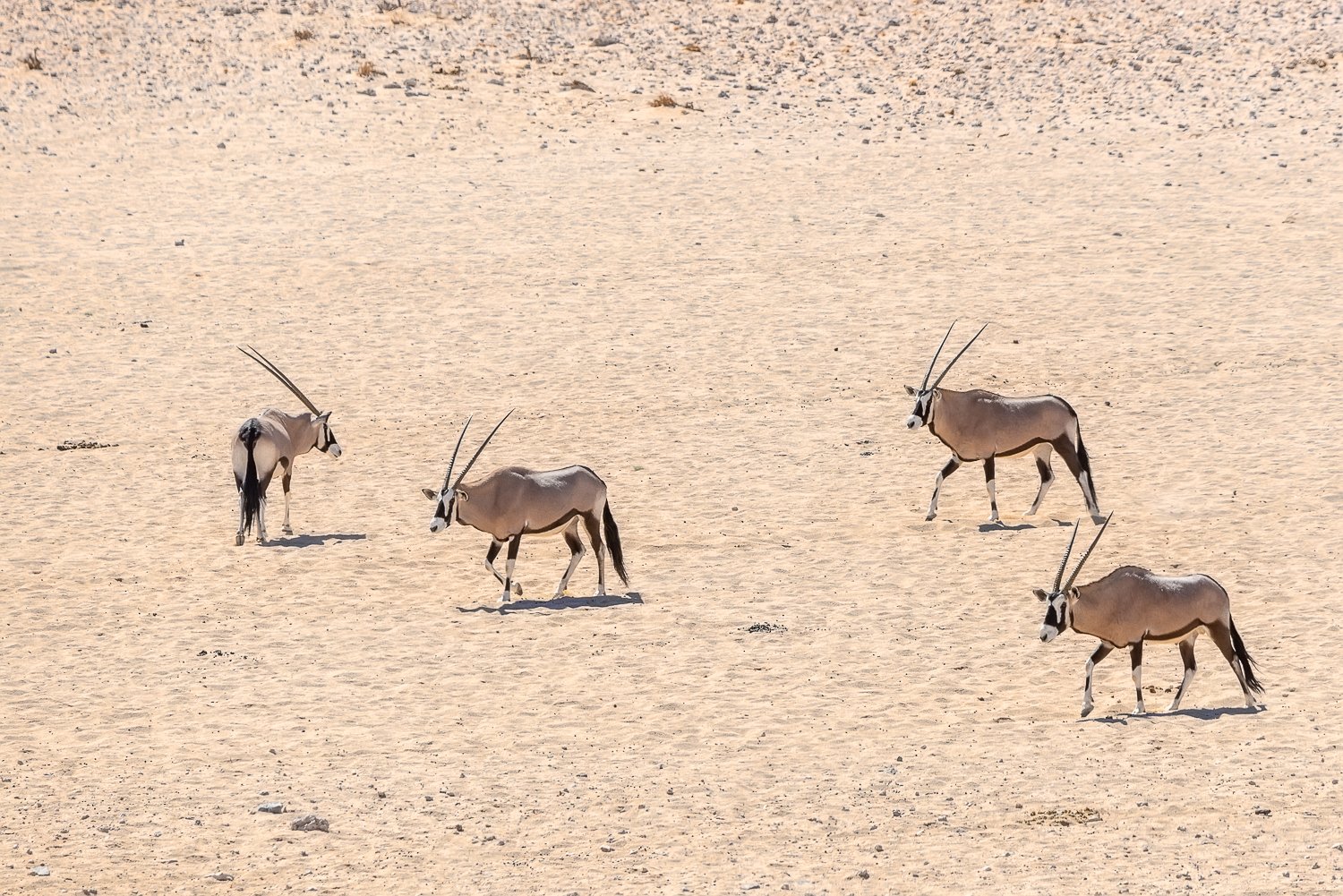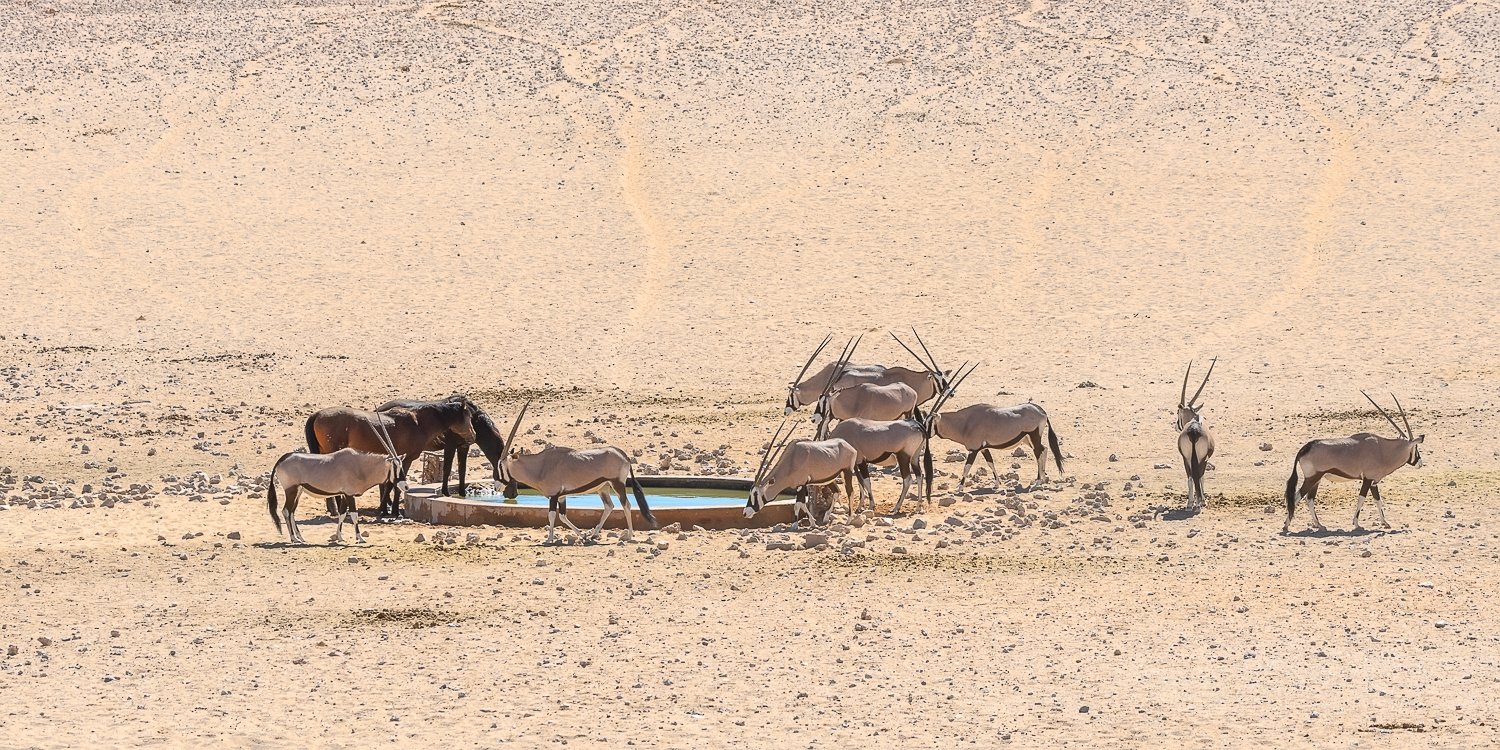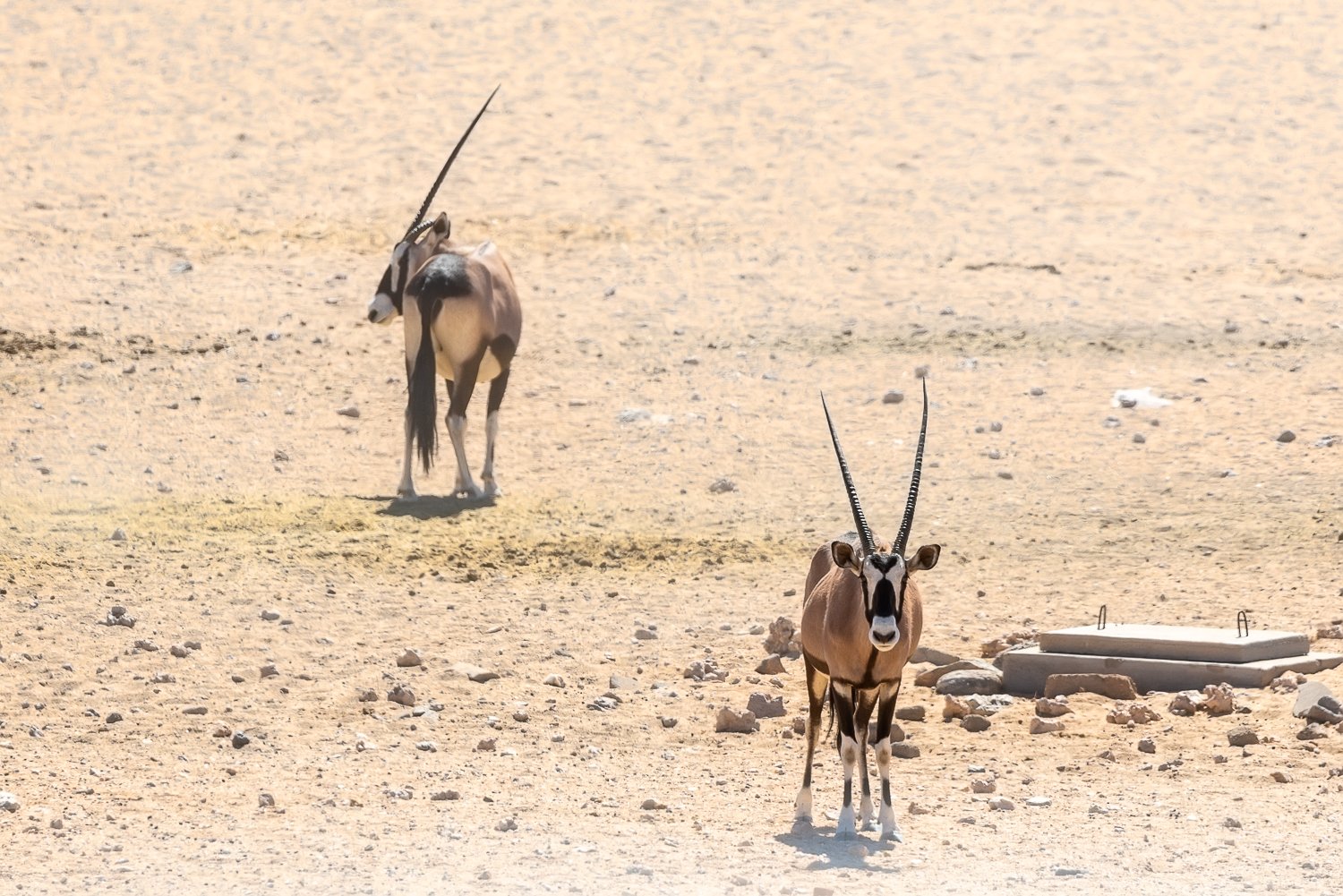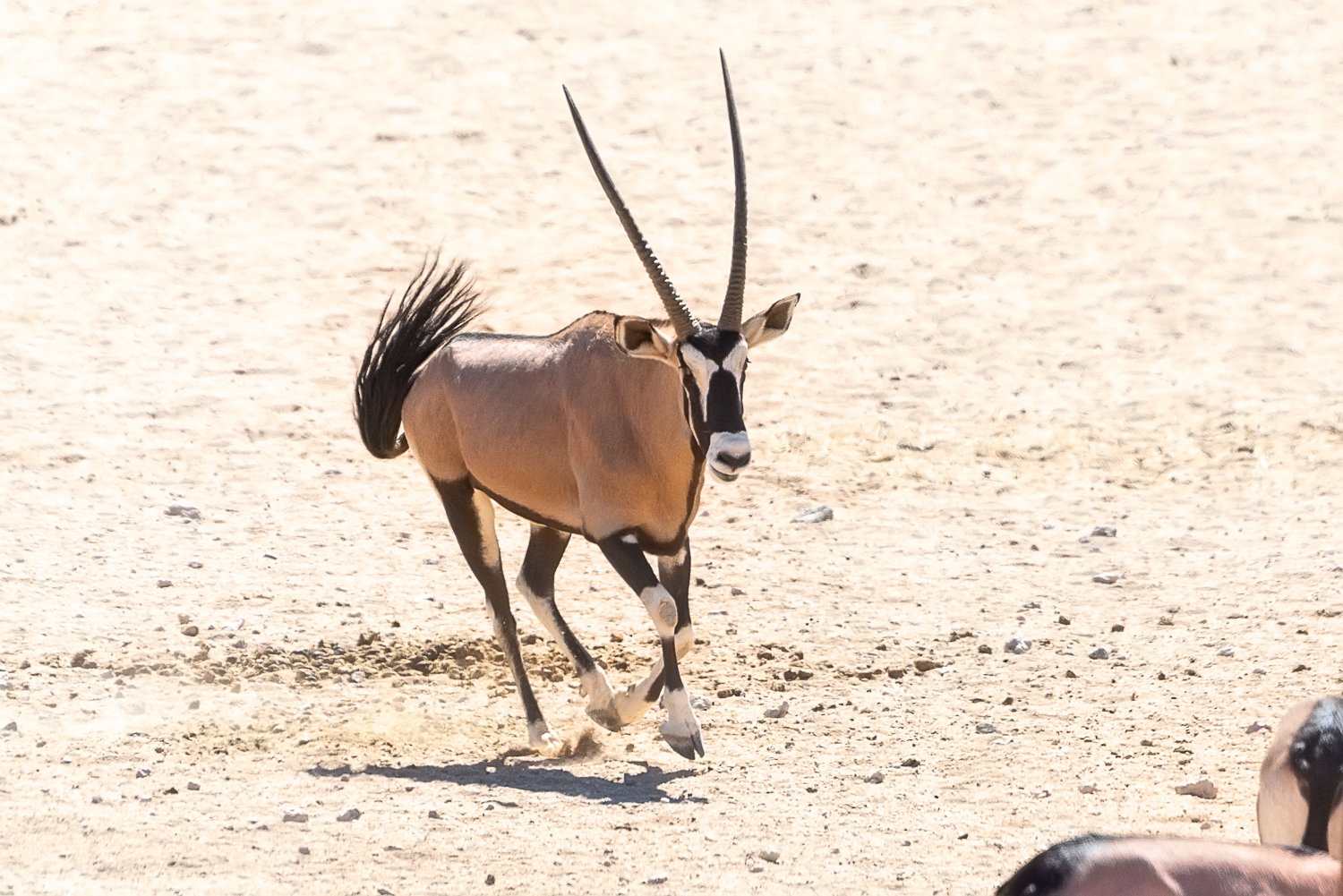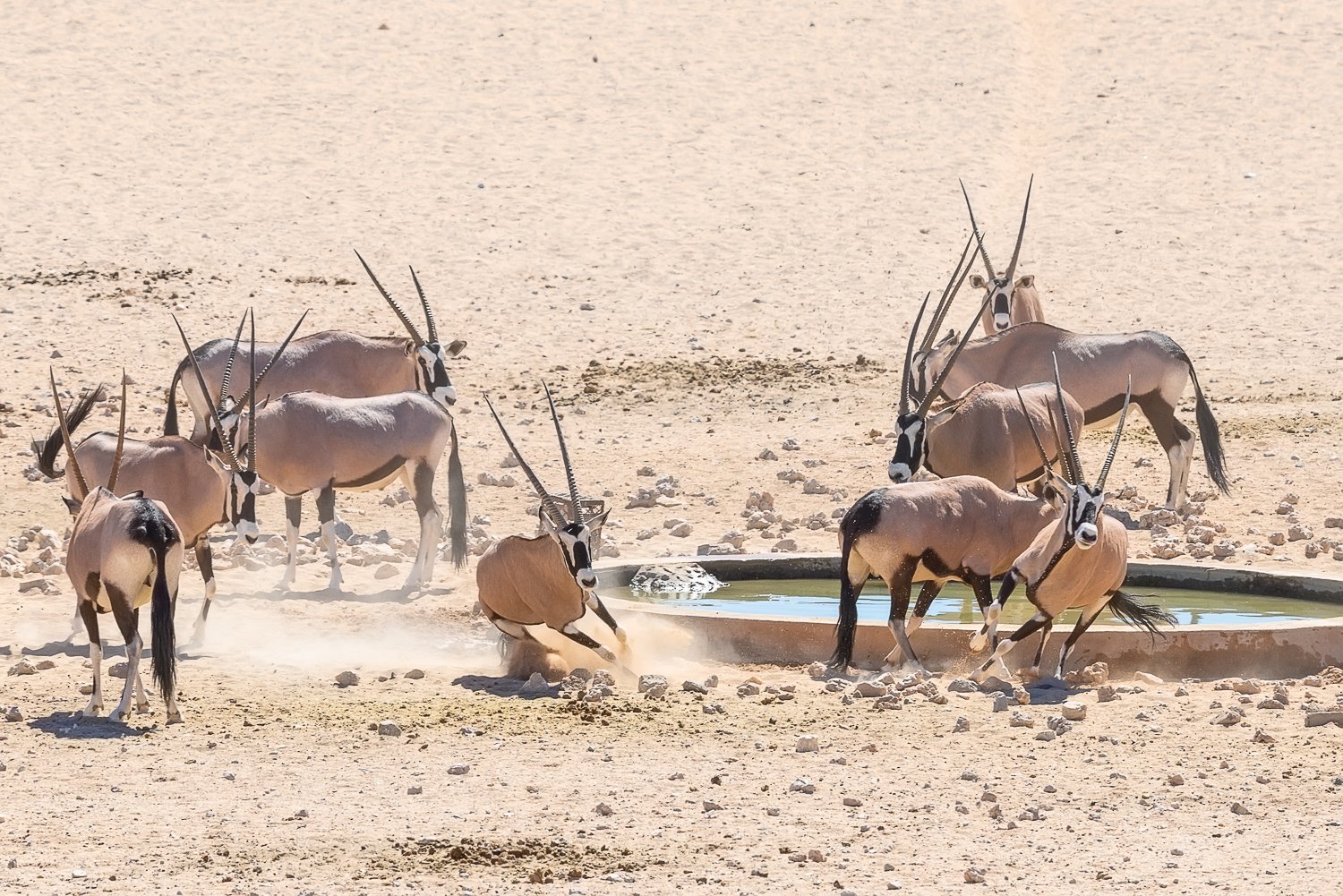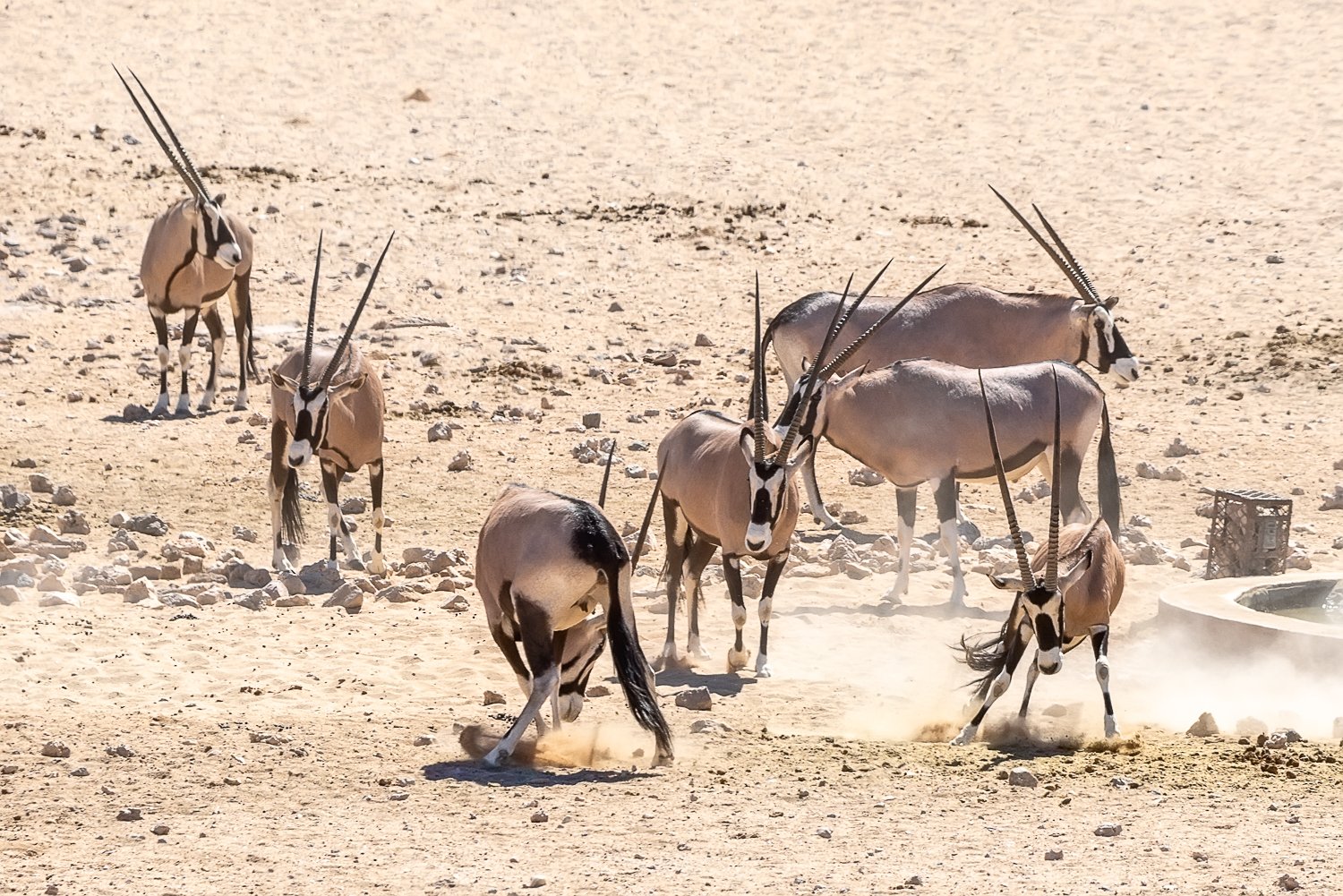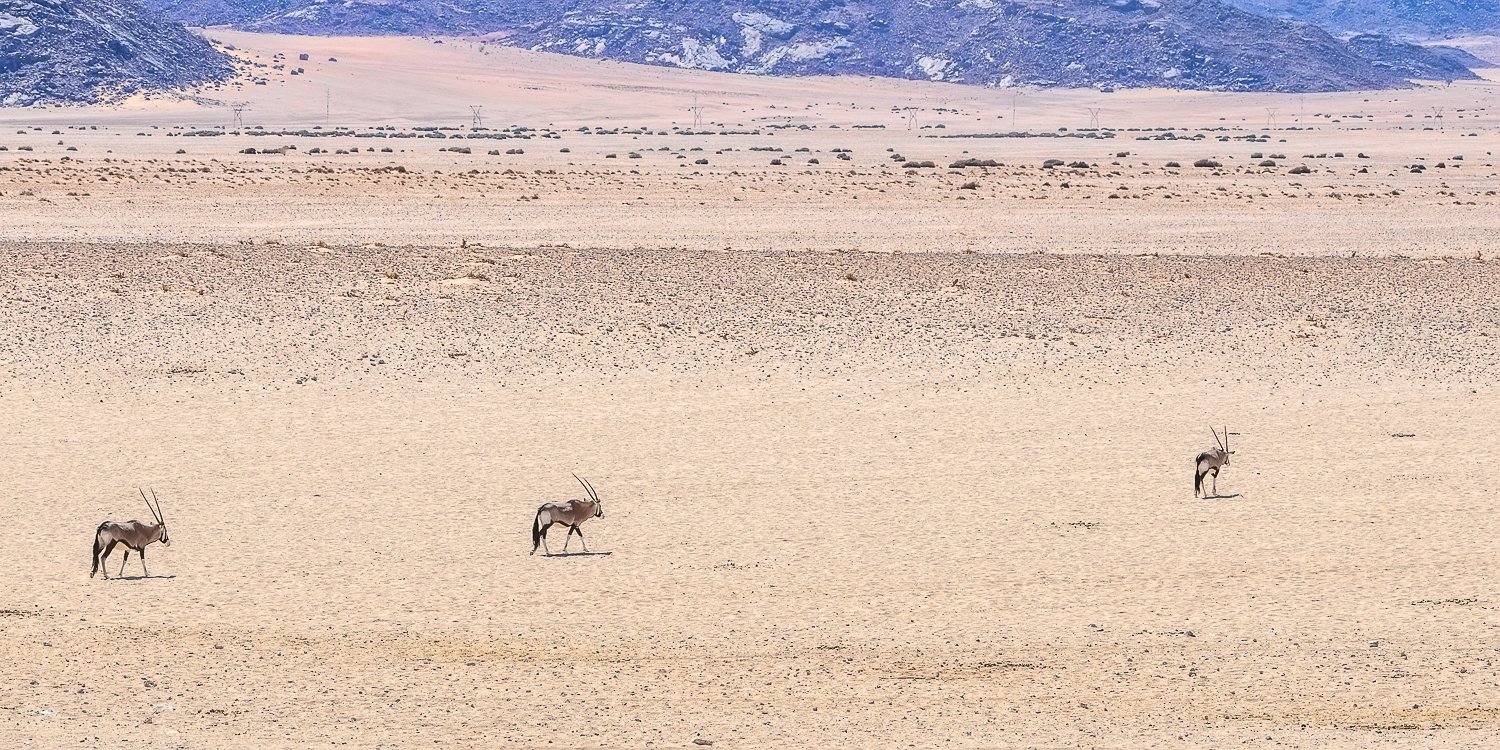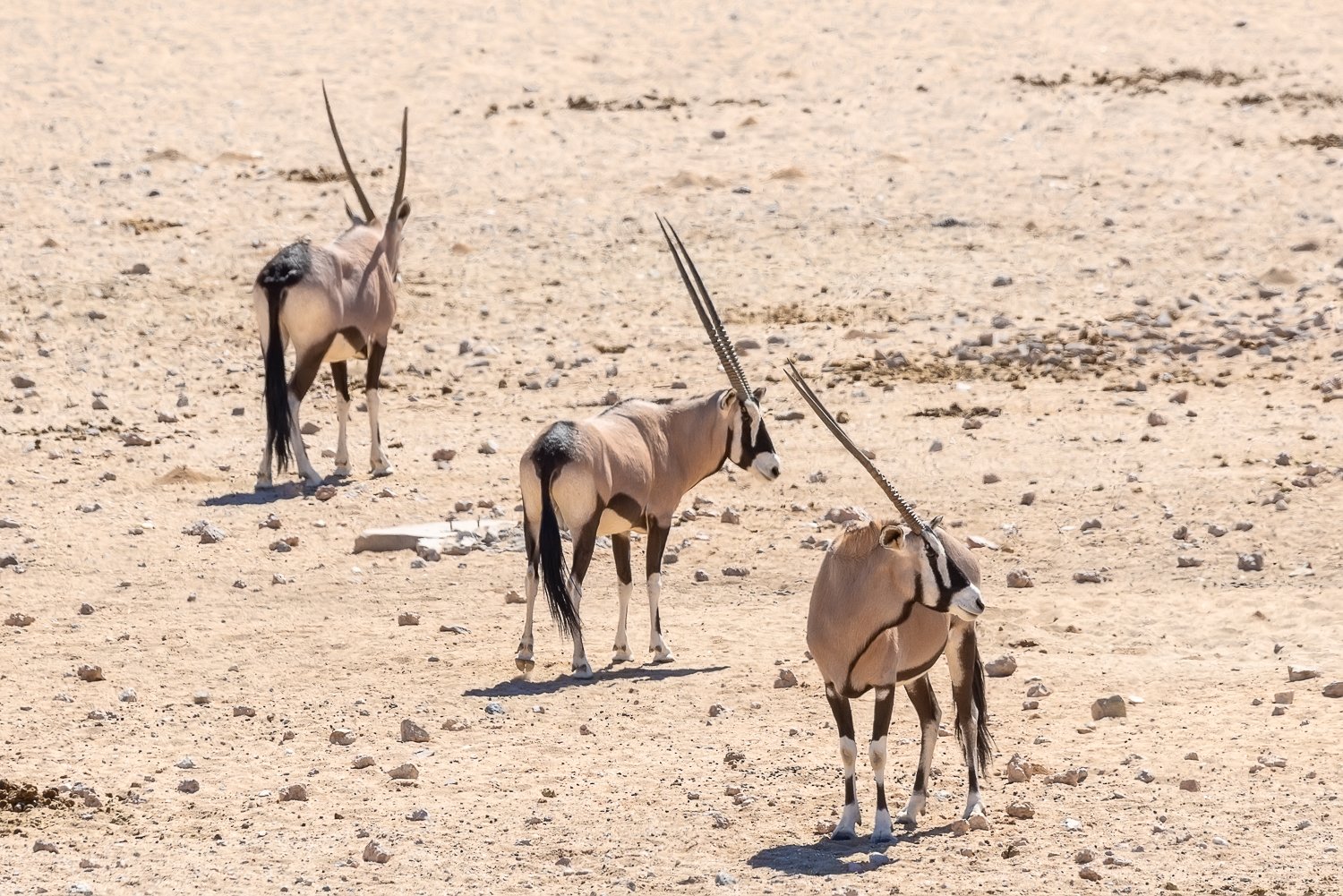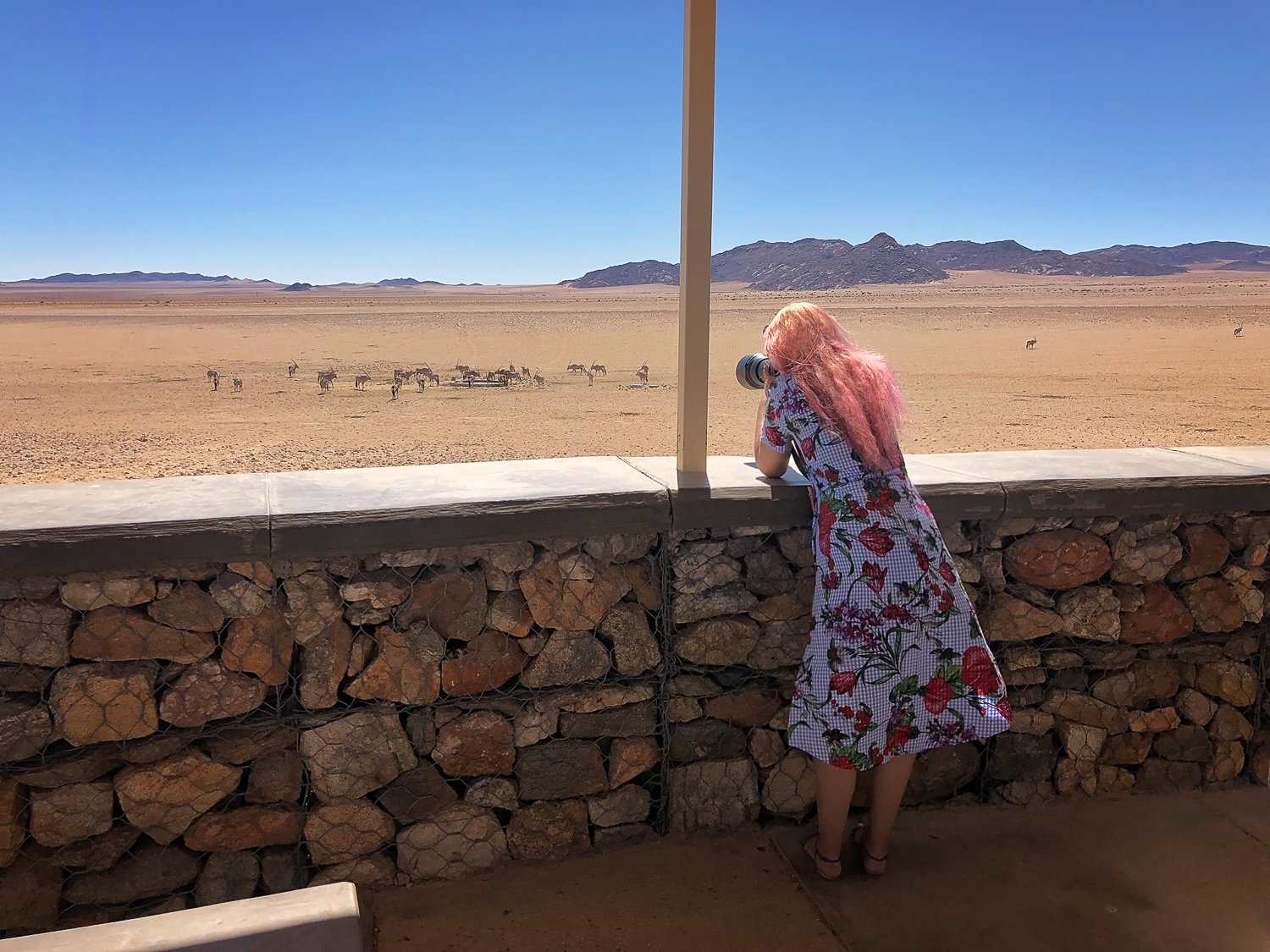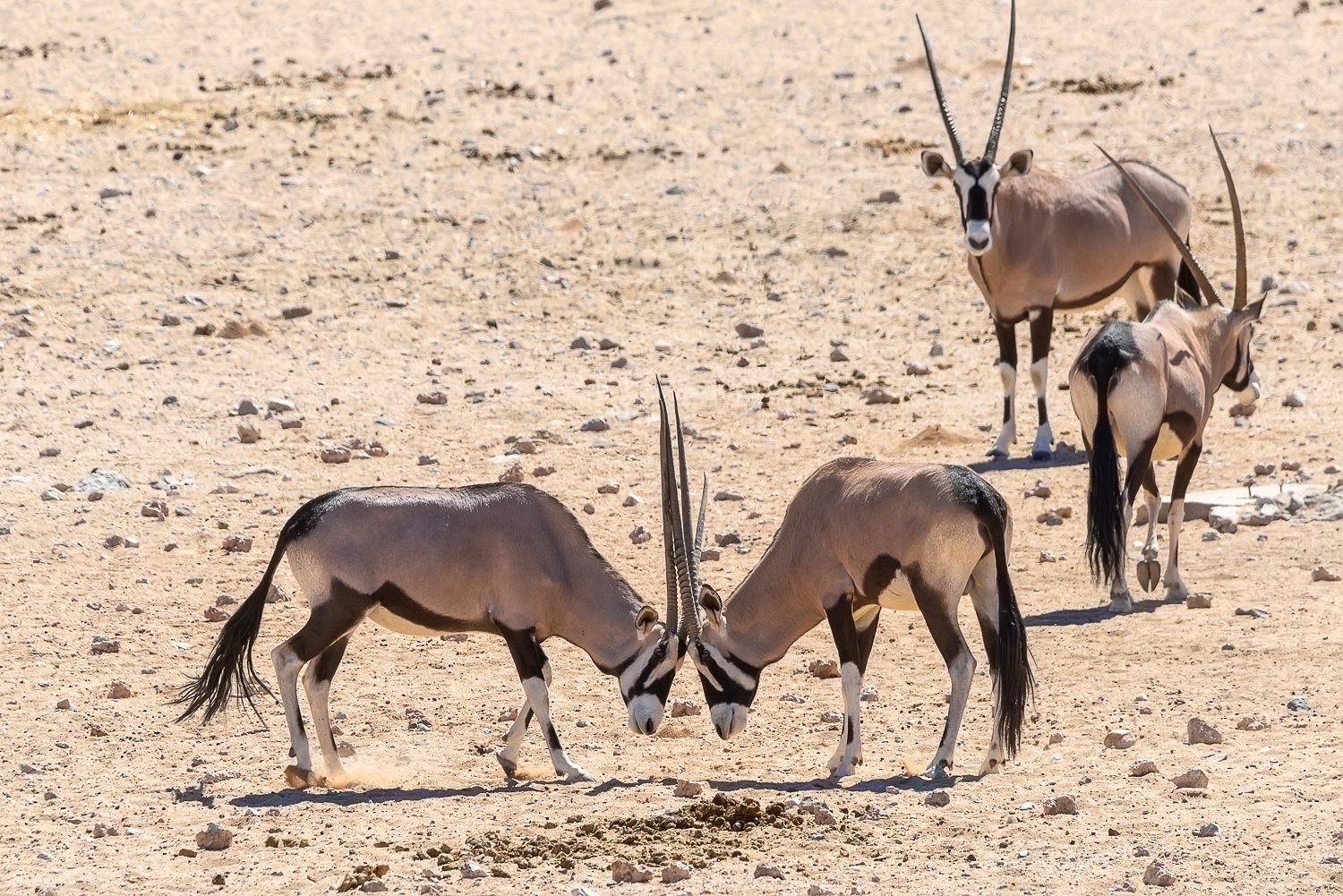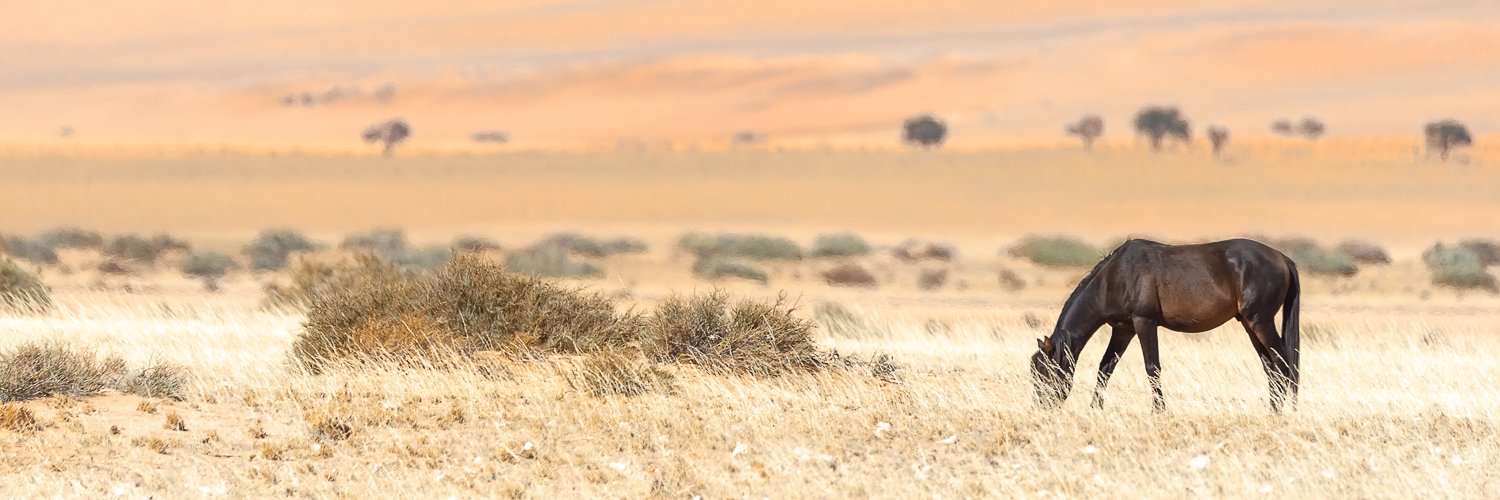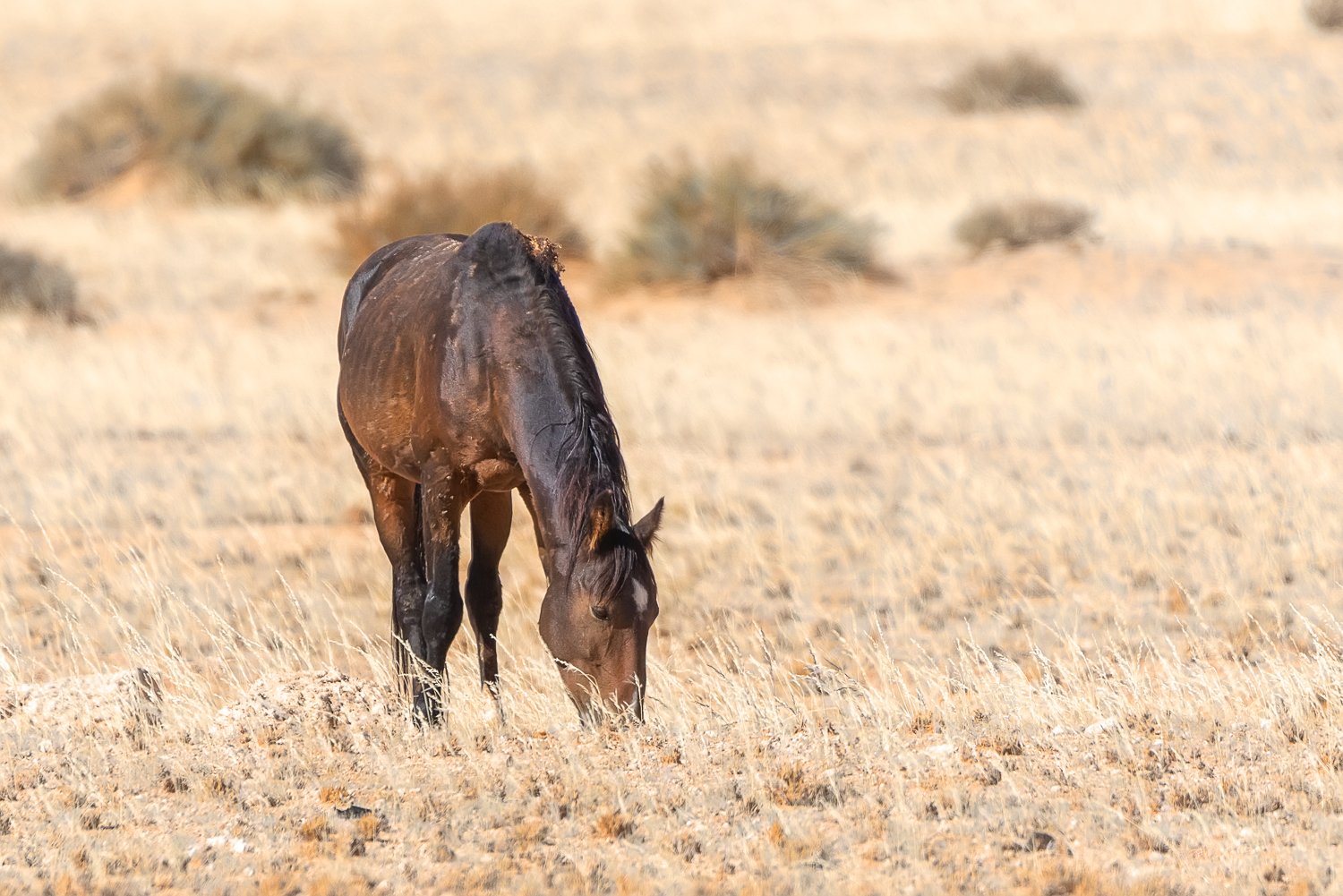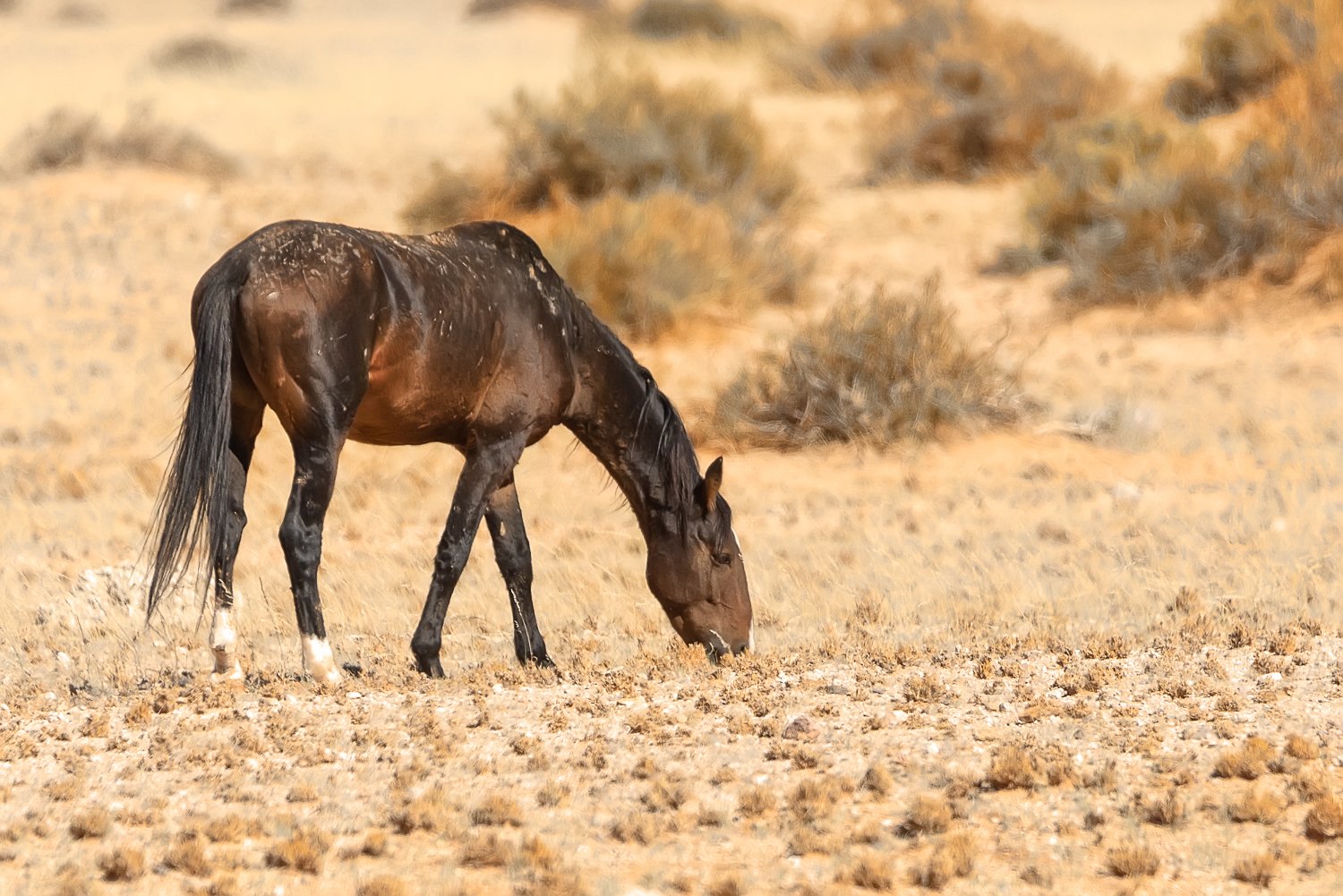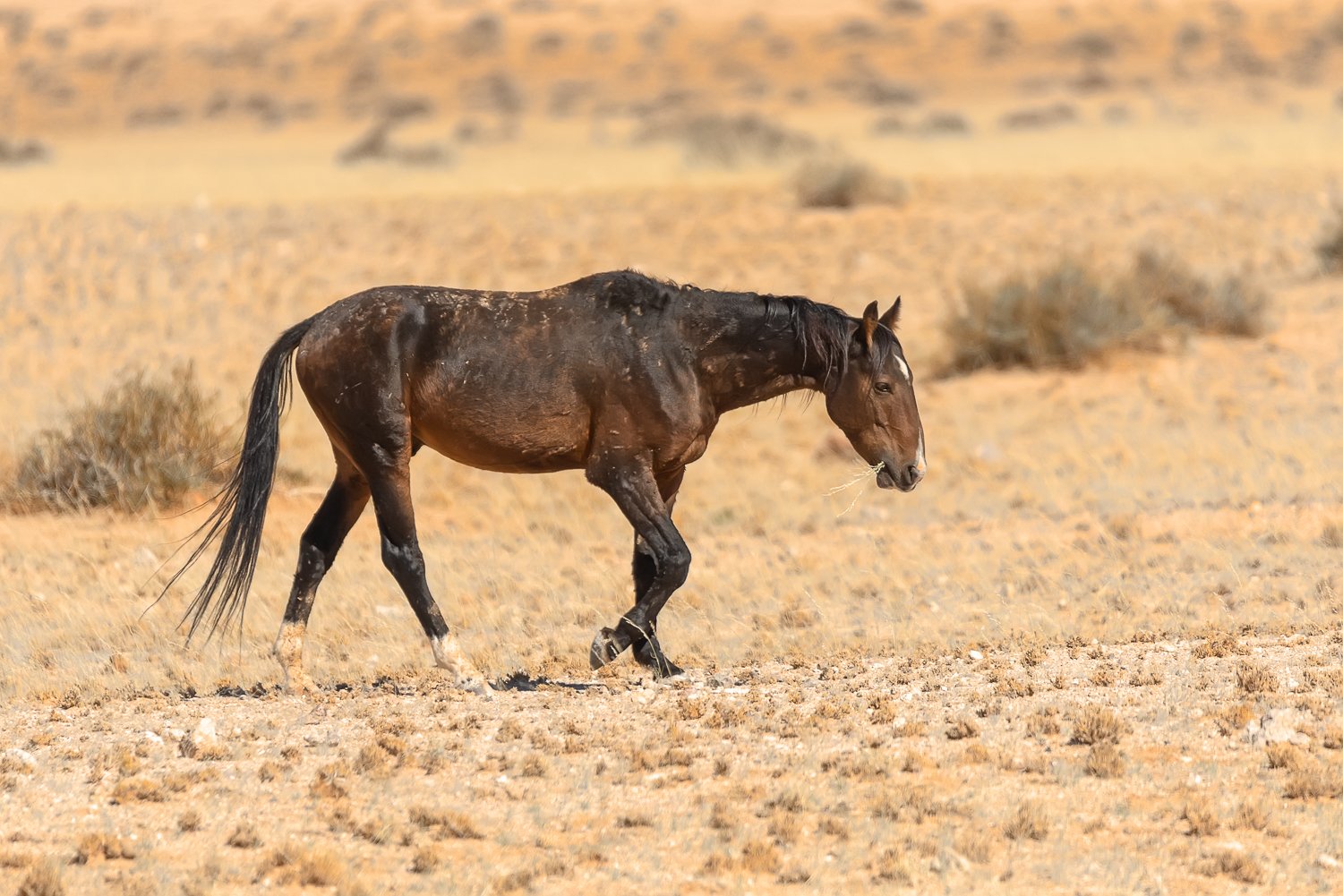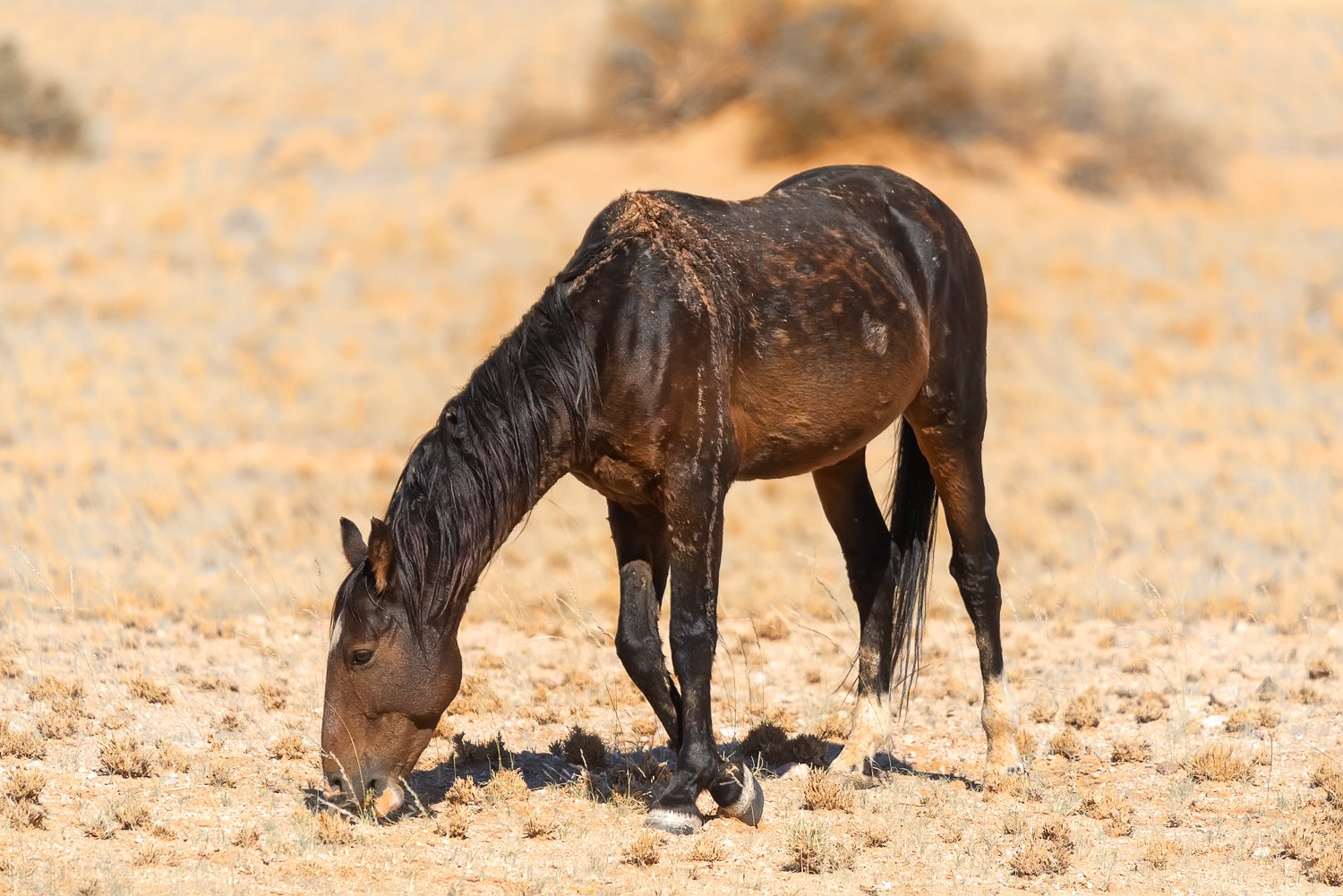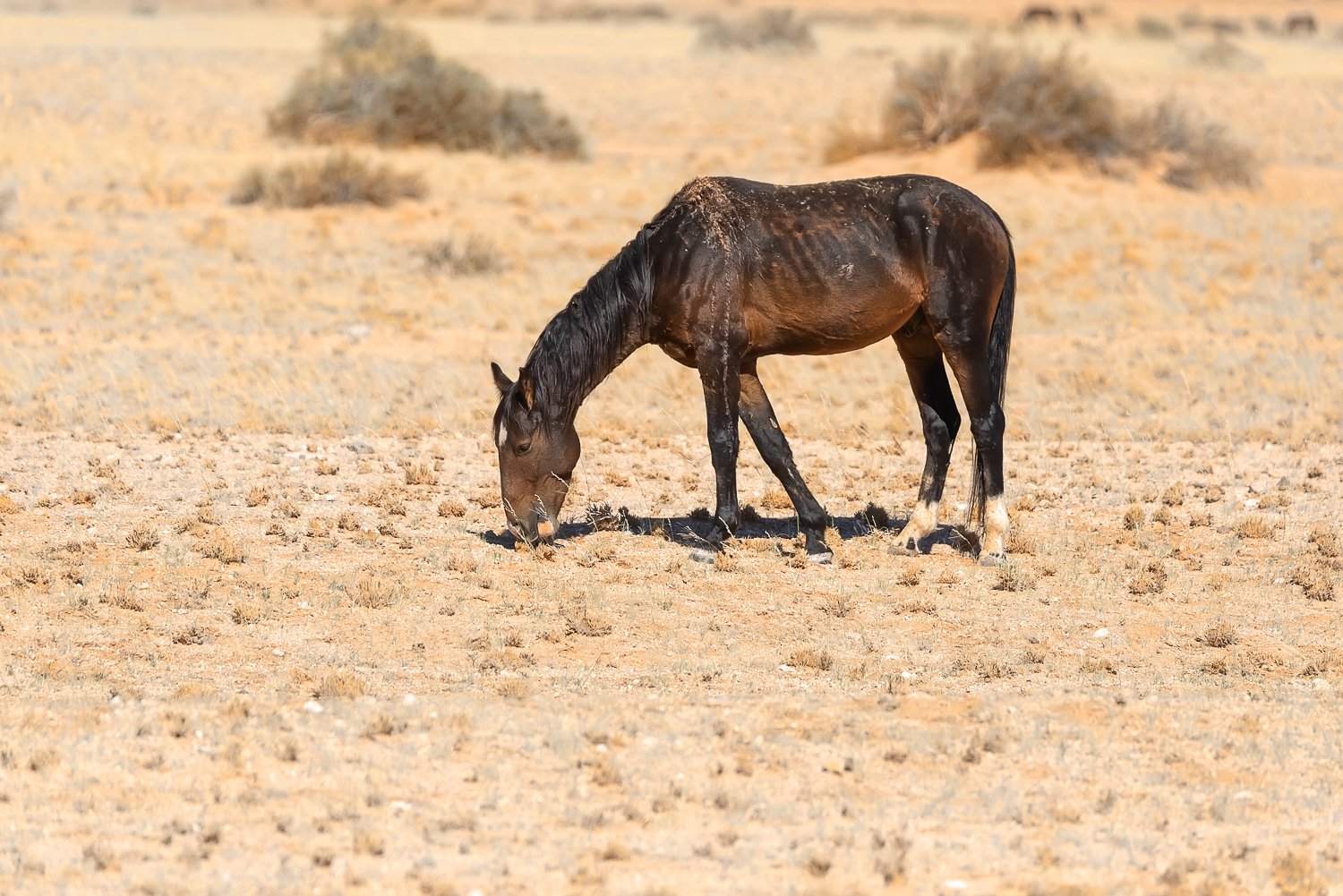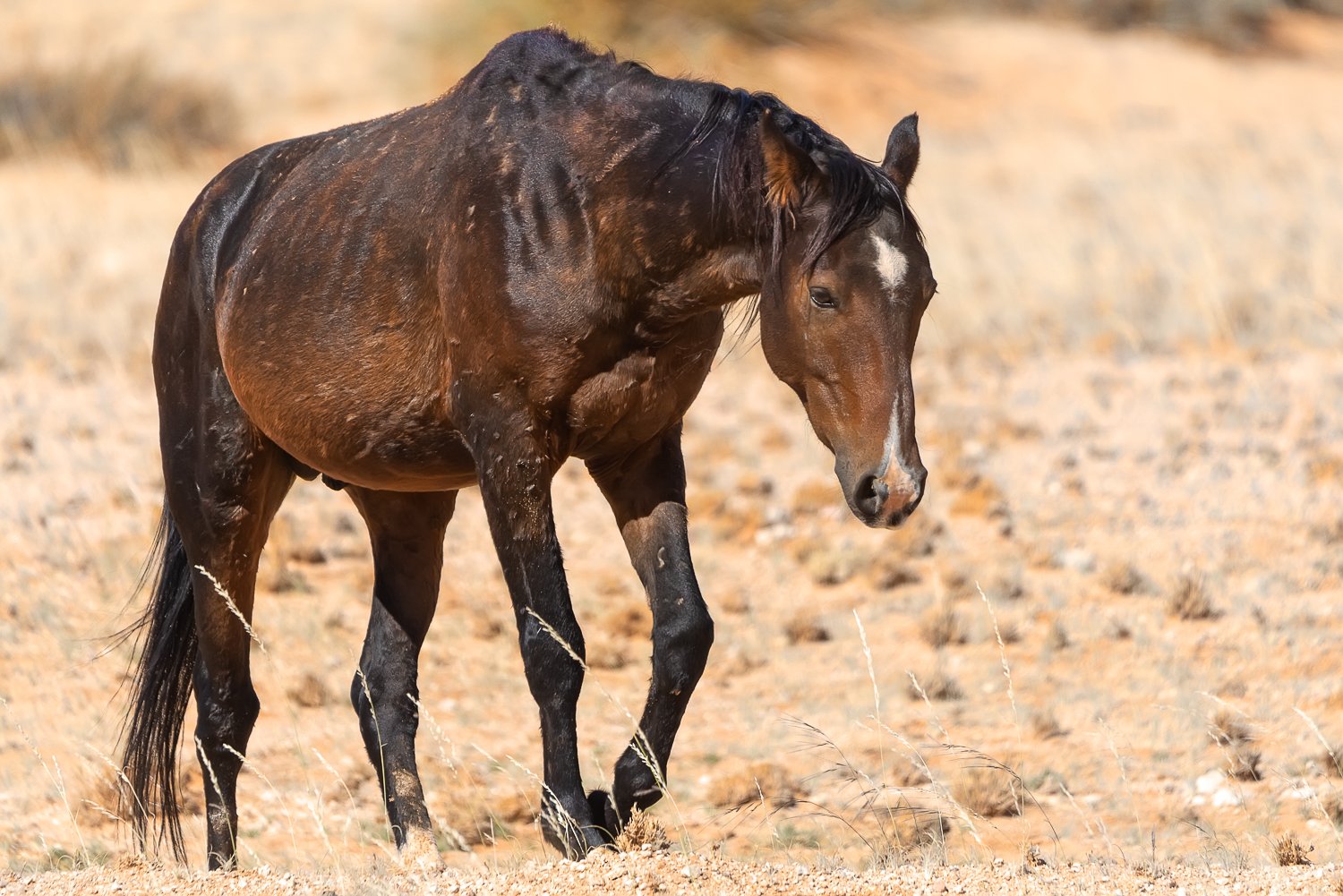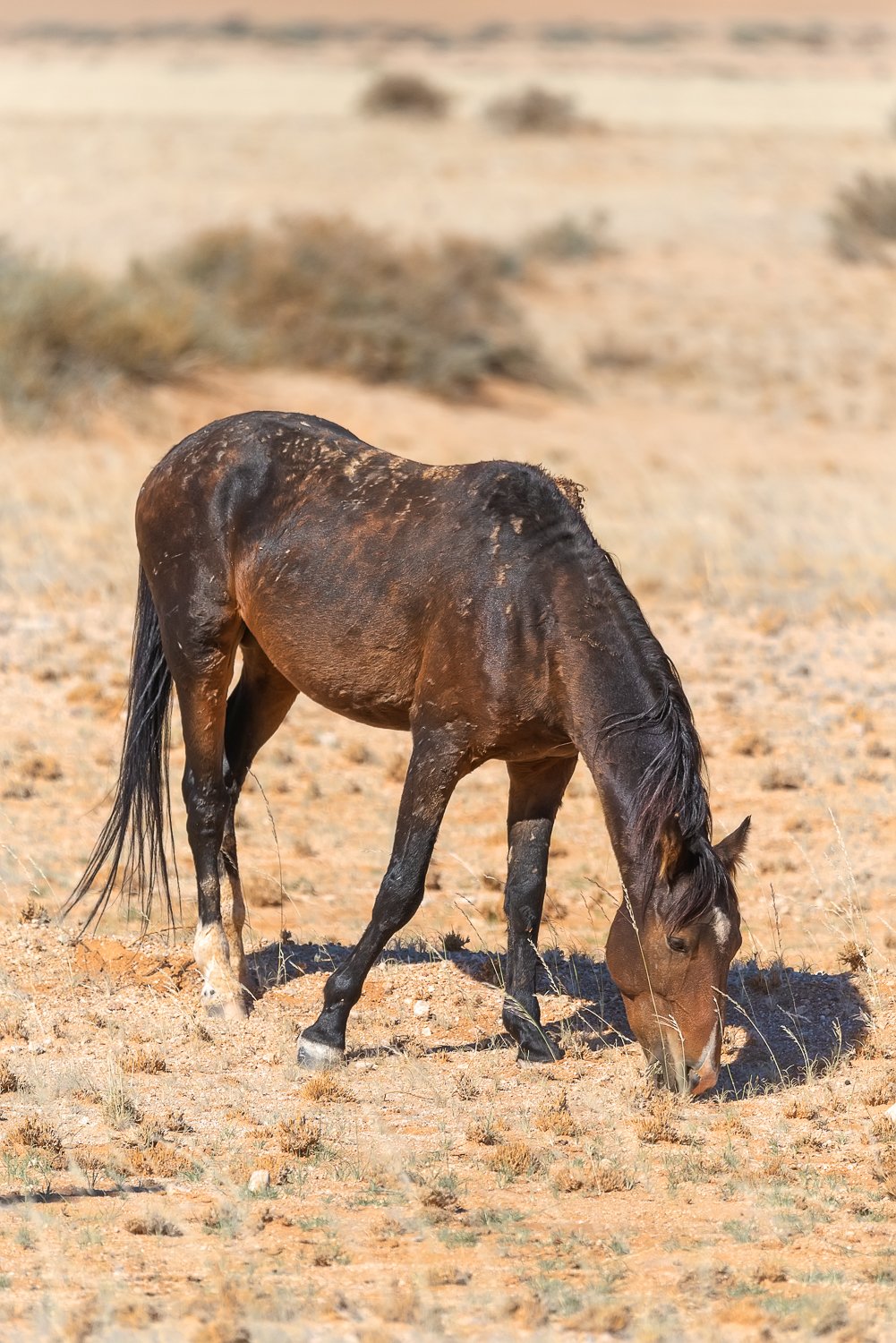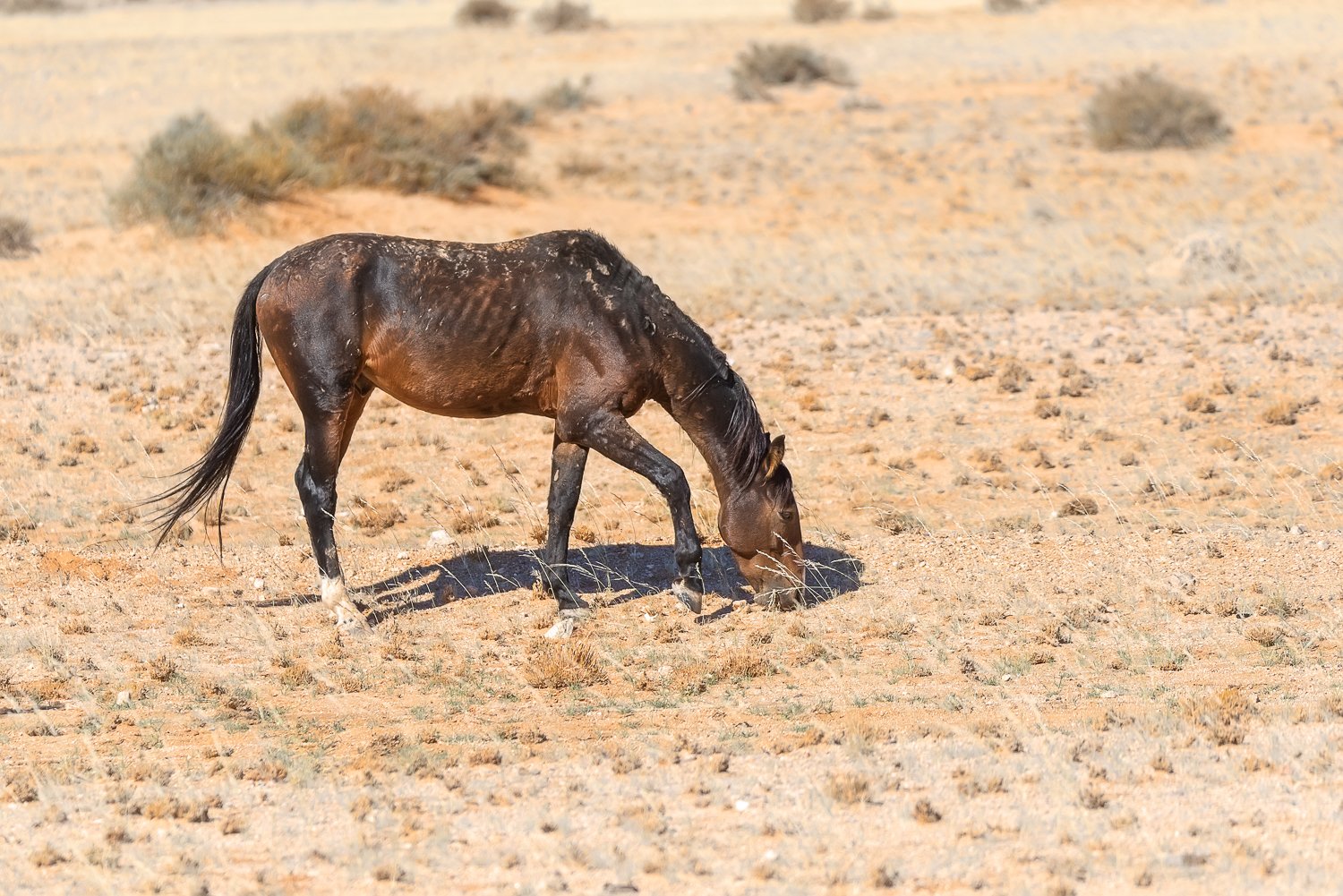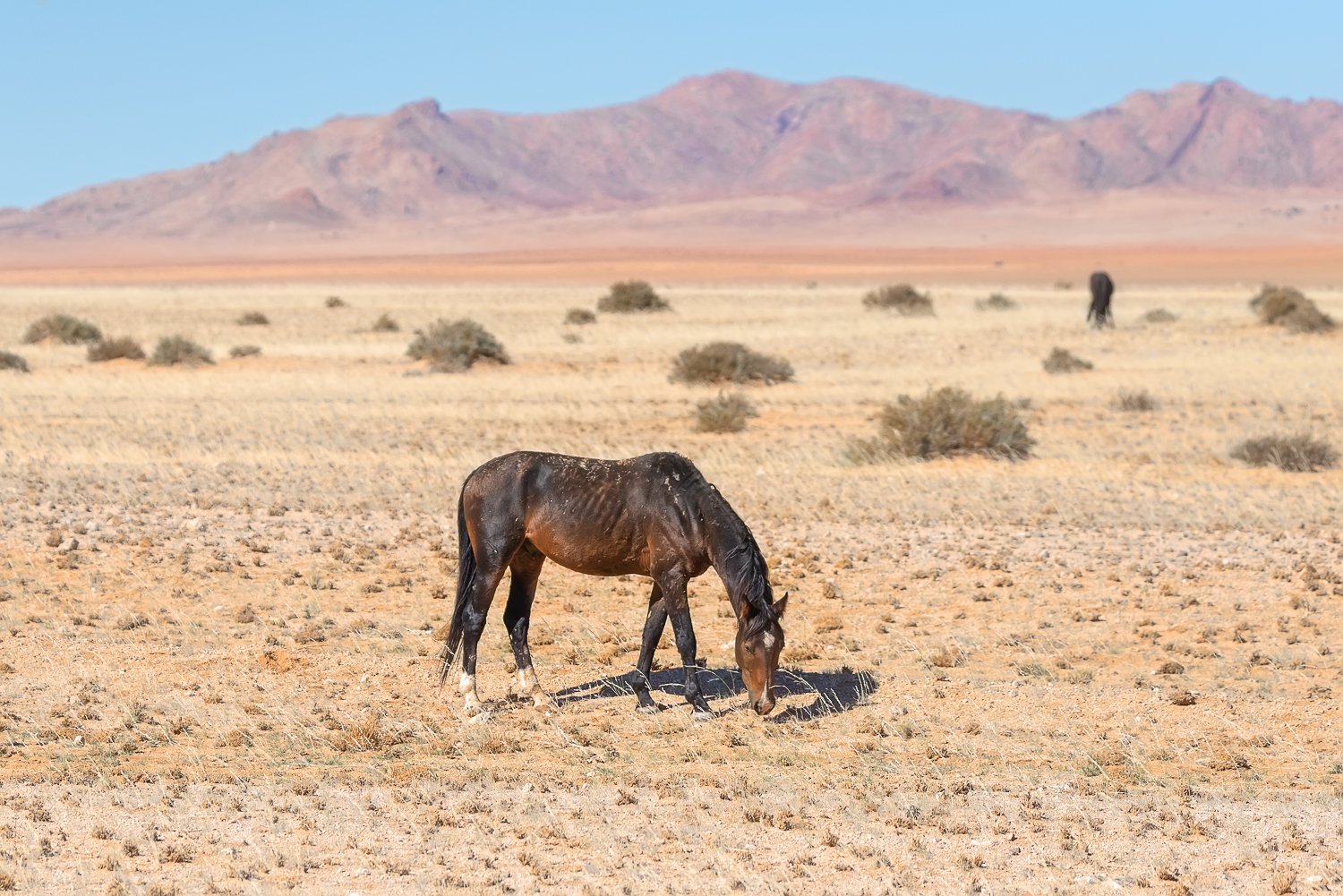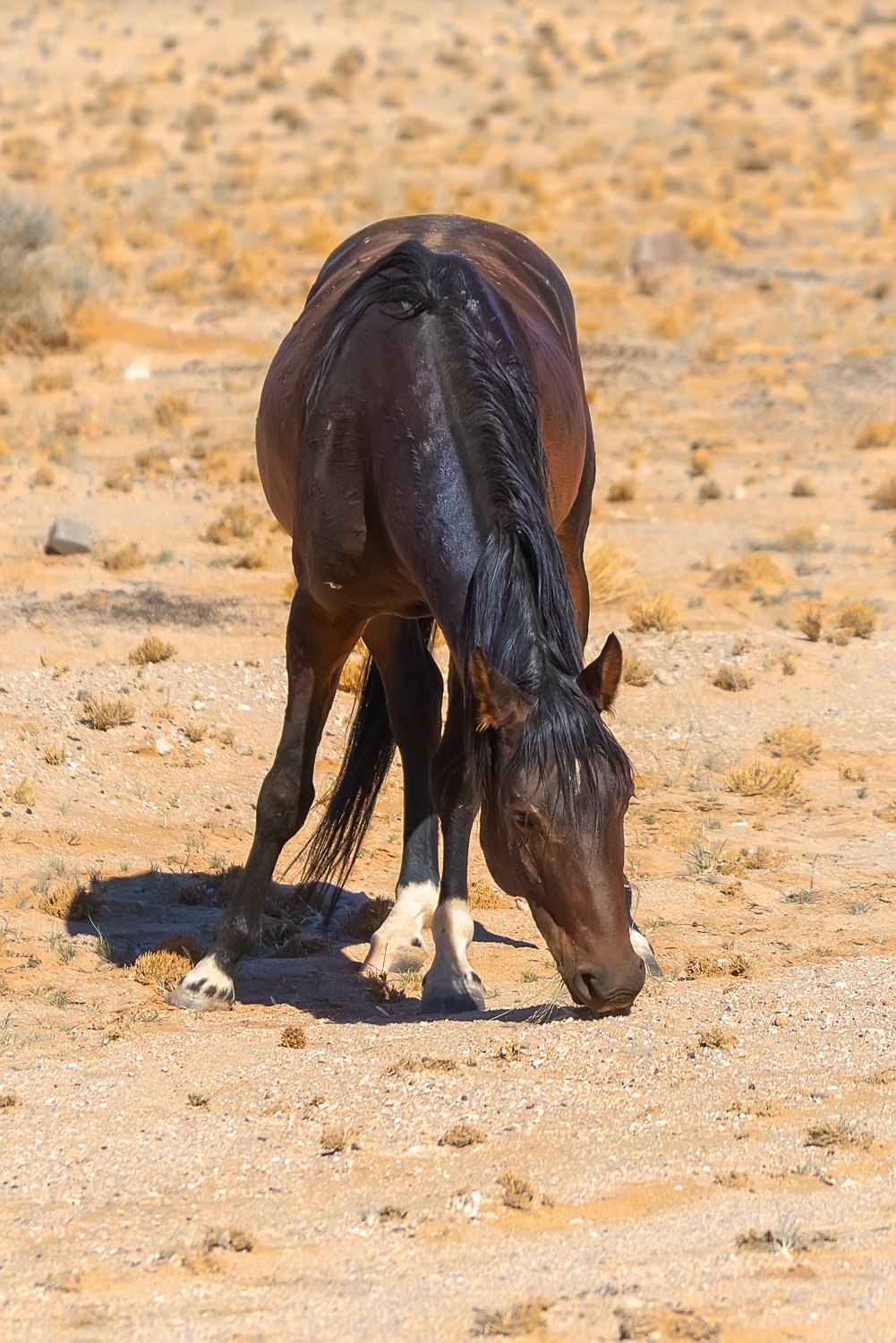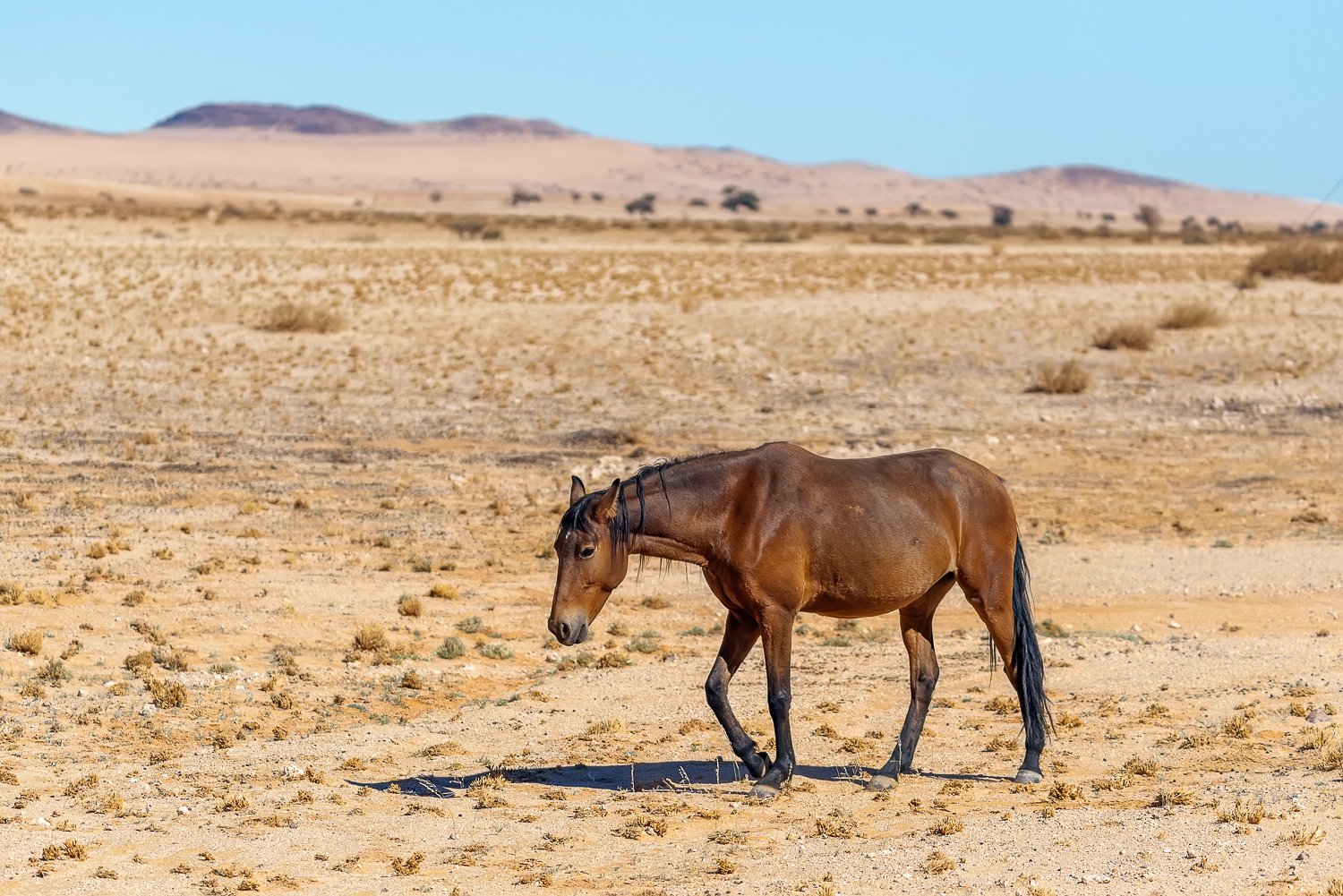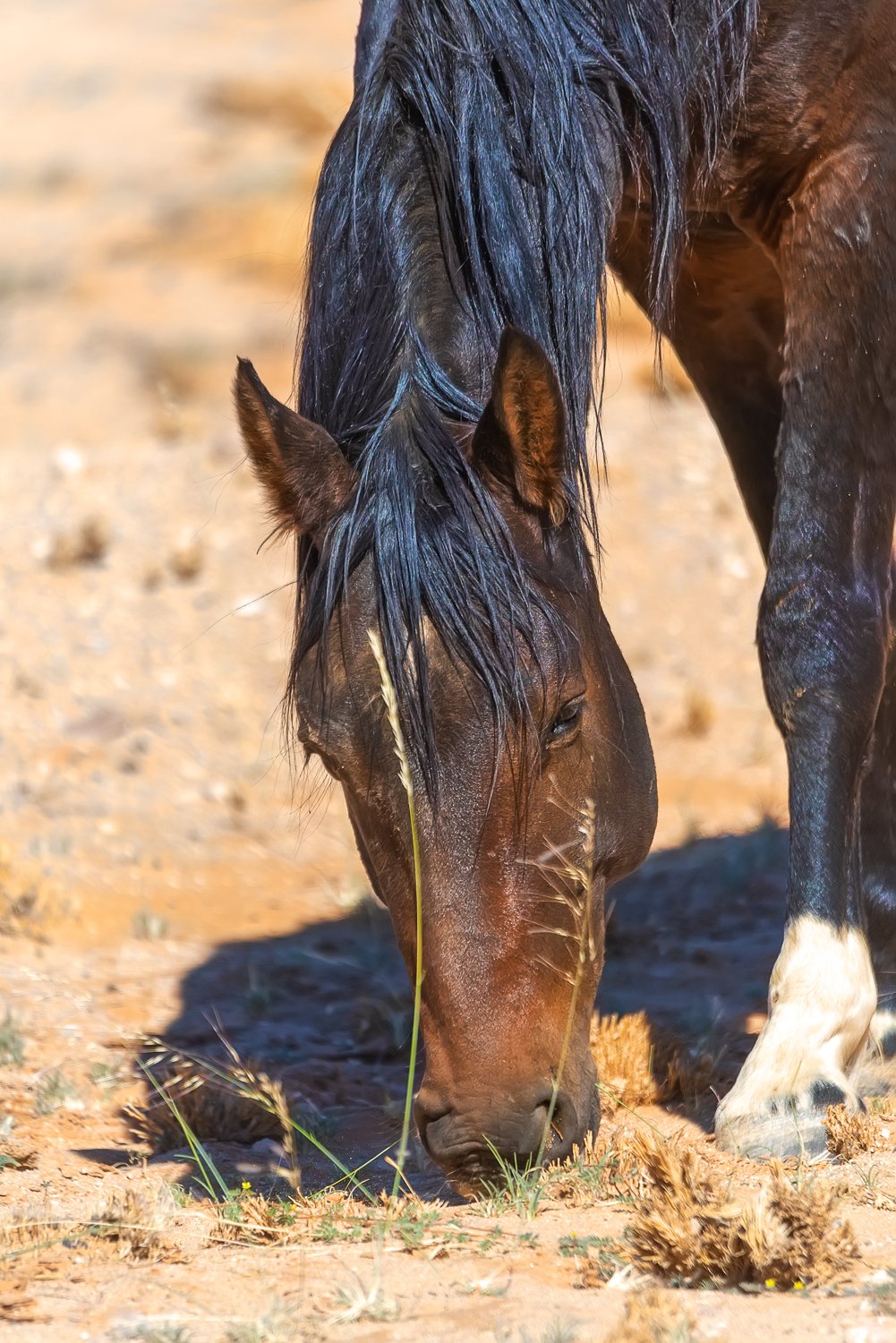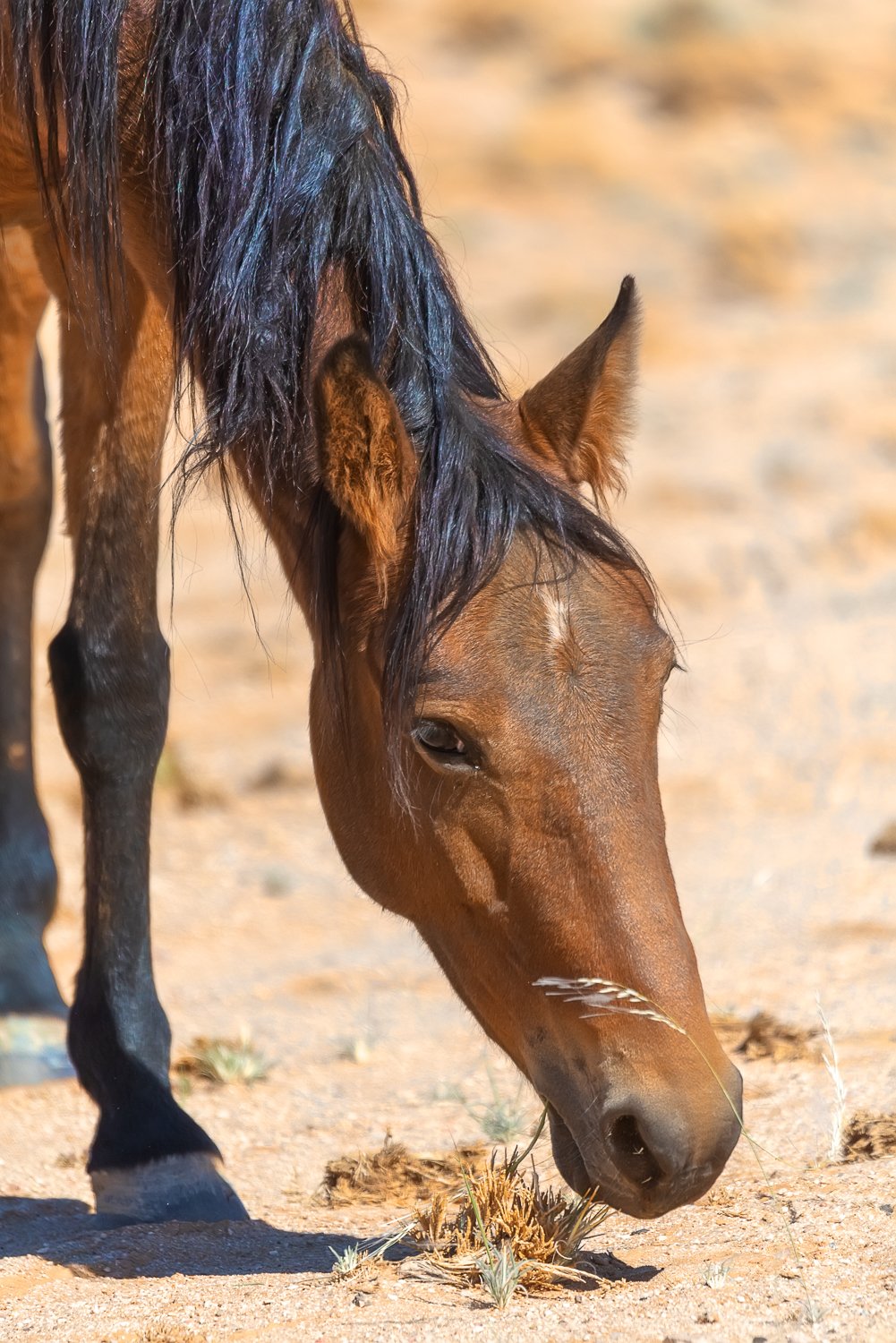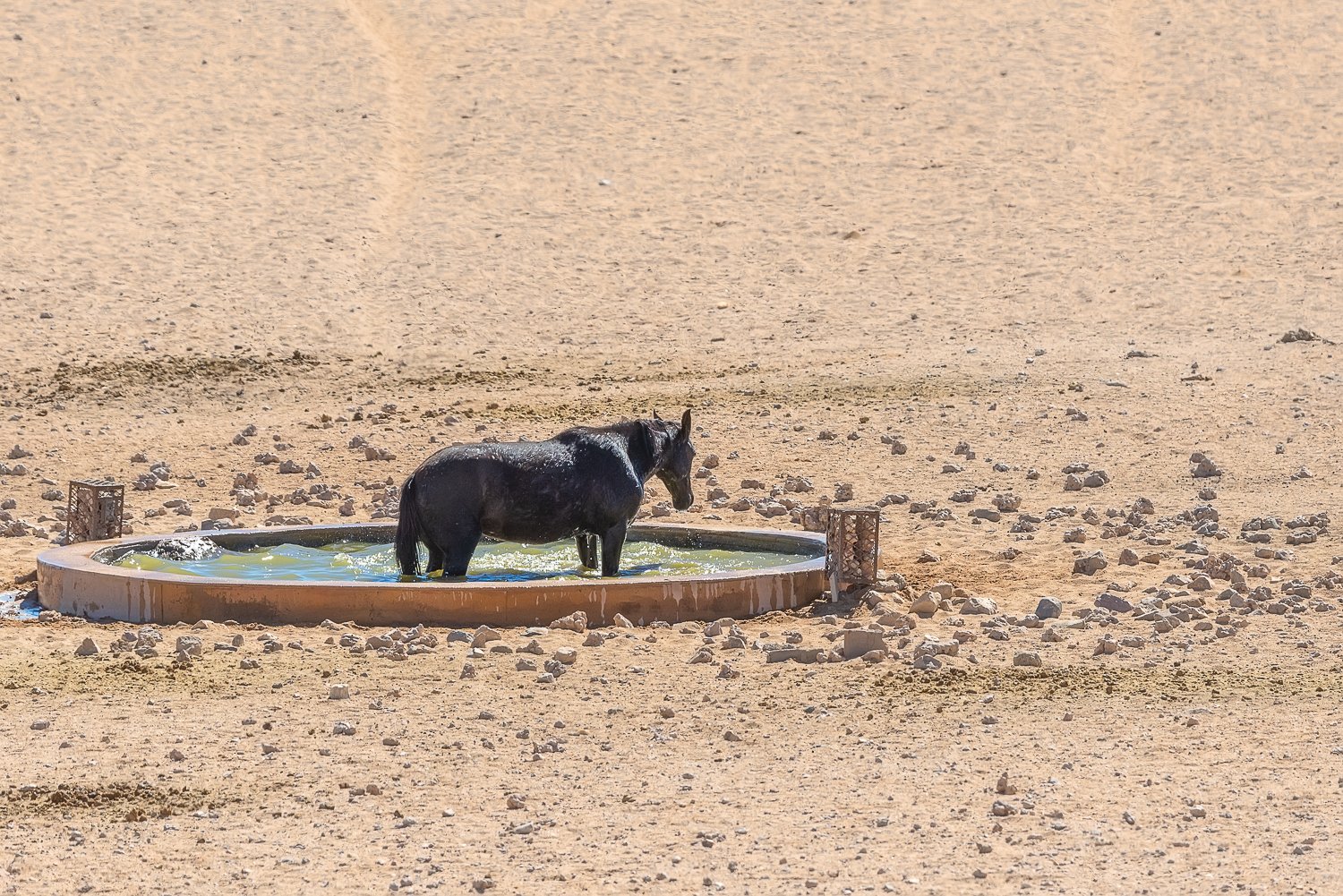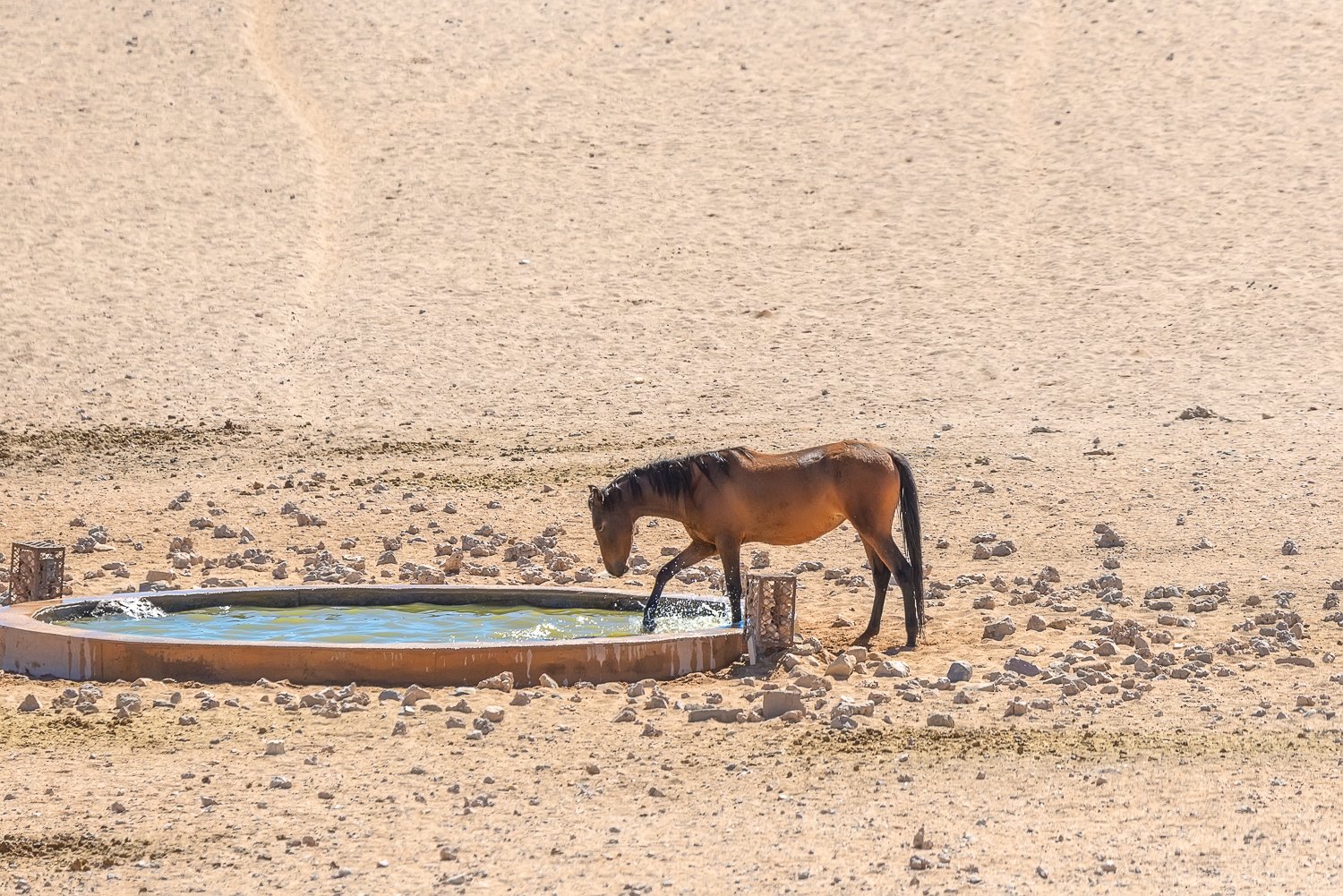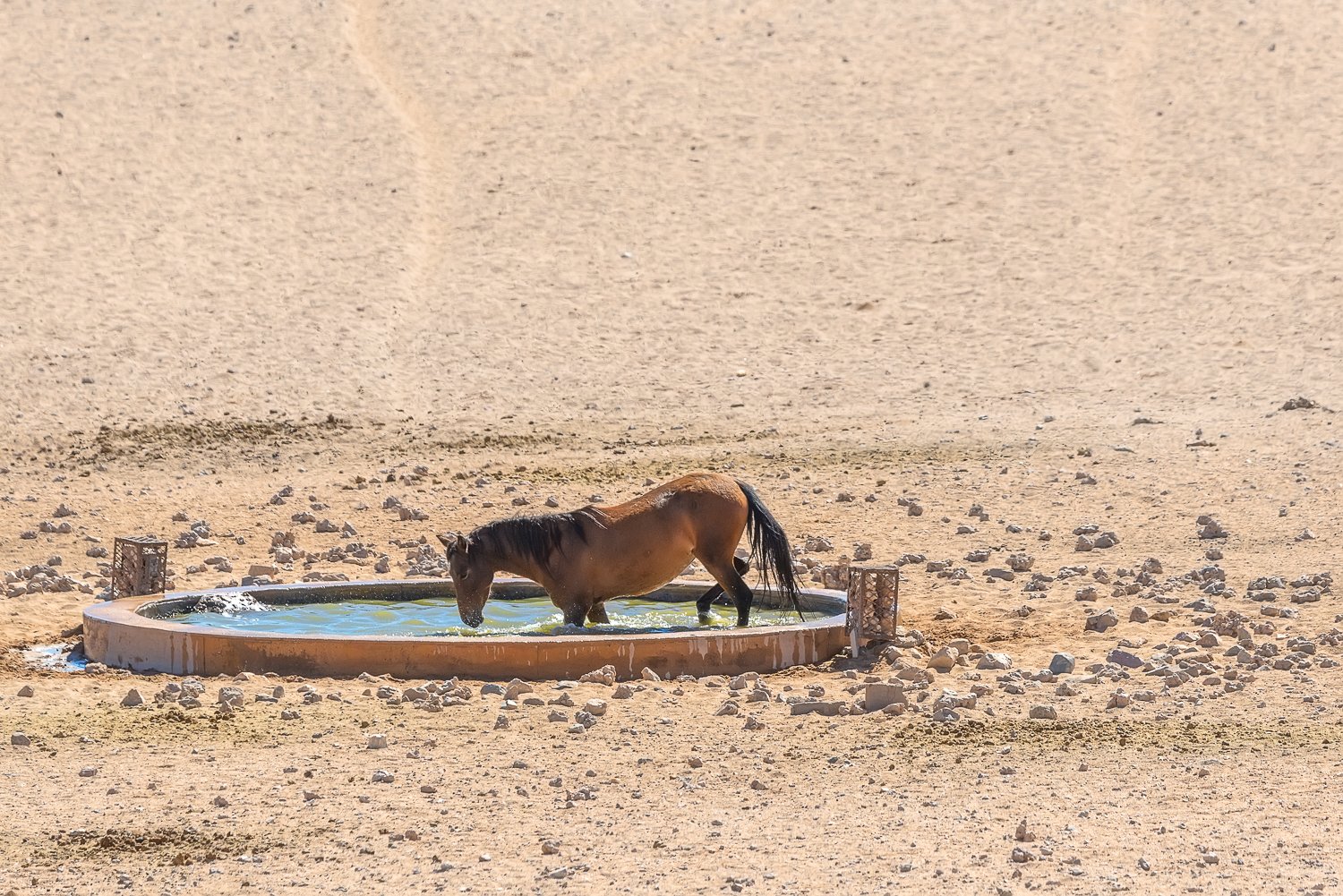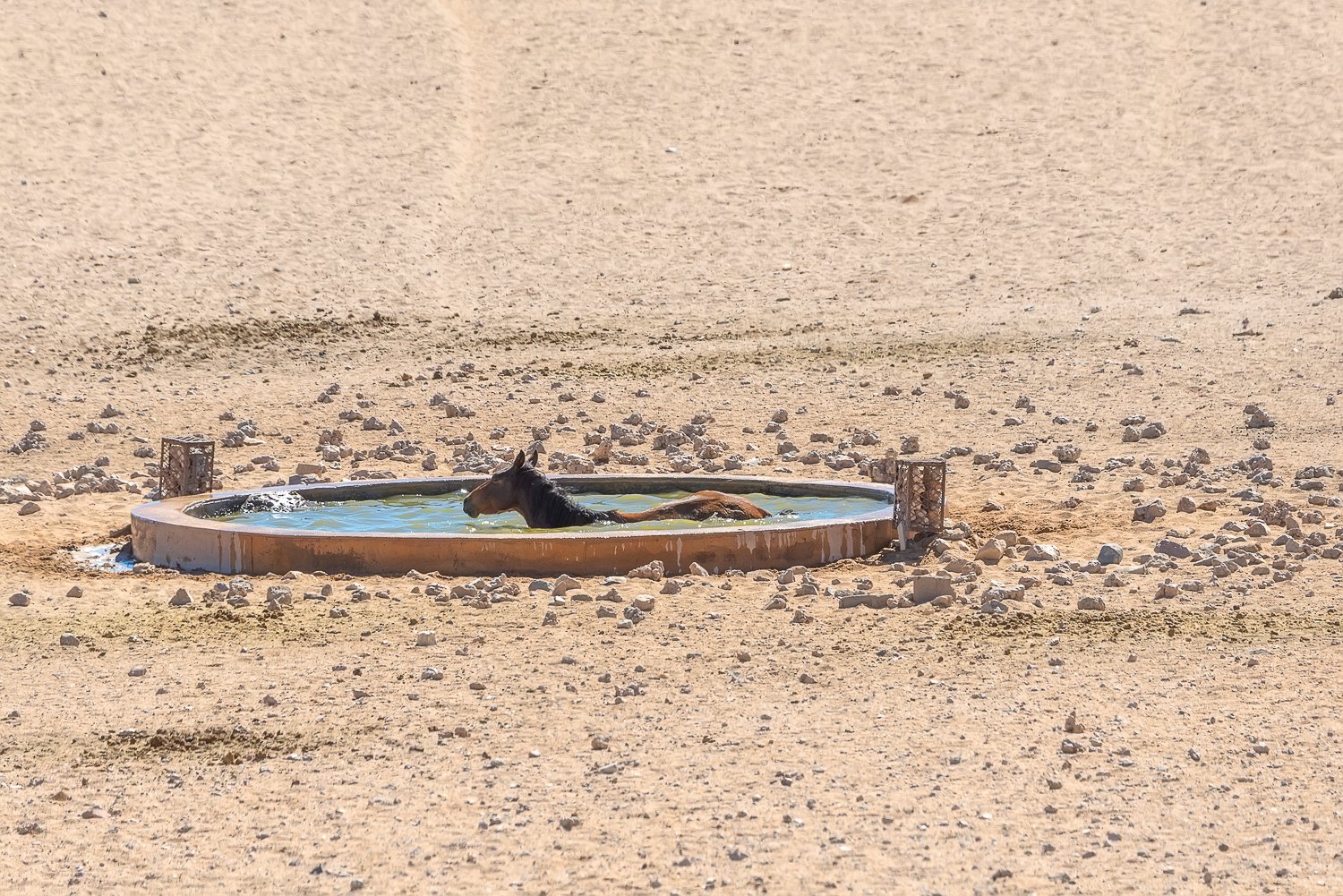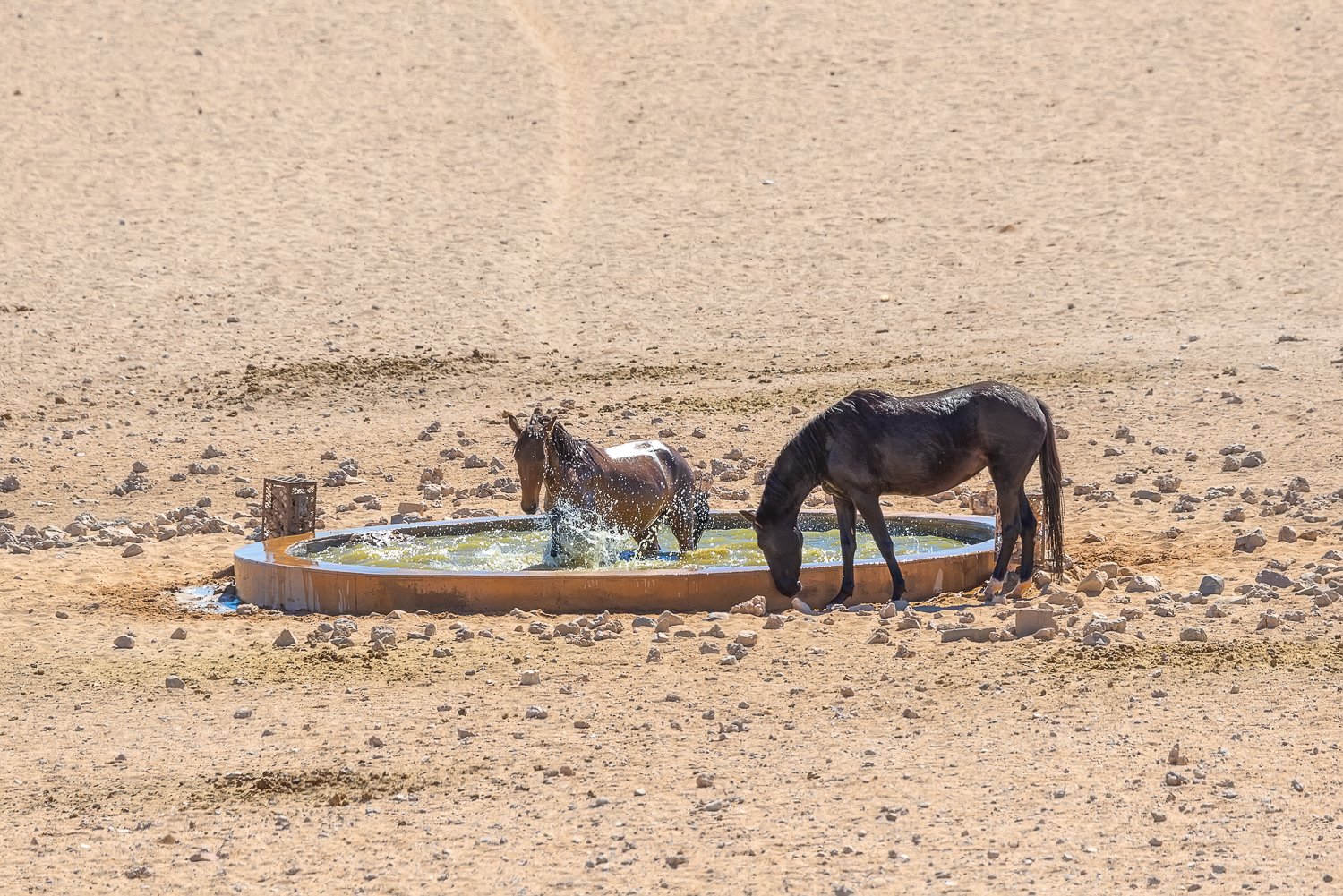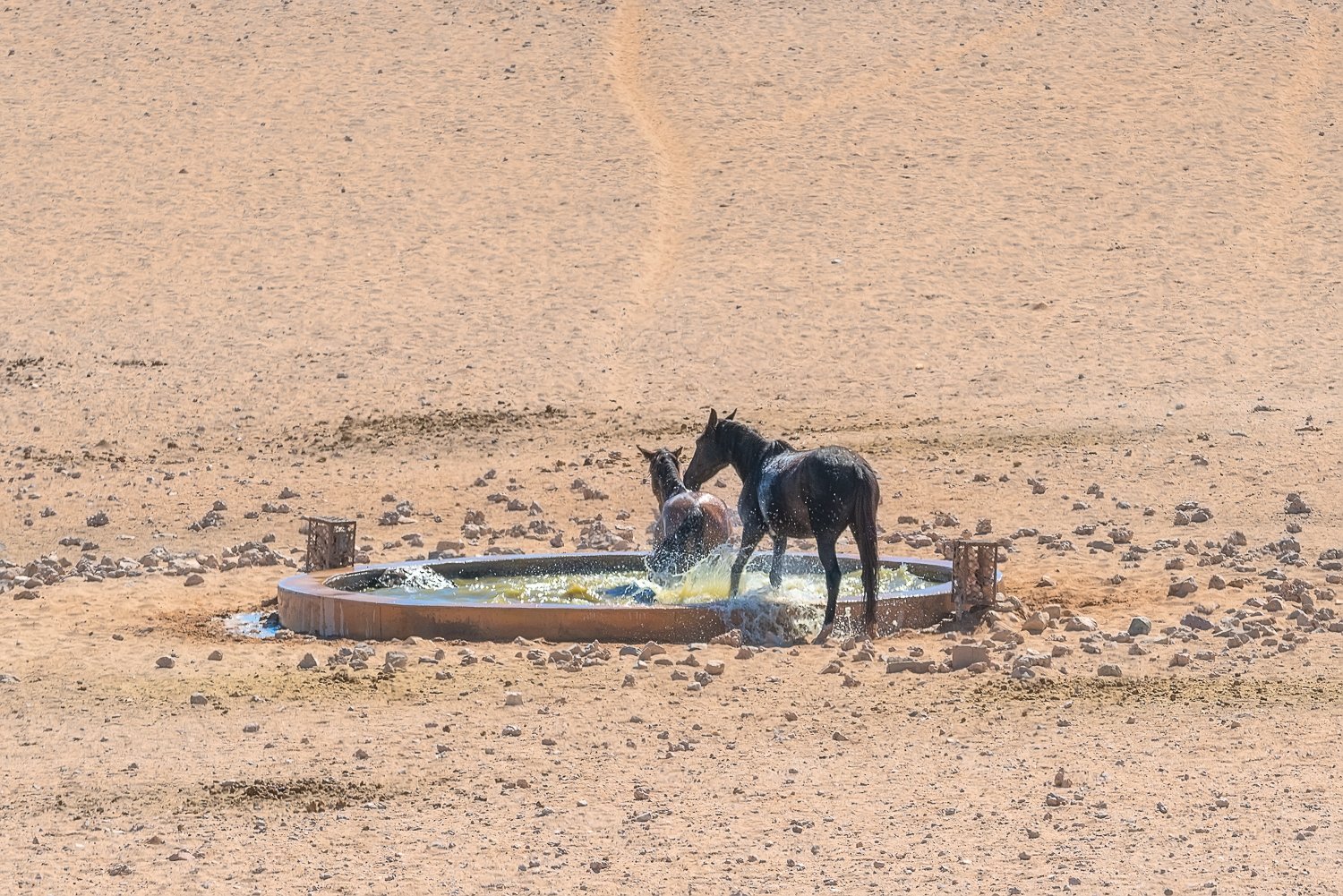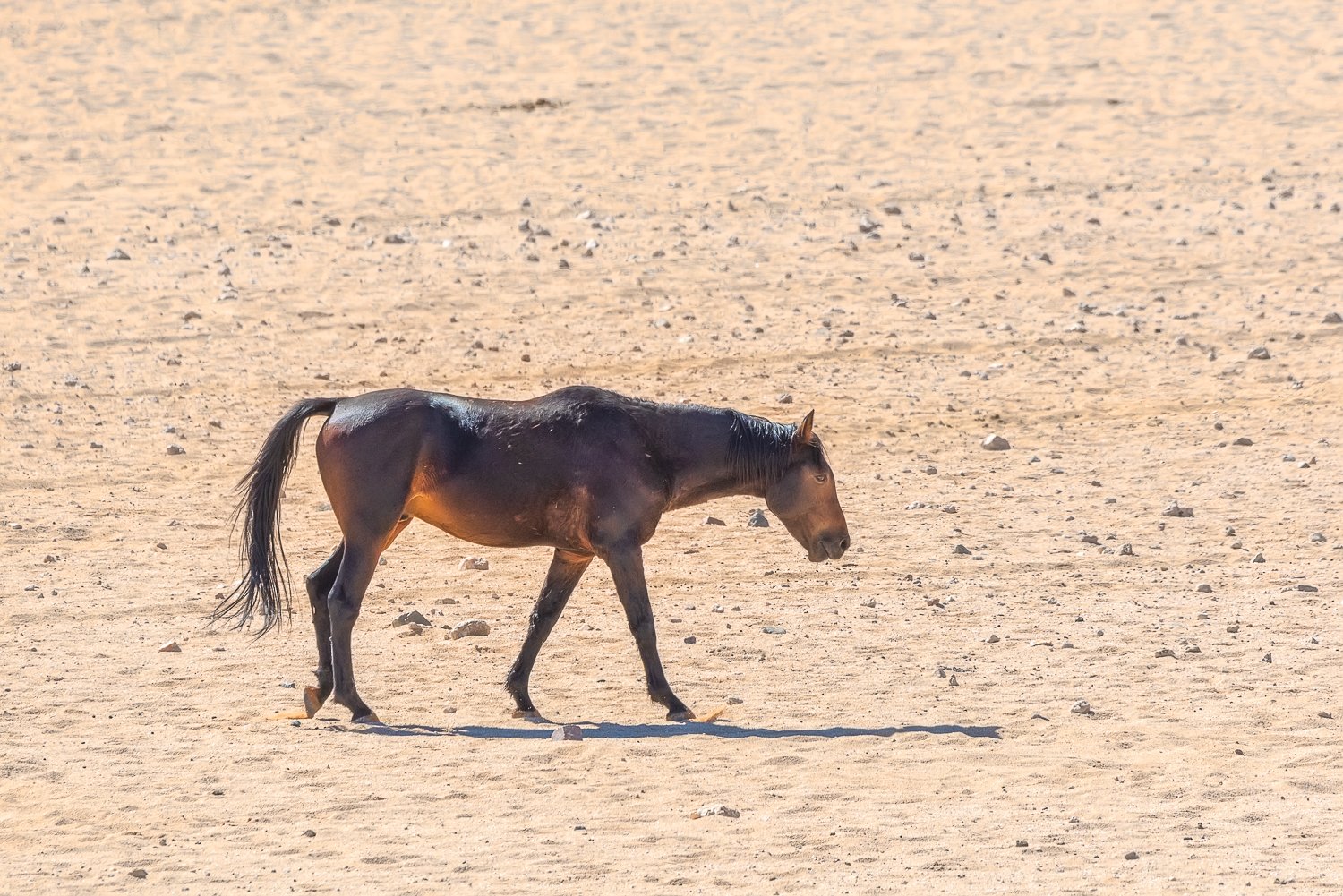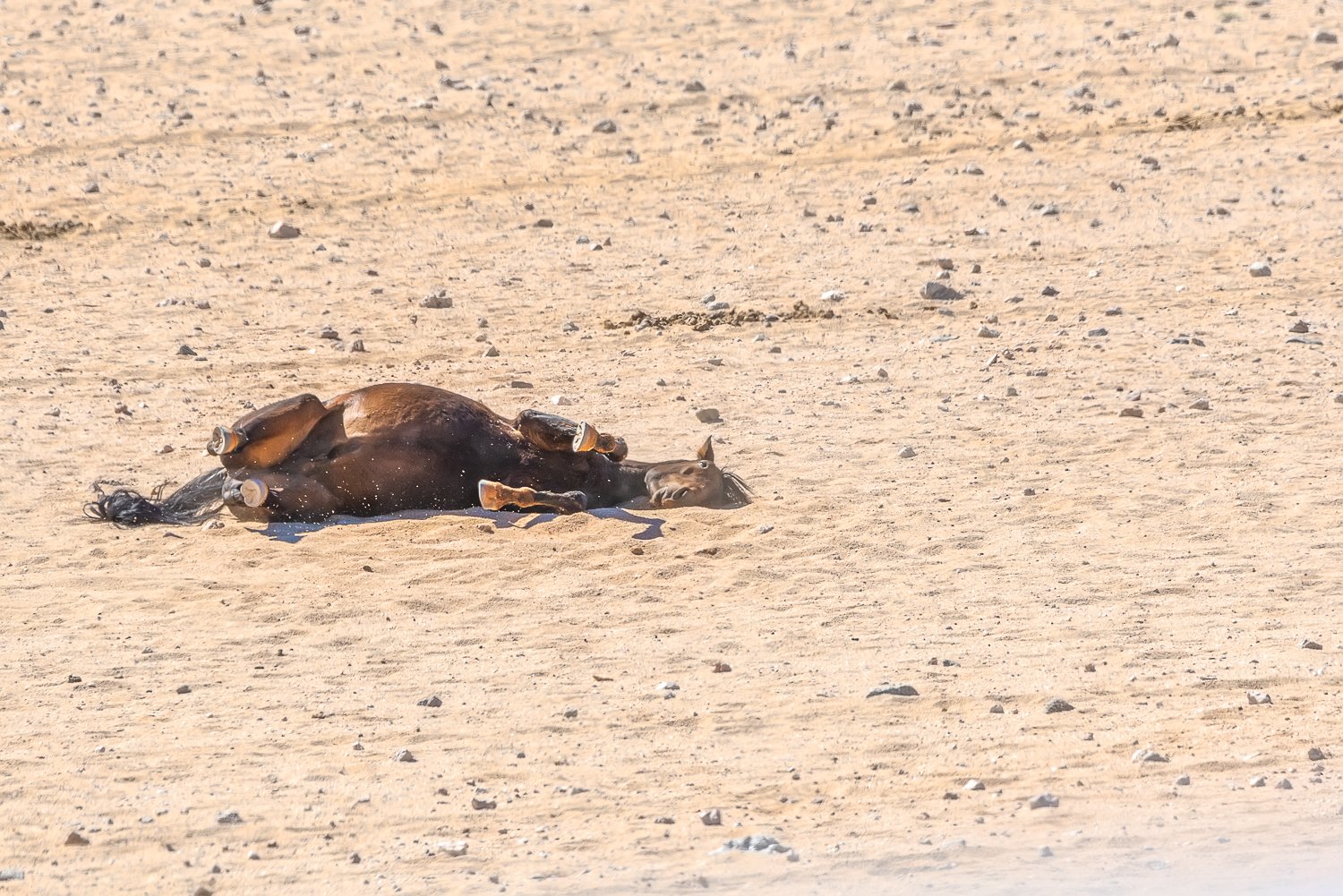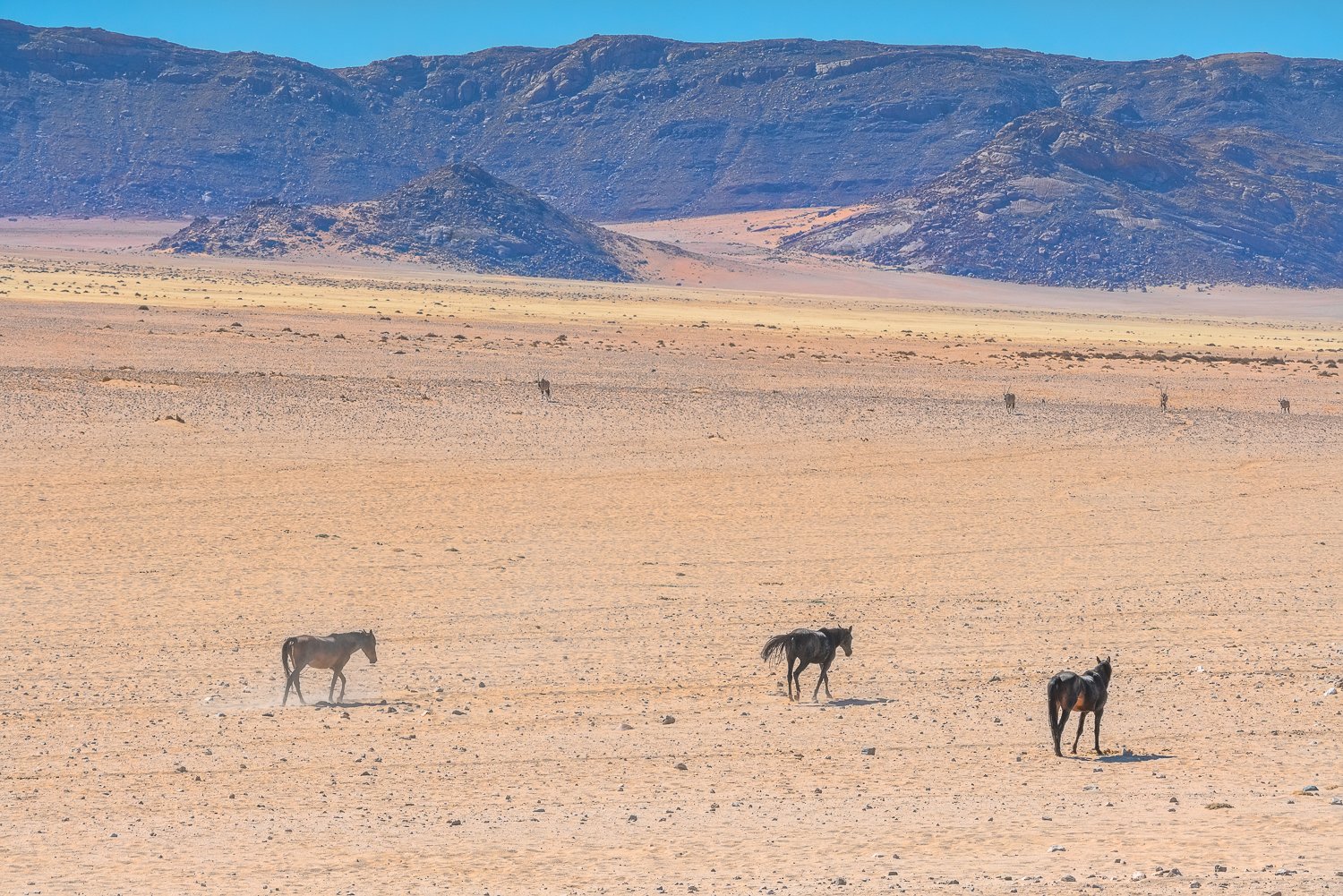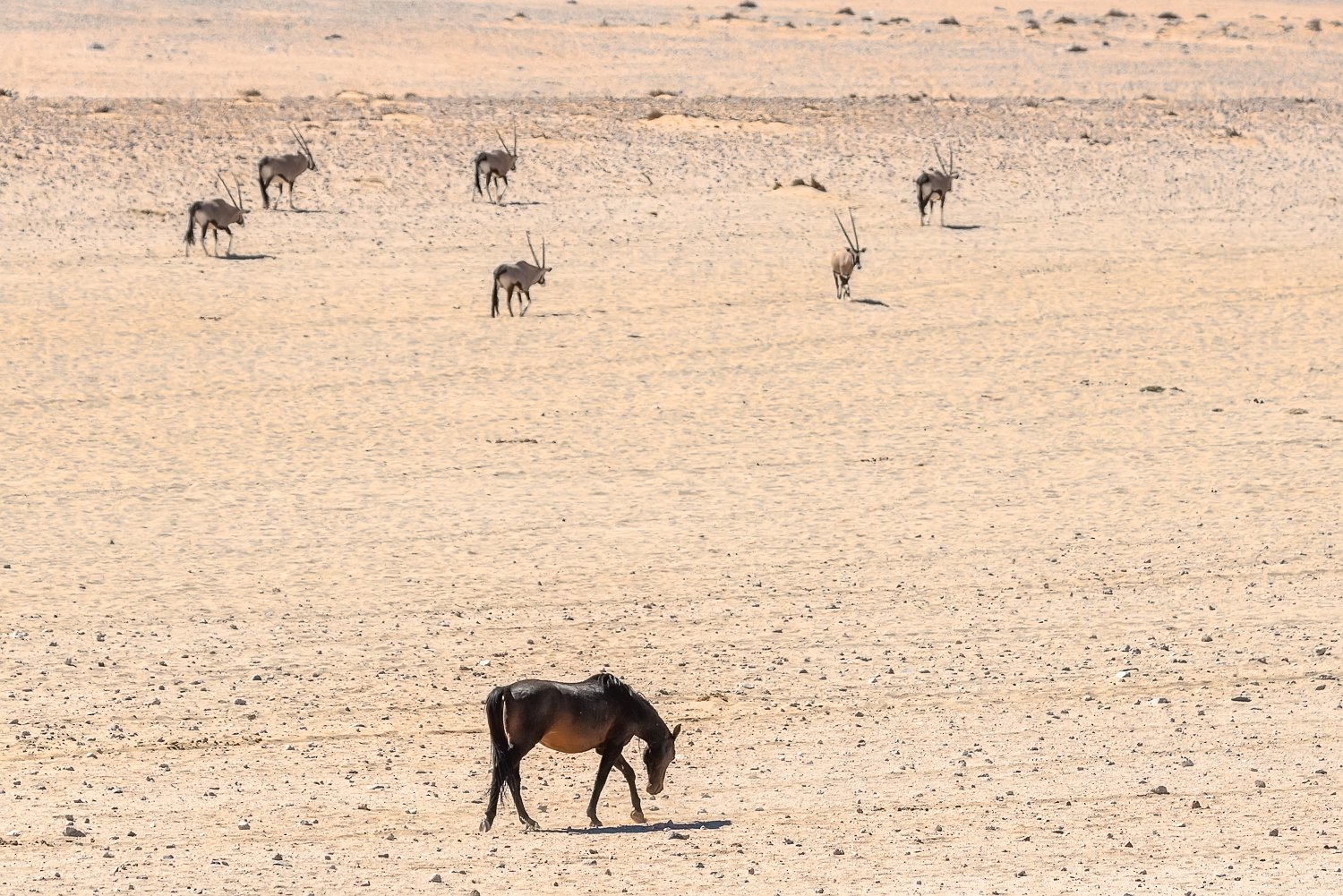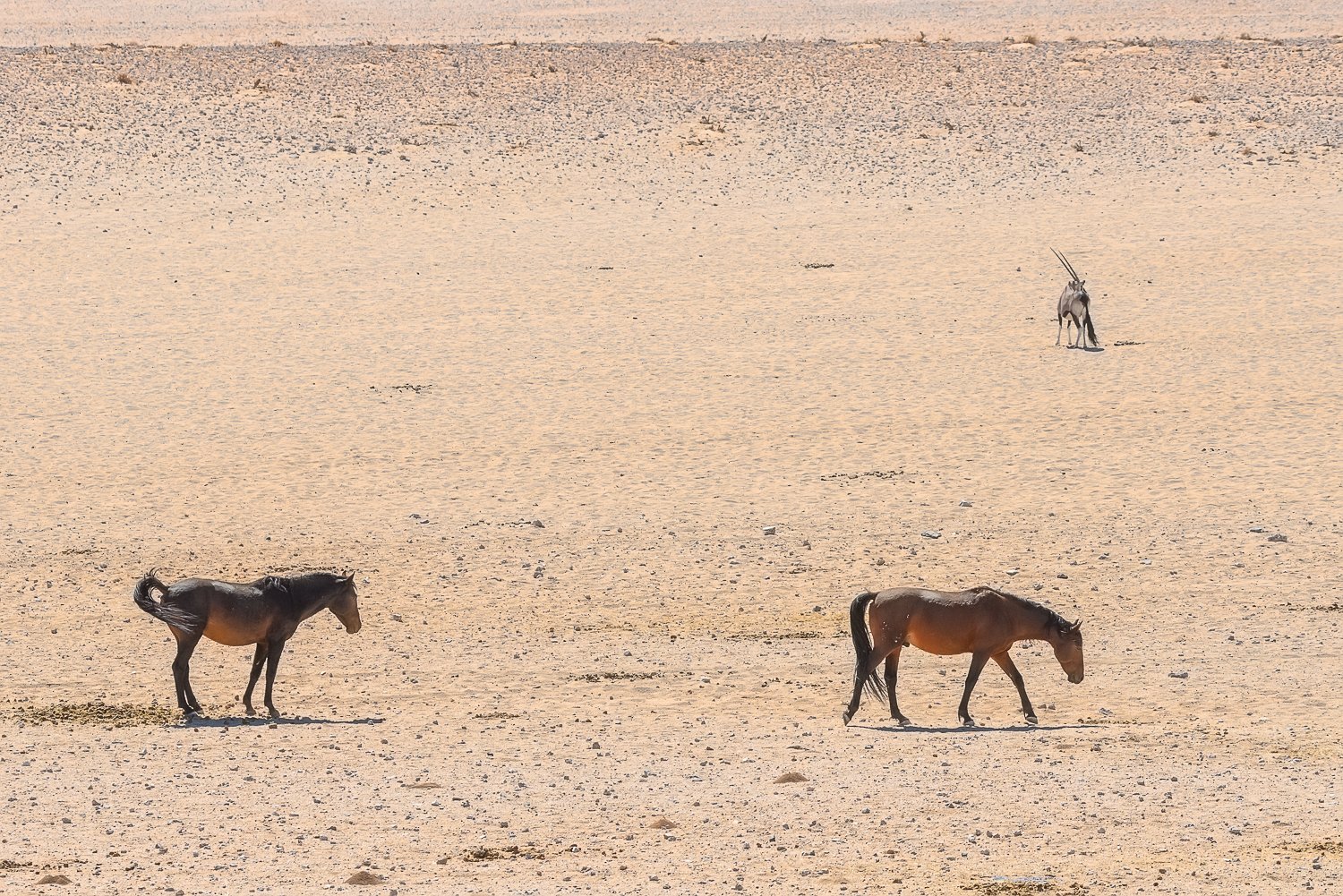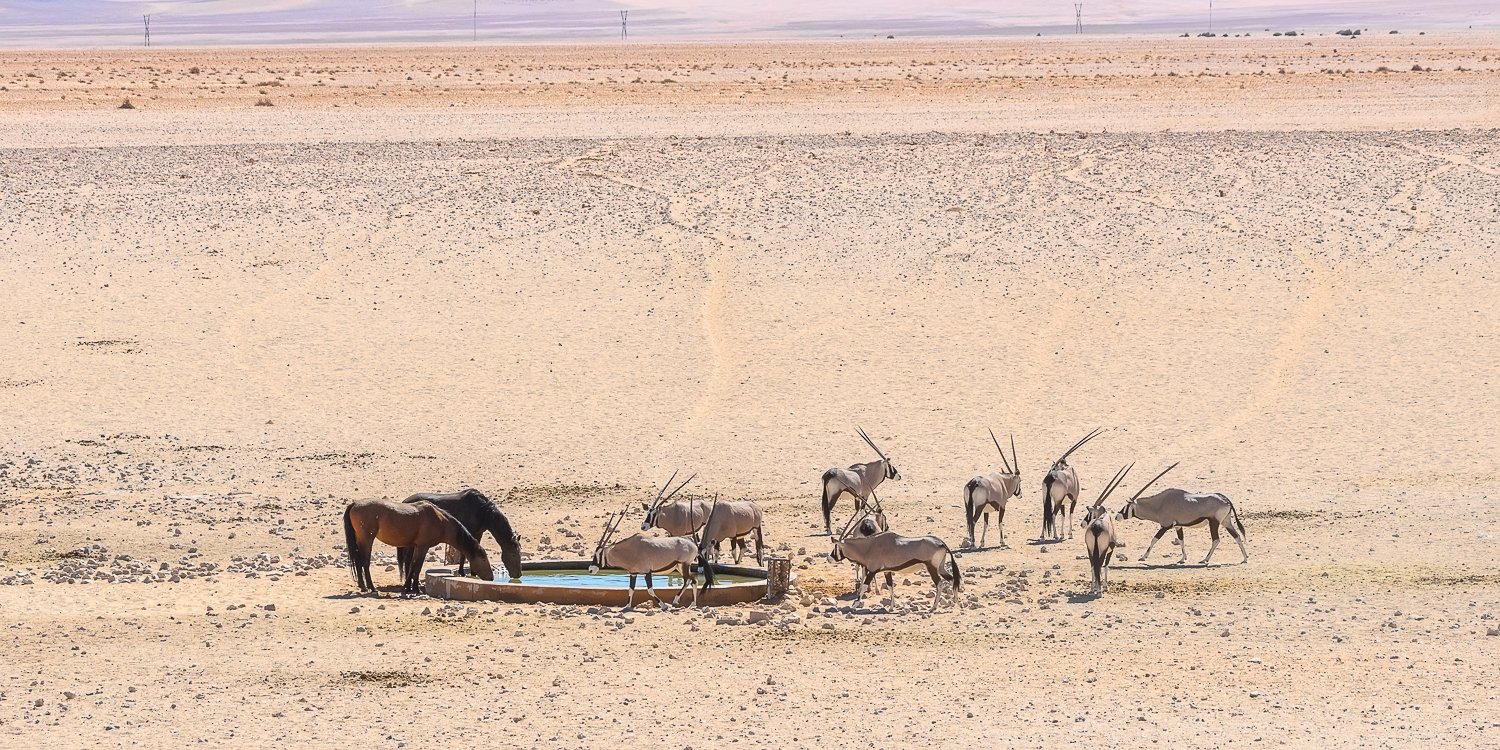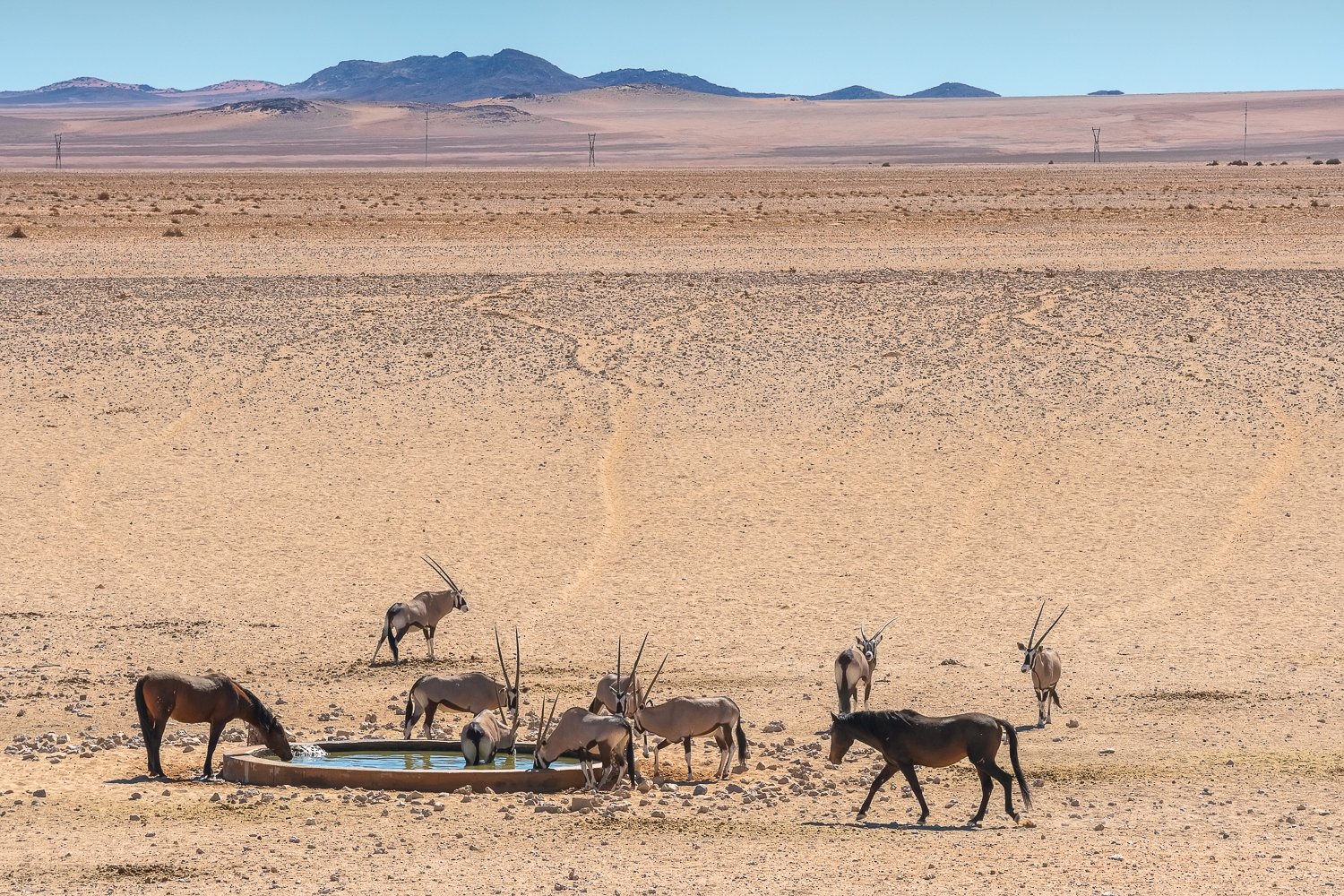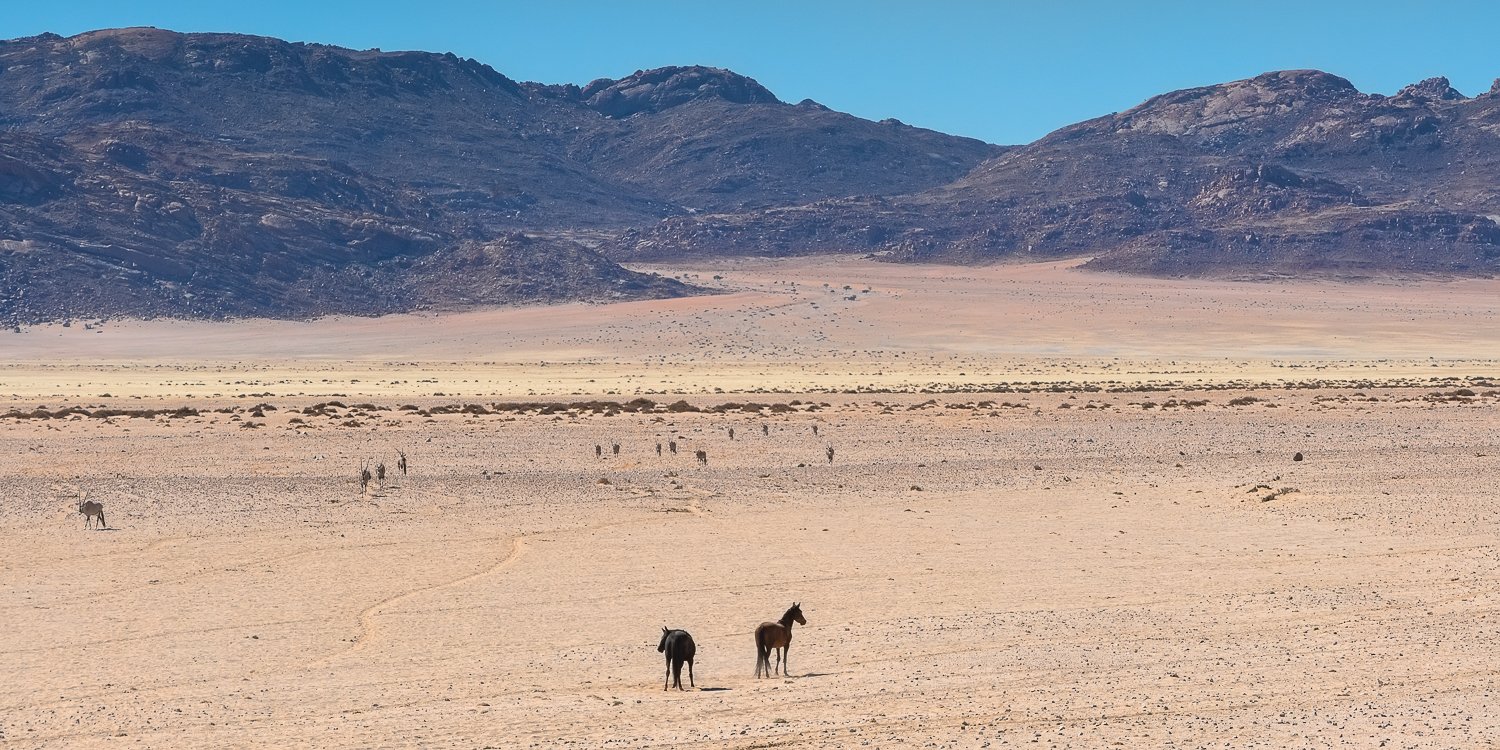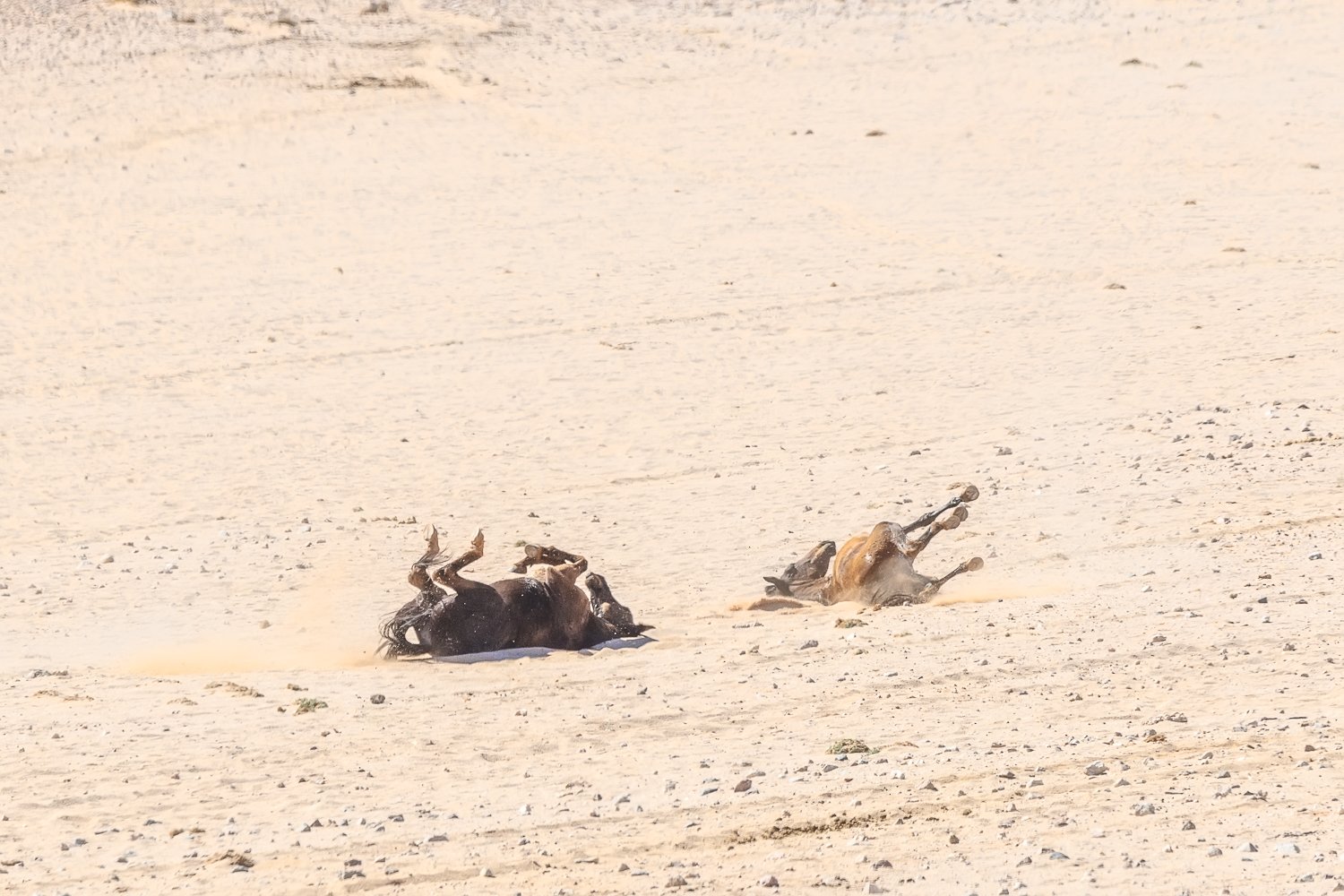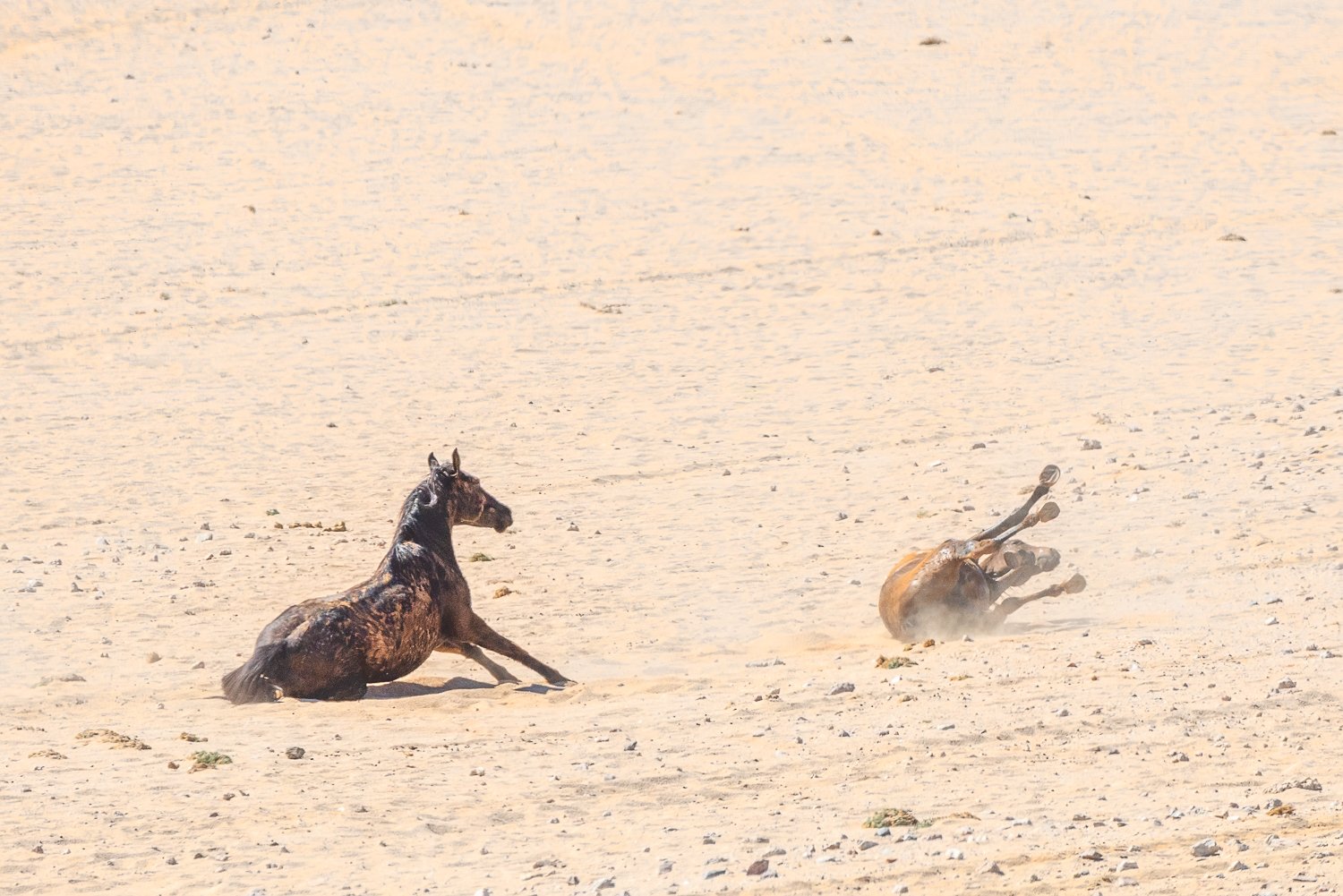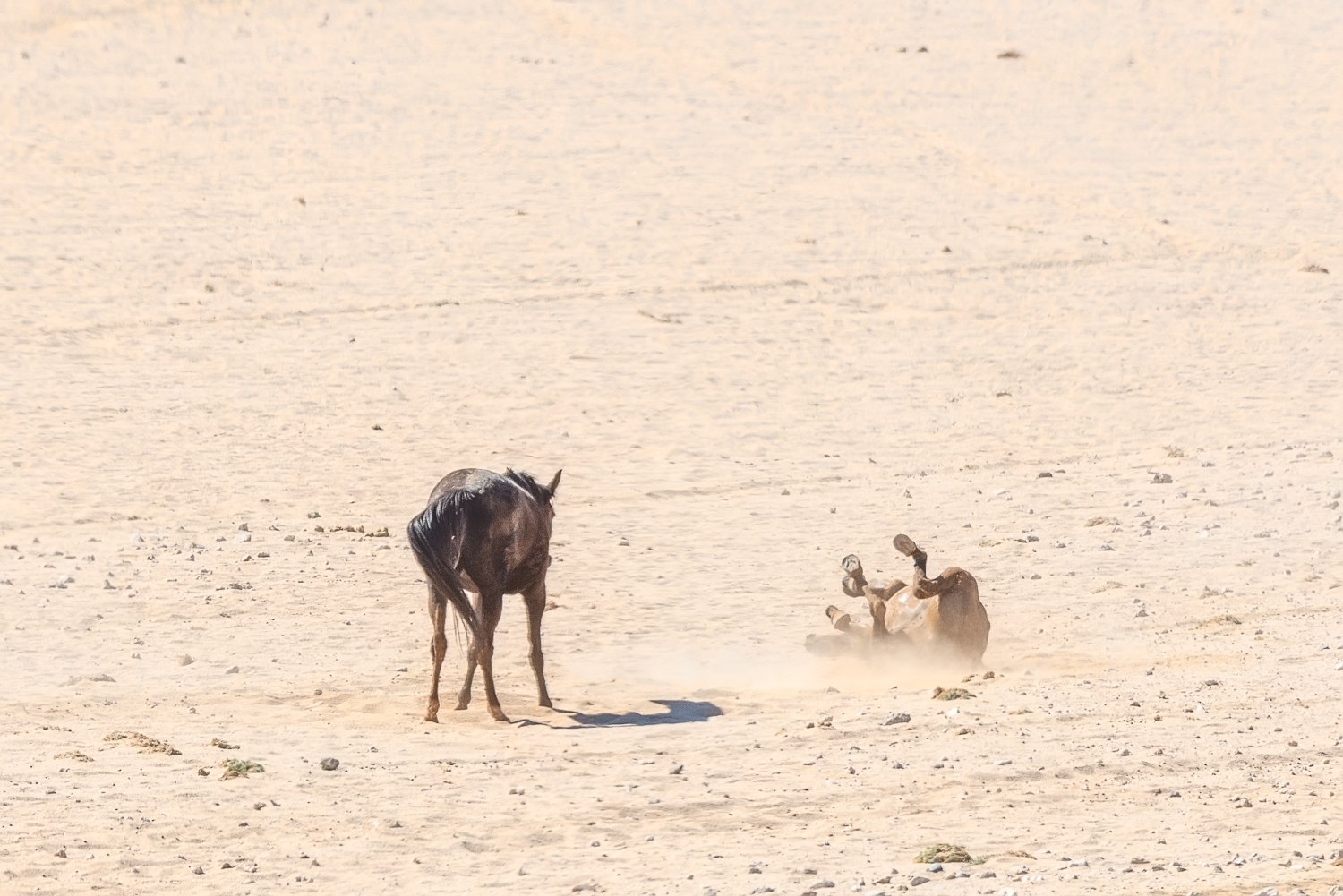The sun is getting lower when we finally enter the NamibRand Nature Reserve, where Wolvedans’ lodges are situated. NamibRand is one of the biggest private nature reserves in Africa (over 200 000 ha). It borders with the Namib-Naukluft National Park in the west and Numib Mountains in the east. The landscape varies, from sand and gravel plains and stretches of savanna to mountain ranges, and vegetated dune belts. The tourism here is low impact as the whole effort was put to biodiversity conversation, for once animals seem to be more important than visitors’ whims. Not that visitors are not spoiled rotten here, it is just that the owners pay a lot of attention to how it is done. There are no fences here to allow the wildlife roaming their habitat unhindered. The predominant large mammals are gemsbok (oryx, over 3000) and springbok (over 12 000), but there is also kudu, Hartman's and Burchell's zebra, giraffe, klipspringer, steenbok, hartebeest and baboon, plus predators, such as leopard, spotted and brown hyena, black-backed jackal, aardwolf, bat-eared fox, Cape fox, African wildcat, caracal and genet, lots of birds, rodents, reptiles, amphibians and invertebrates.
Interestingly, the reserve has been designated a Gold Tier International Dark Sky Reserve by the International Dark-Sky Association.
Traveling through the reserve, as we get to the Wolvedans we have already encounter a lot of animals, the most excited I am about jackals, but mating zebras are fun to observe, too.
Słońce schodzi coraz niżej, kiedy w końcu wjeżdżamy do rezerwatu przyrody NamibRand, gdzie znajdują się lodżeWolvedans. NamibRand to jeden z największych prywatnych rezerwatów przyrody w Afryce (ponad 200 000 ha). Graniczy on z Parkiem Narodowym Namib-Naukluft na zachodzie i górami Numib na wschodzie. Krajobraz jest zróżnicowany, od piaszczystych i żwirowych równin i połaci sawanny po pasma górskie i porośnięte roślinnością pasy wydm. Turystyka tutaj ma minimalny wpływ na środowisko i dużo wysiłku włożono w ochronę bioróżnorodności – chociaż raz zwierzęta wydają się ważniejsze niż zachcianki odwiedzających. Nie żeby goście nie byli tu rewelacyjnie traktowani, po prostu właściciele przykładają dużą wagę, by robić to bez uszczerbku dla natury. W rezerwacie nie ma żadnych ogrodzeń, dzięki czemu dzikie zwierzęta swobodnie wędrują po całym obszarze (a także poza rezerwat). Dominującymi dużymi ssakami są oryksy (ponad 3000 sztuk) i antylopy skoczniki (ponad 12 000), ale występuje tu także kudu, zebry Hartmana i Burchella, żyrafy, klipspringery (koziołki skalne), koziorożce alpejskie, bawolce i pawiany oraz drapieżniki, takie jak lampart, hiena cętkowana i hiena brunatna, szakal czarnogrzbiety, protel grzywiasty, lis przylądkowy, otocjon wielkouchy, żbik afrykański, karakal i żeneta, różne gatunki ptaków, gryzonie, gady, płazy i bezkręgowce.
Co ciekawe, rezerwat został uznany przez Międzynarodowe Stowarzyszenie Ciemnego Nieba za Międzynarodowy Rezerwat Ciemnego Nieba Złotego Poziomu (najwyższe standardy utrzymania nieba bez zanieczyszczeń świetlnych).
Jadąc przez rezerwat zanim dotrzemy na miejsce, spotykamy już wiele zwierząt. Najbardziej ekscytujące jest spotkanie z szakalami, ale zebry zajęte produkcją kolejnych zebr też są fajne do obserwowania.
About the camp I will write a bit later on, we had a very nice dinner tonight but it was so dark no decent pictures could be made. Mobile phone to the rescue.
O Wolvedans napiszę trochę później, mieliśmy dziś bardzo fajną kolację, ale było tak ciemno, że nie można było zrobić przyzwoitych zdjęć. iPhone na ratunek.

